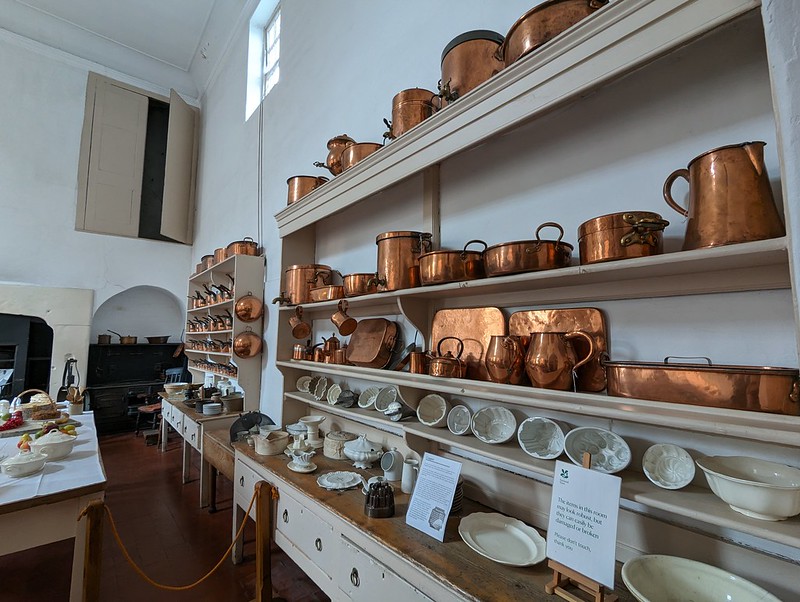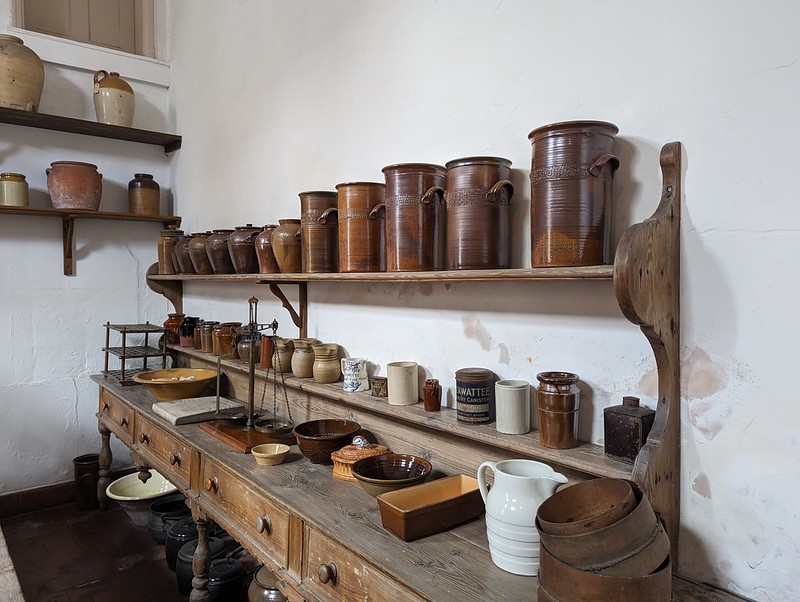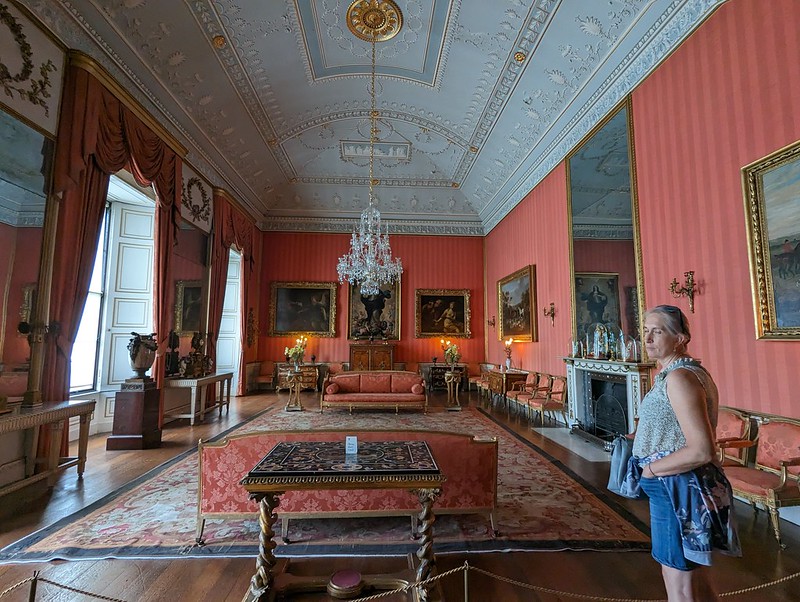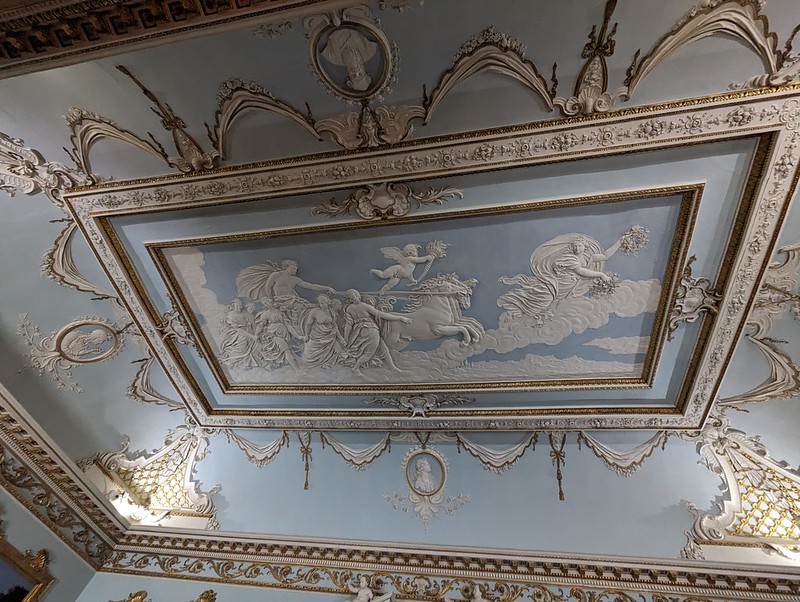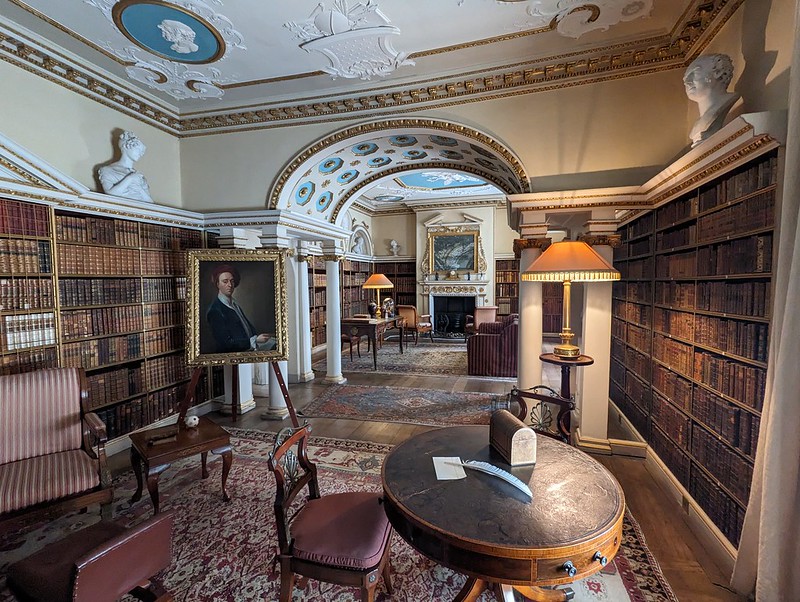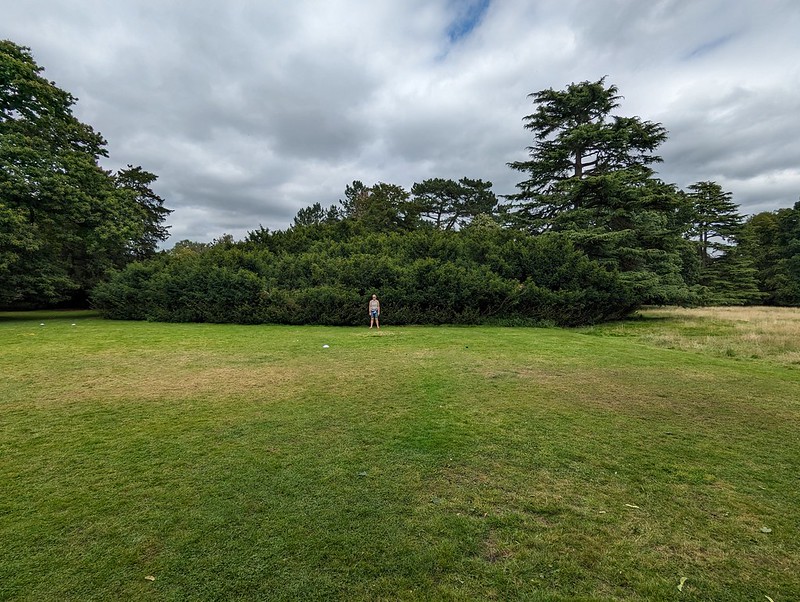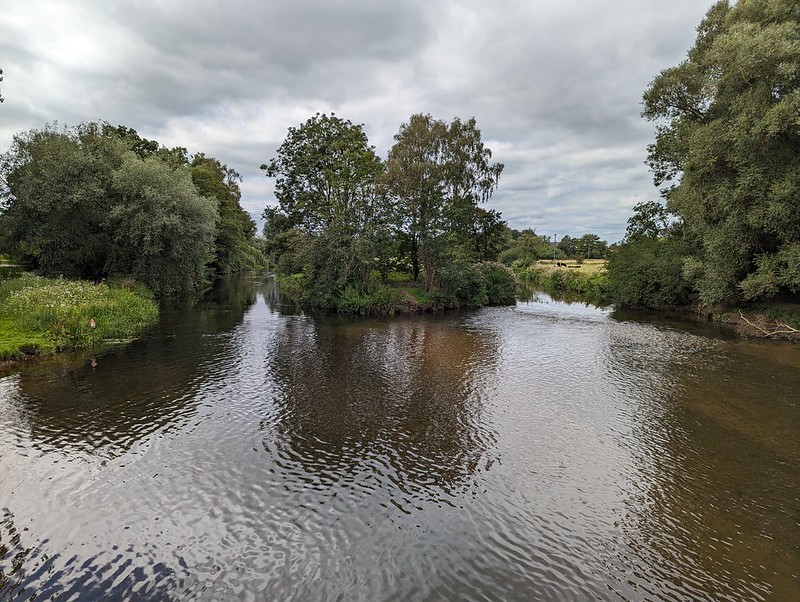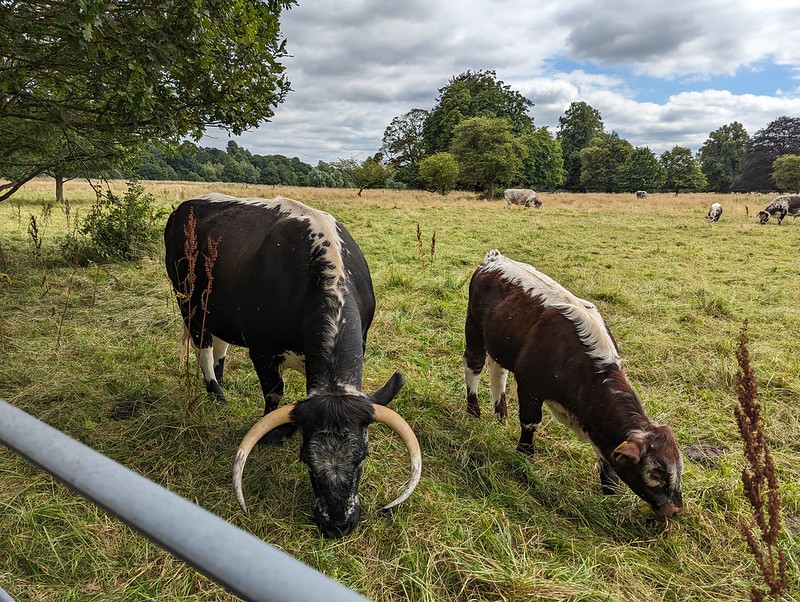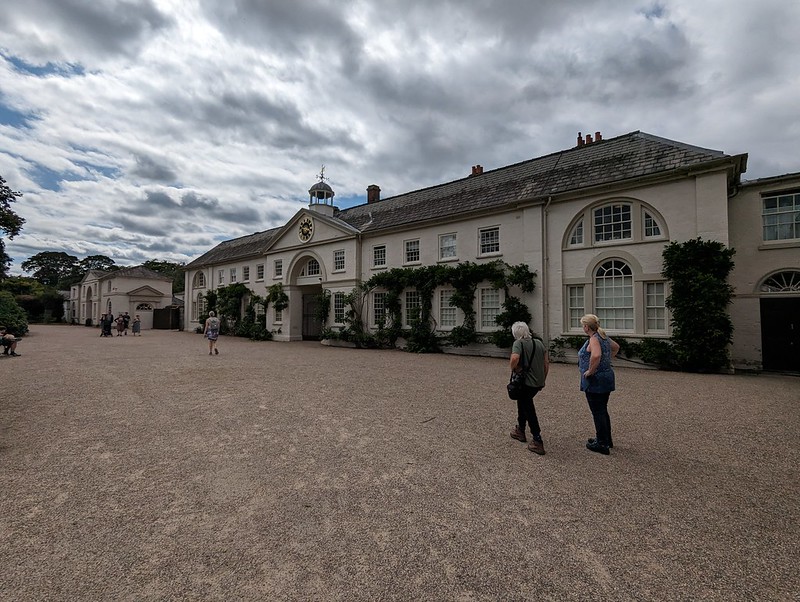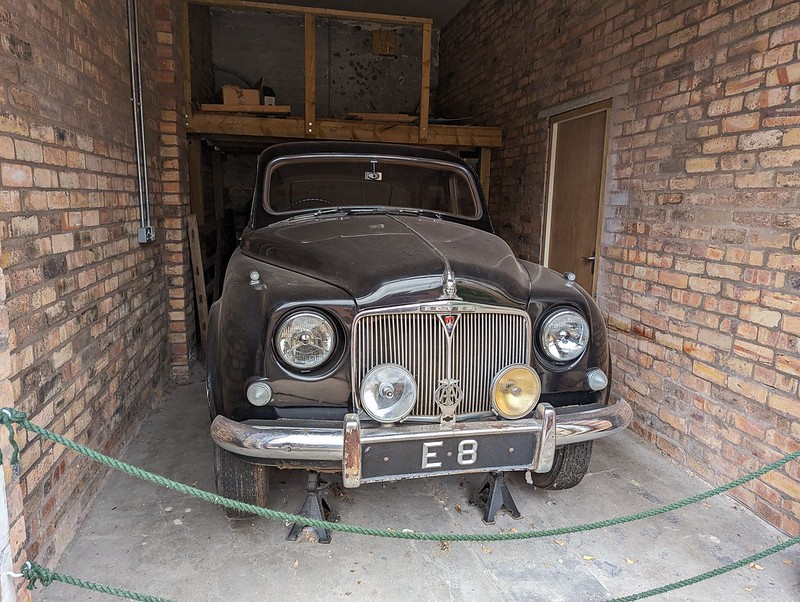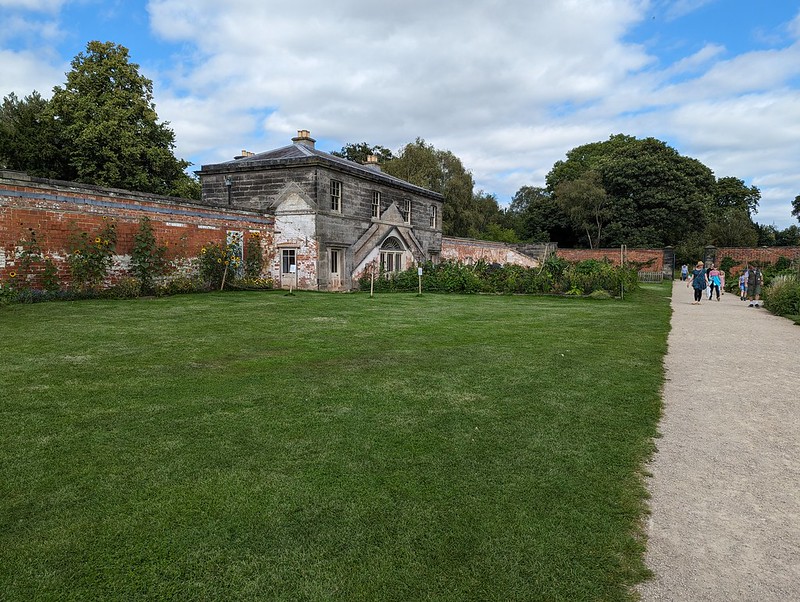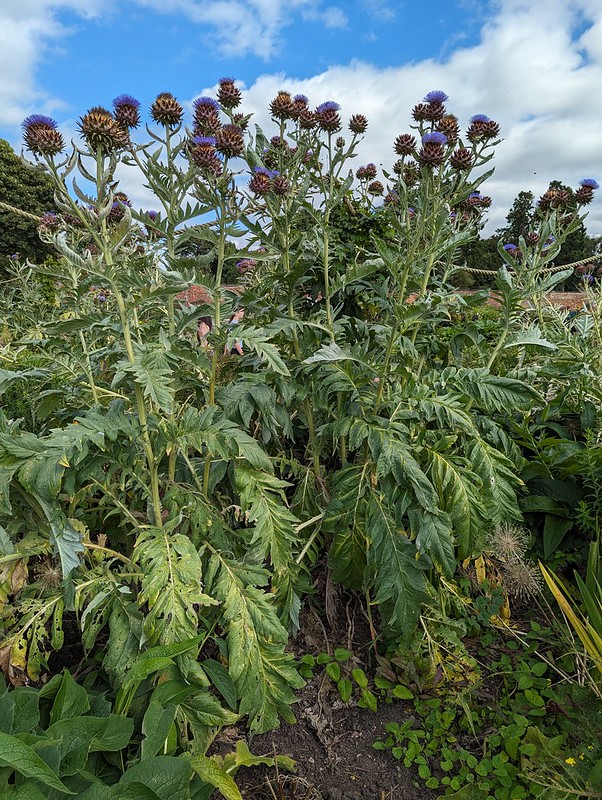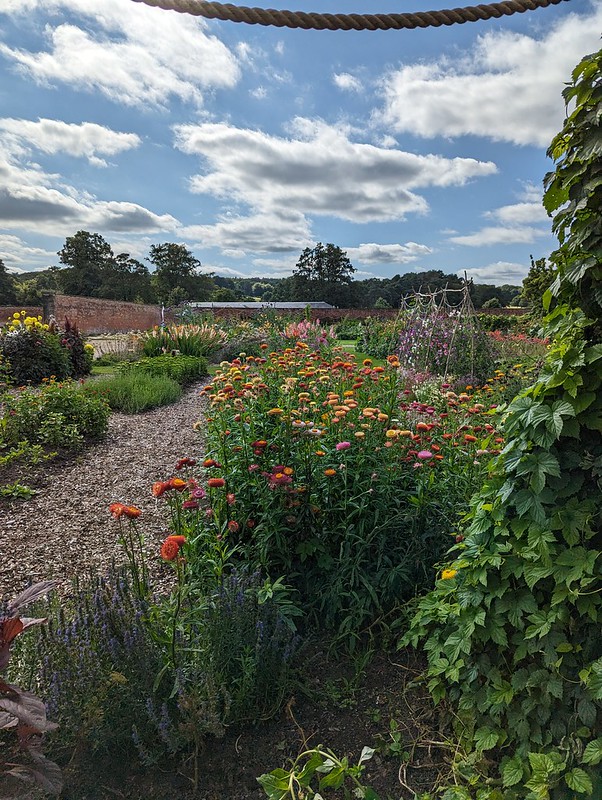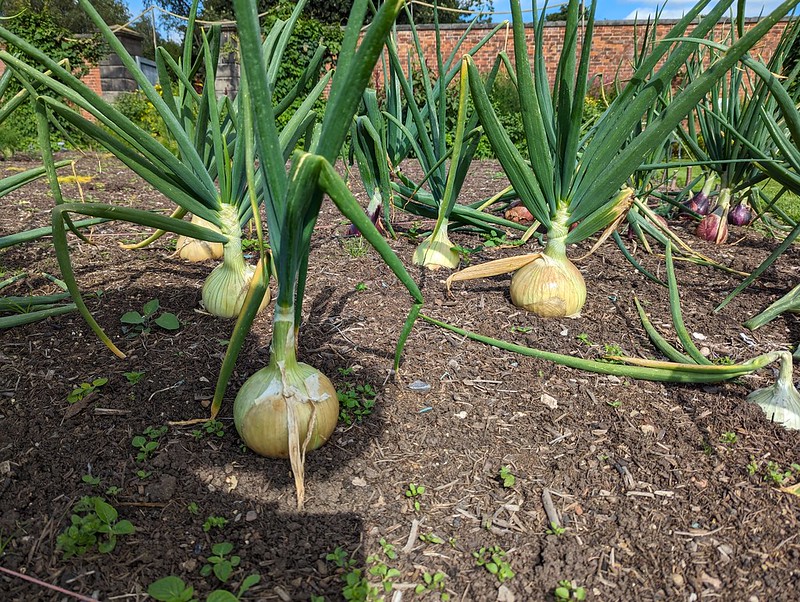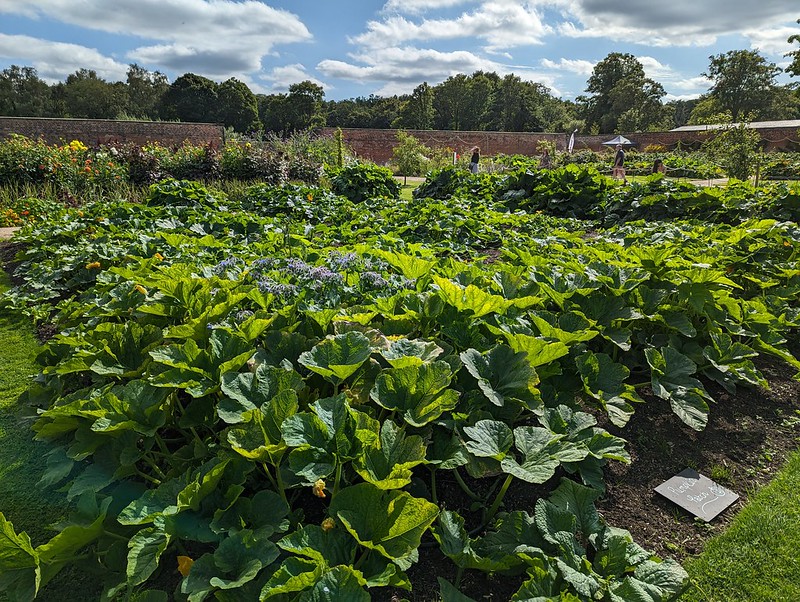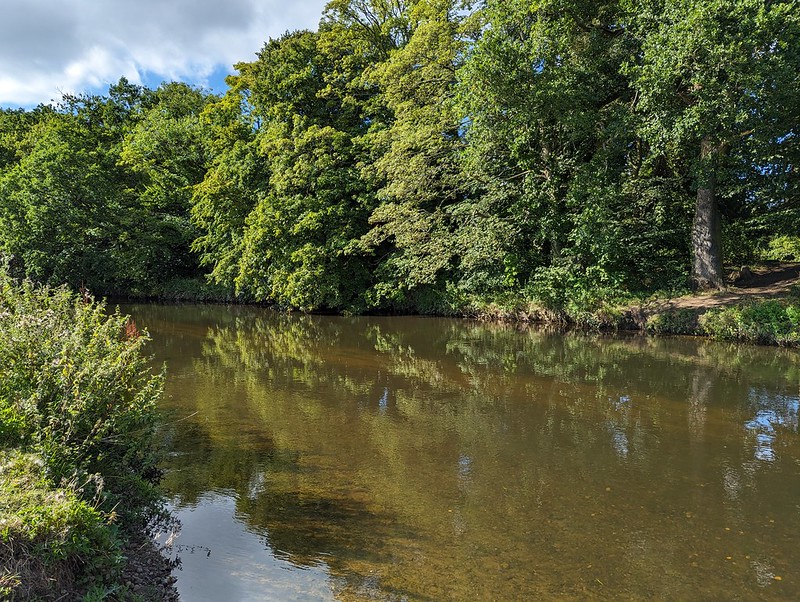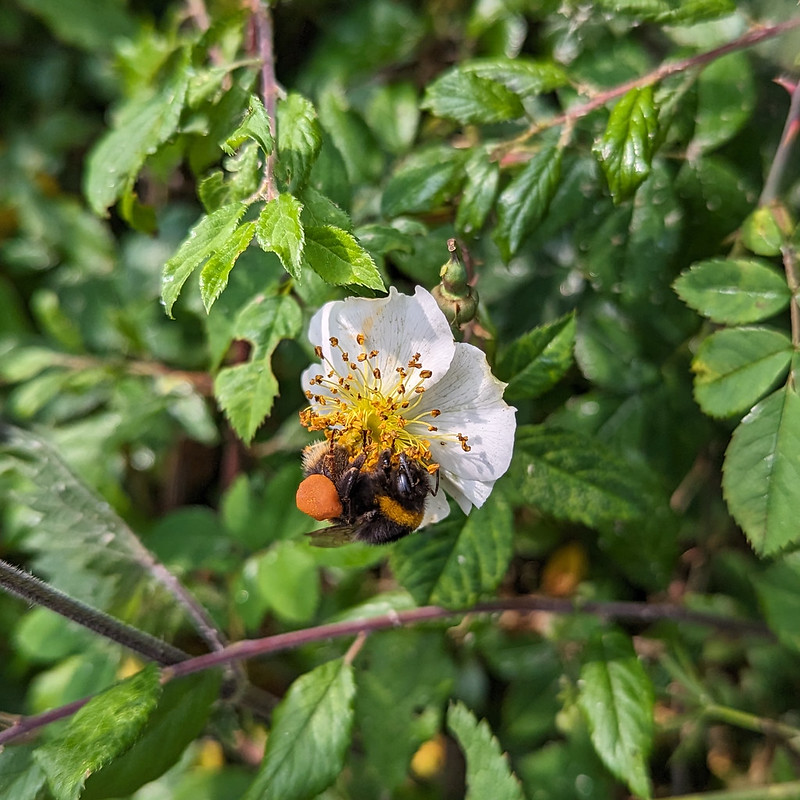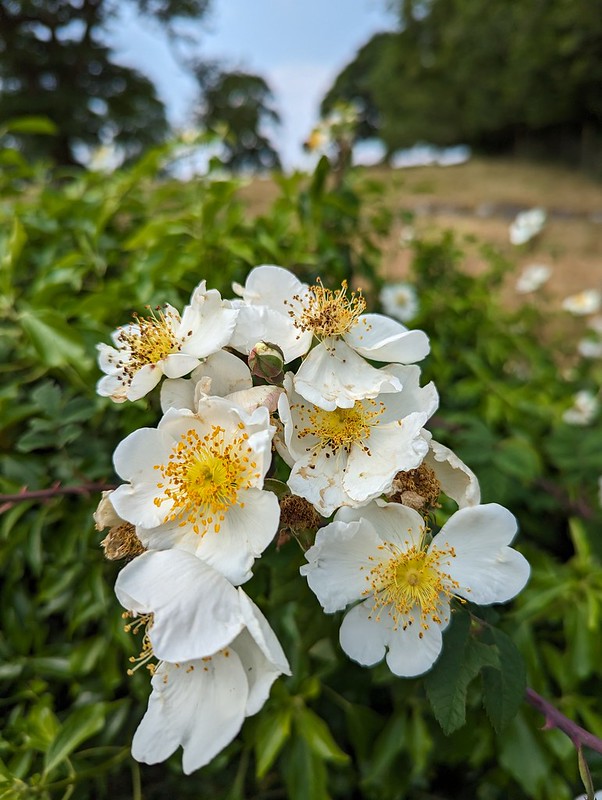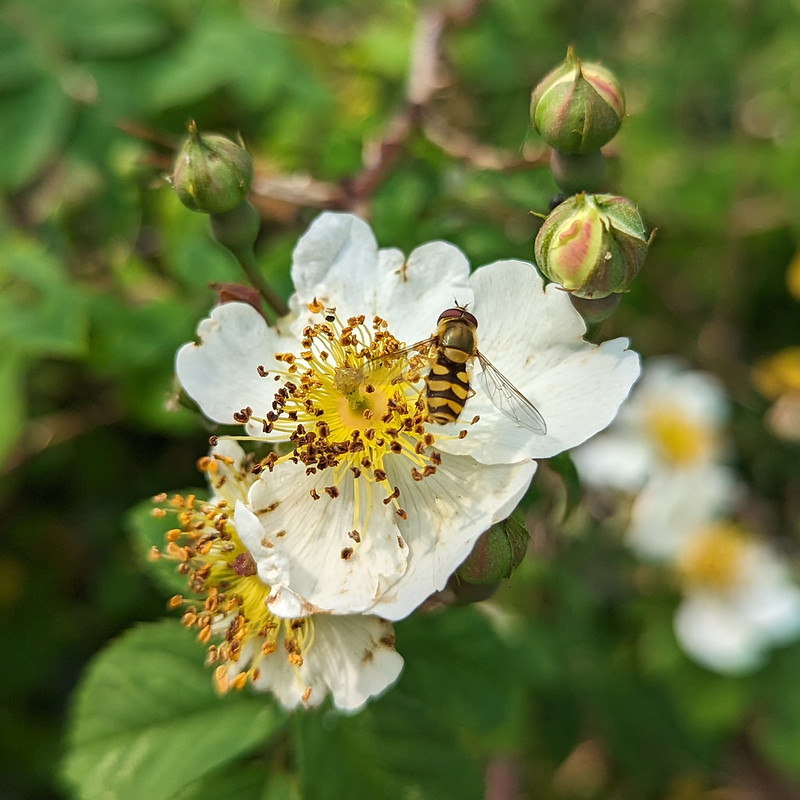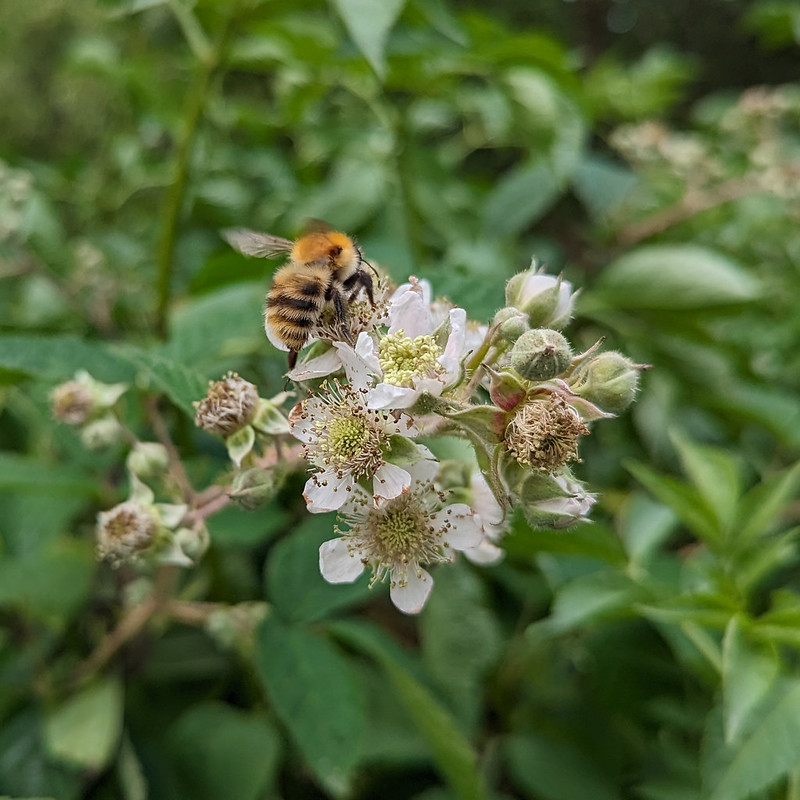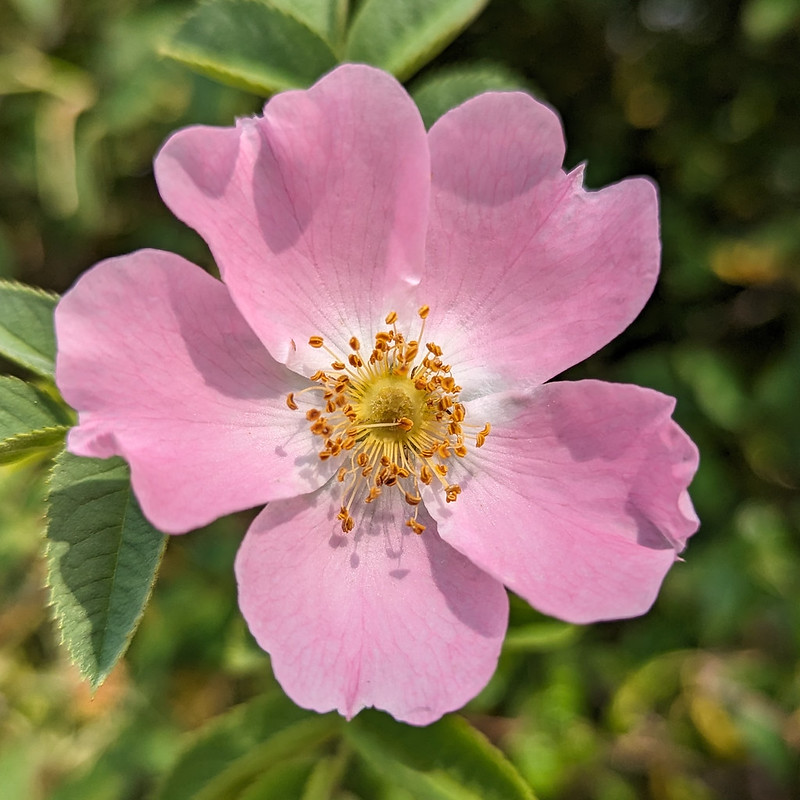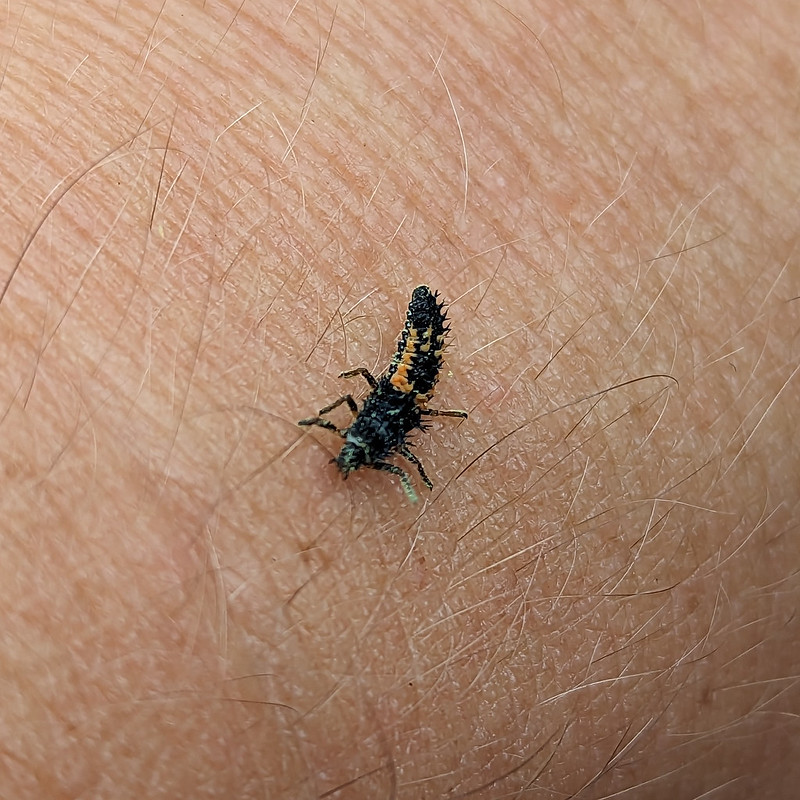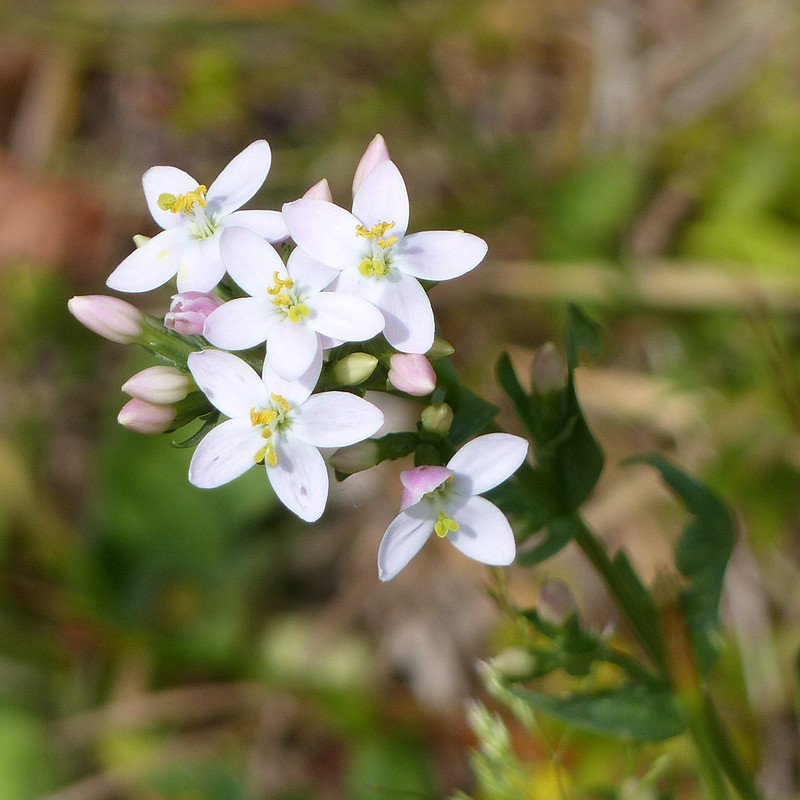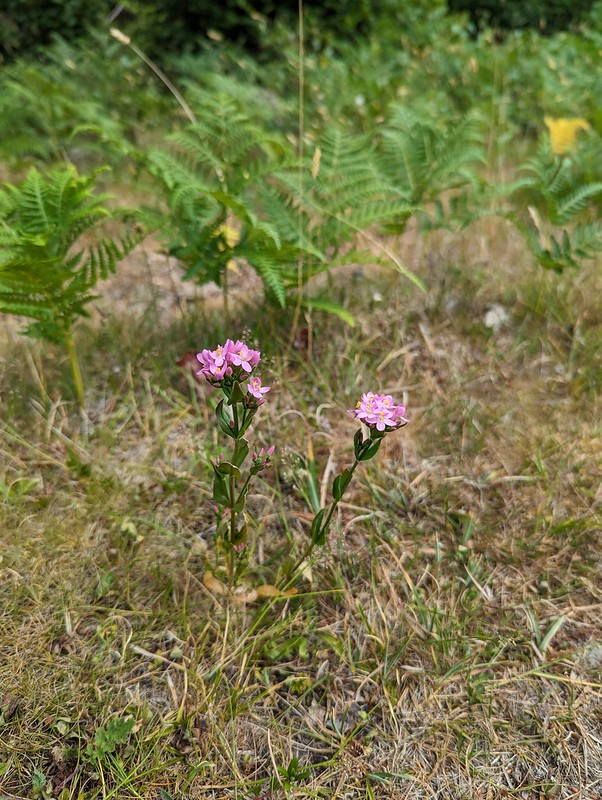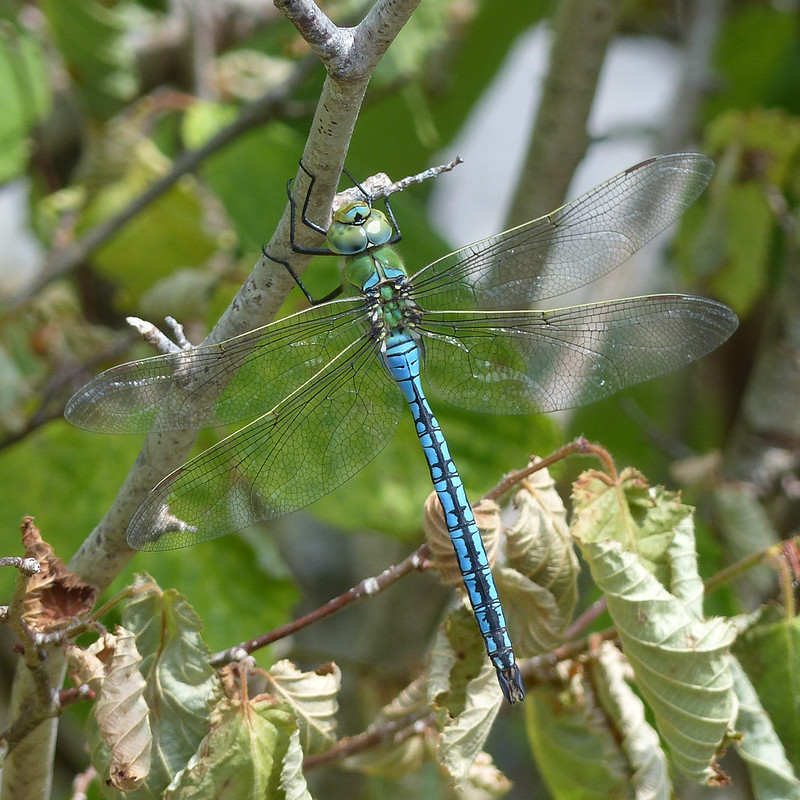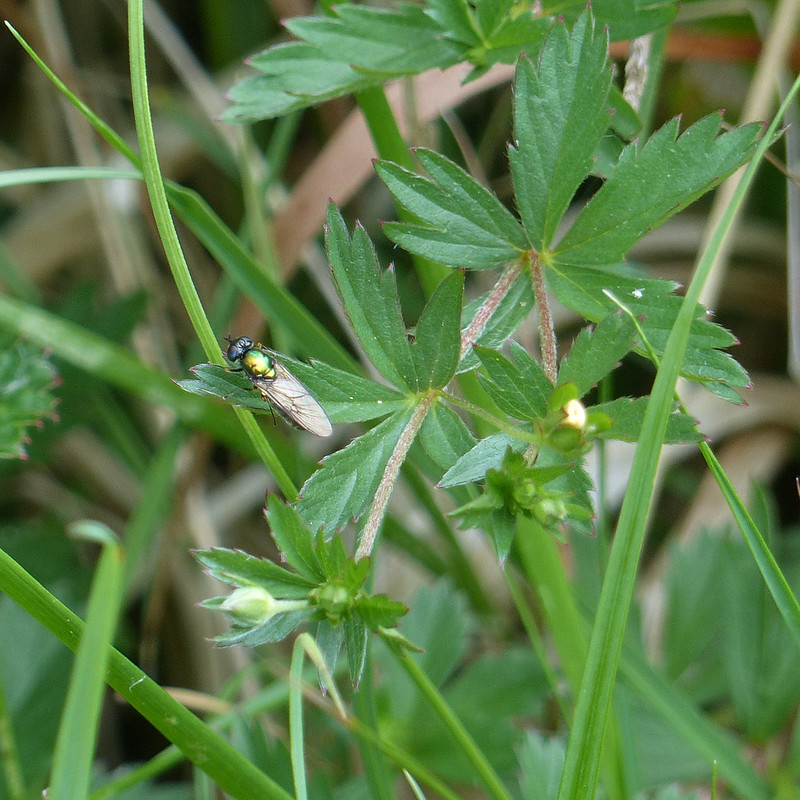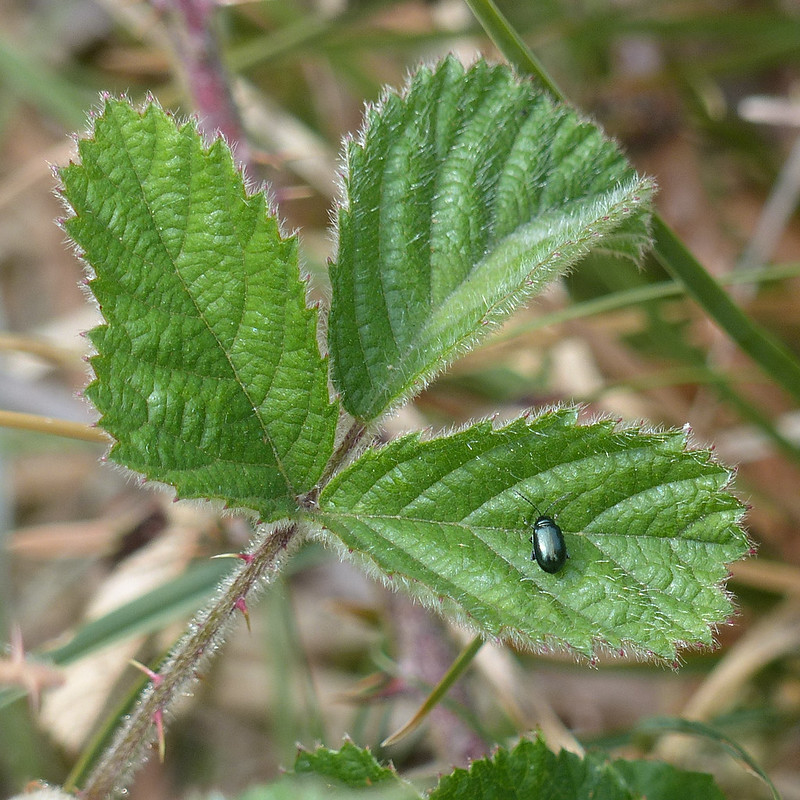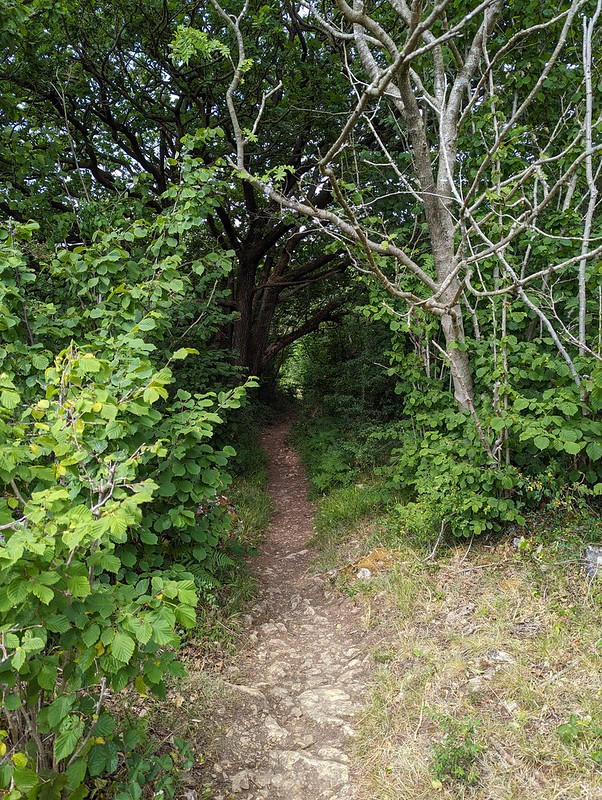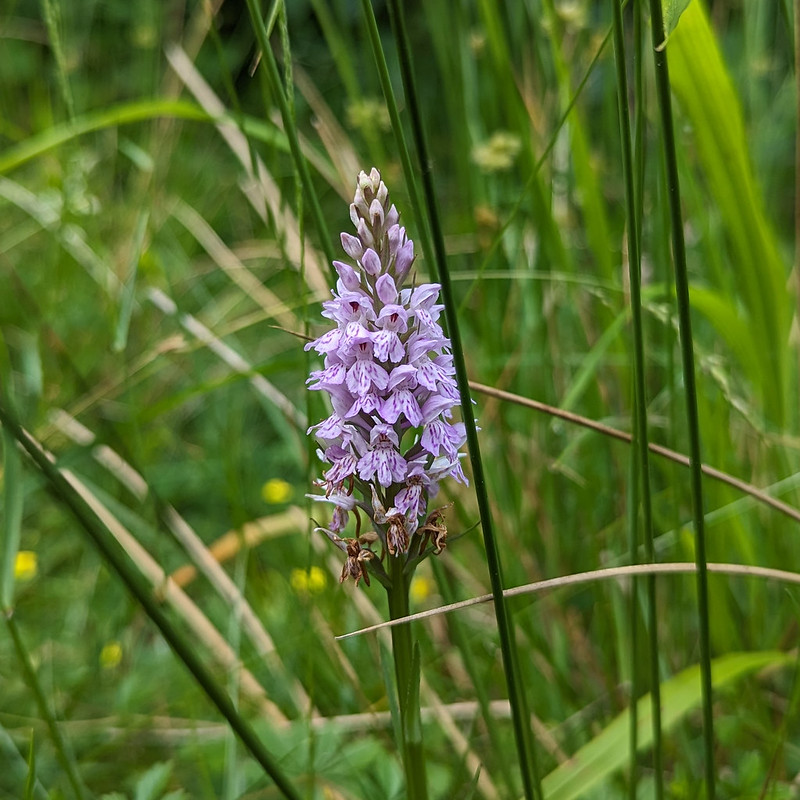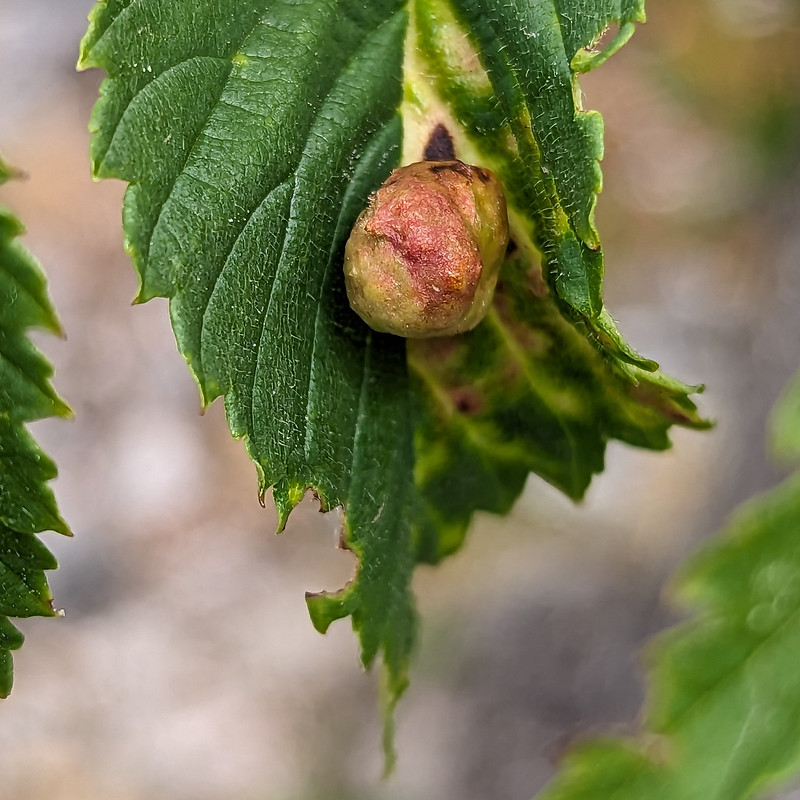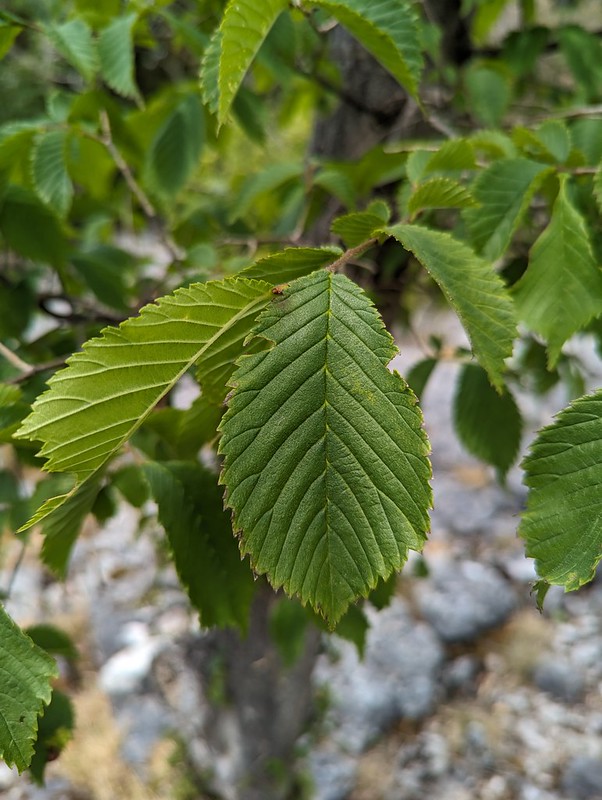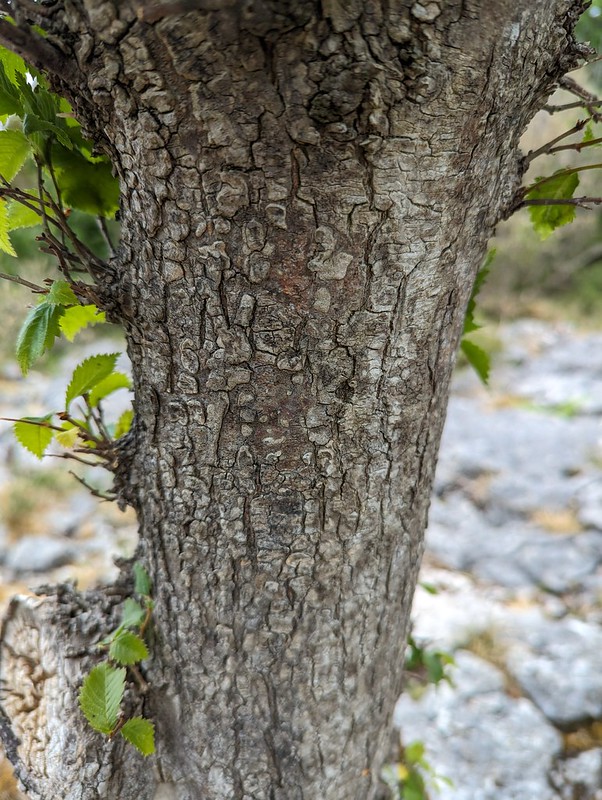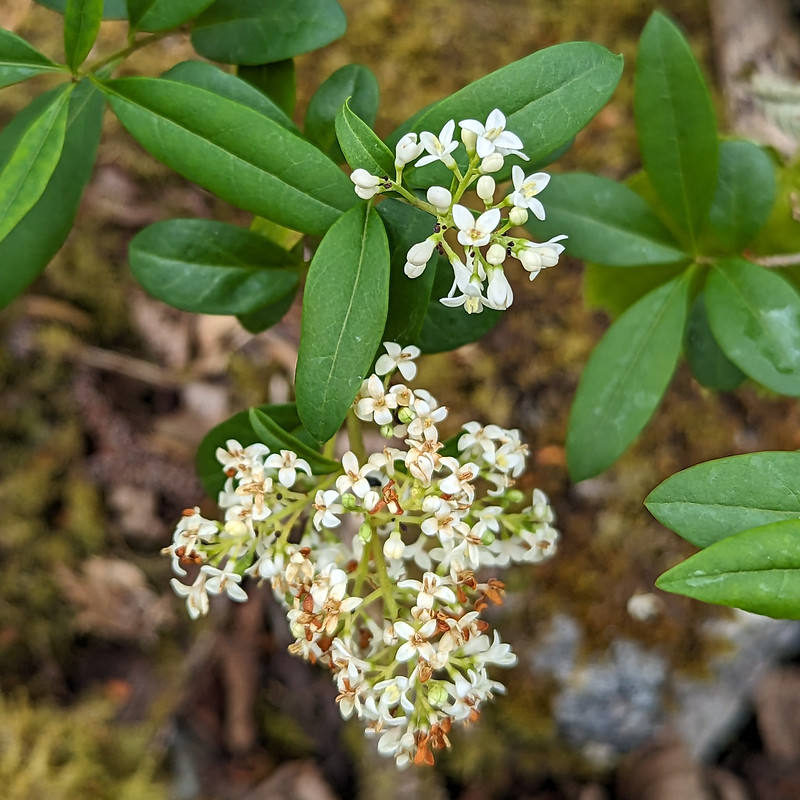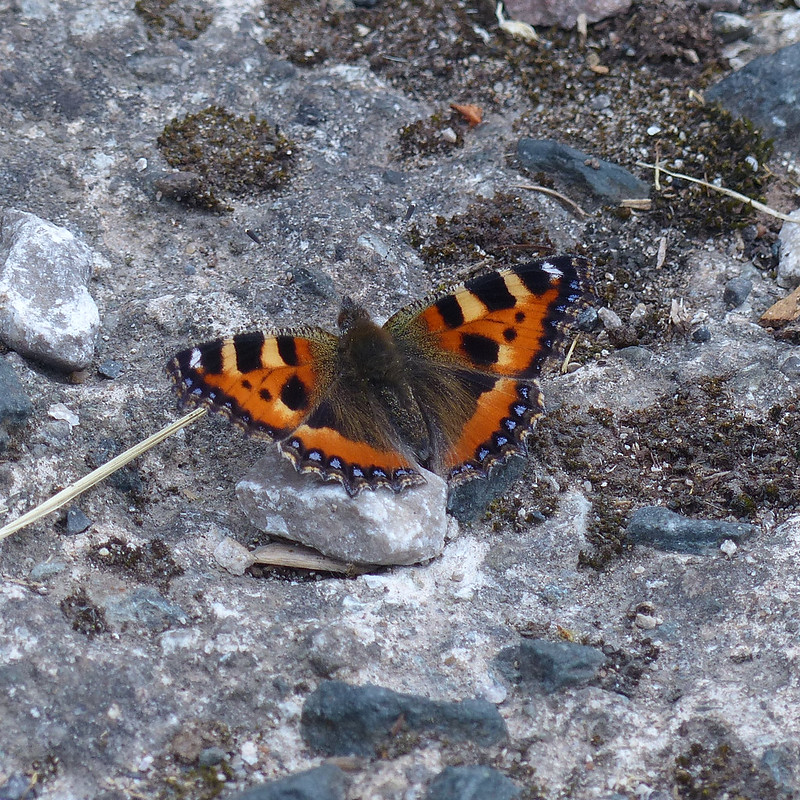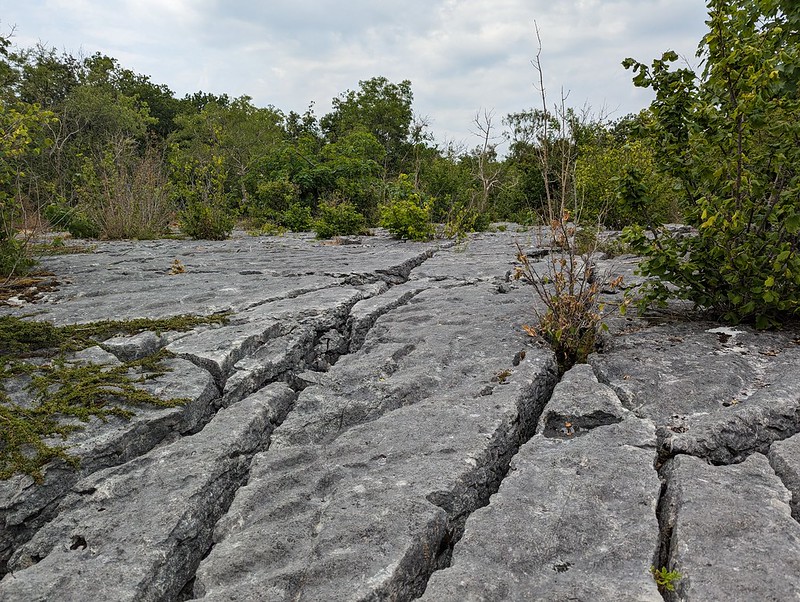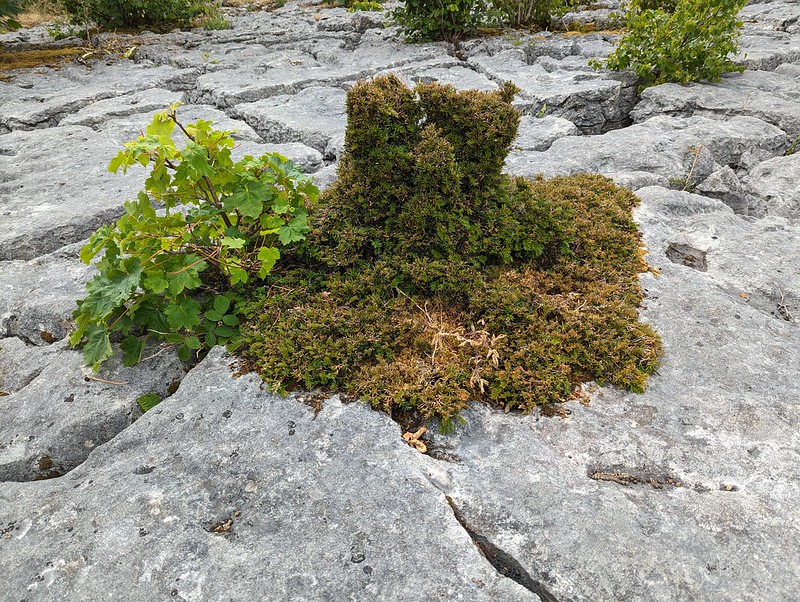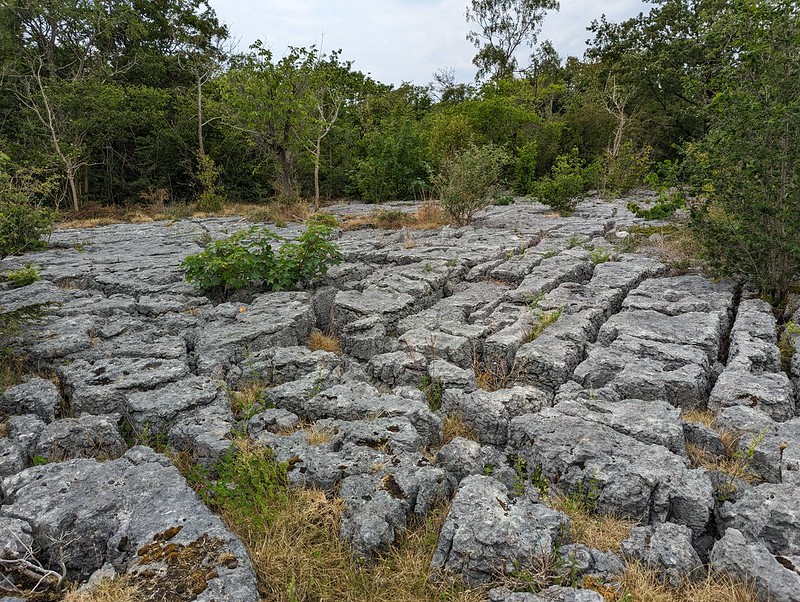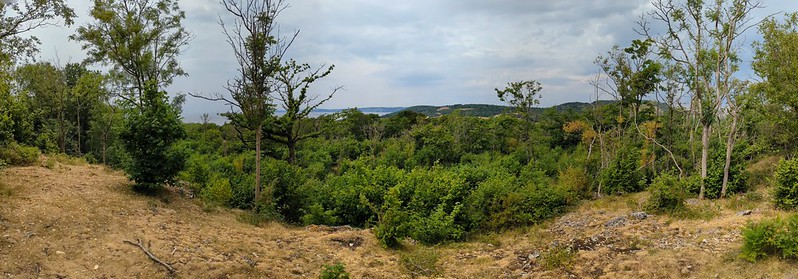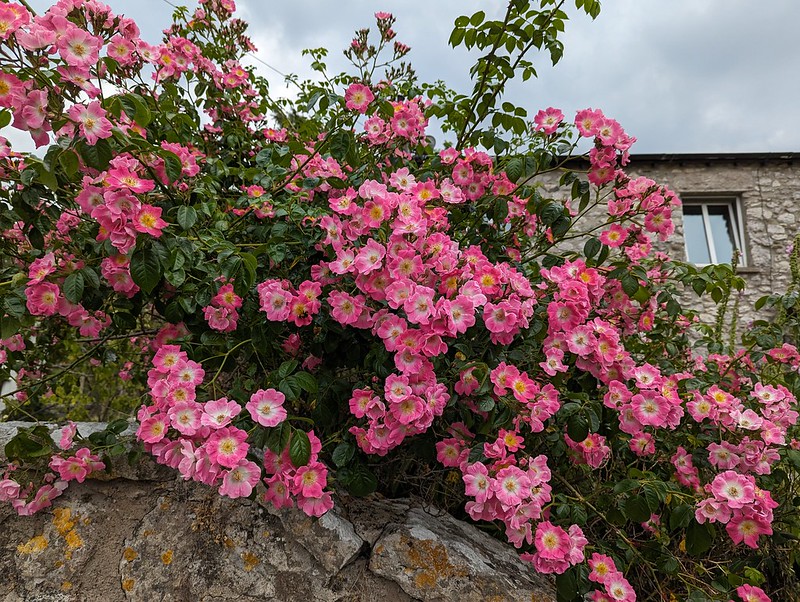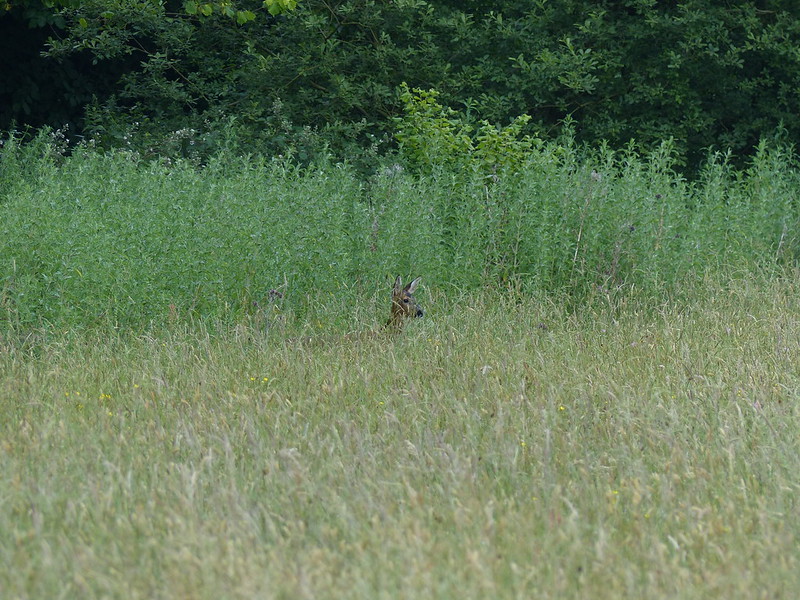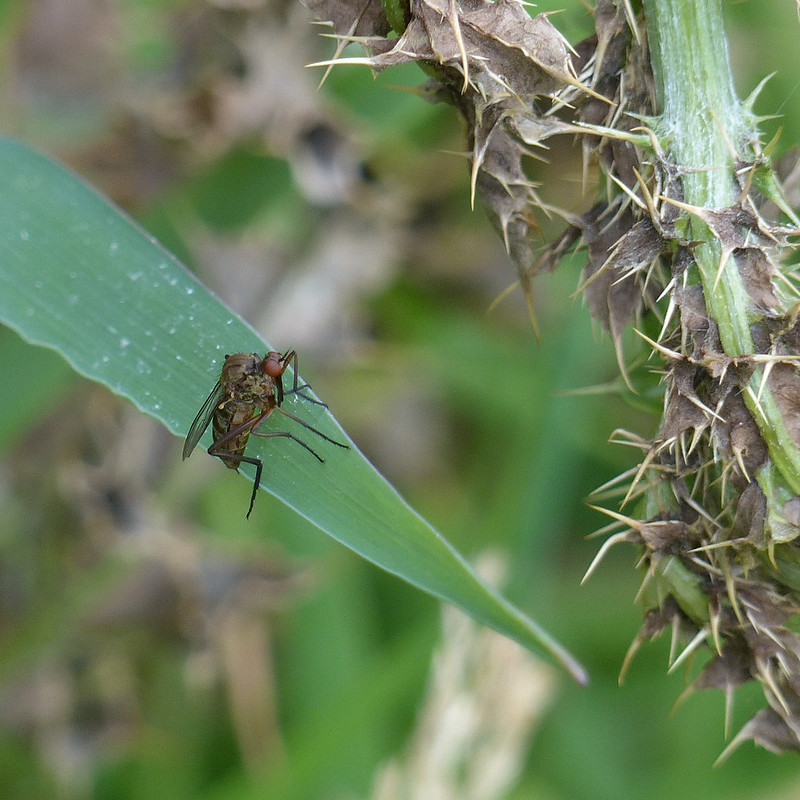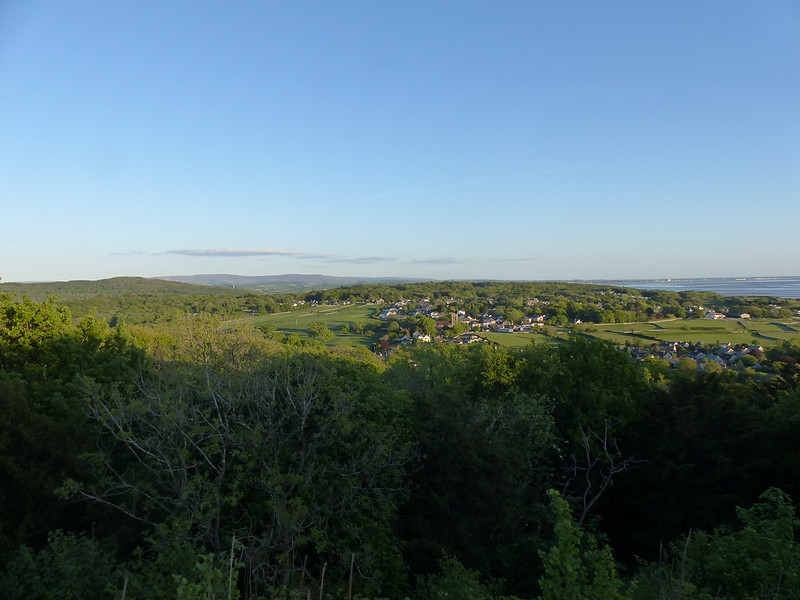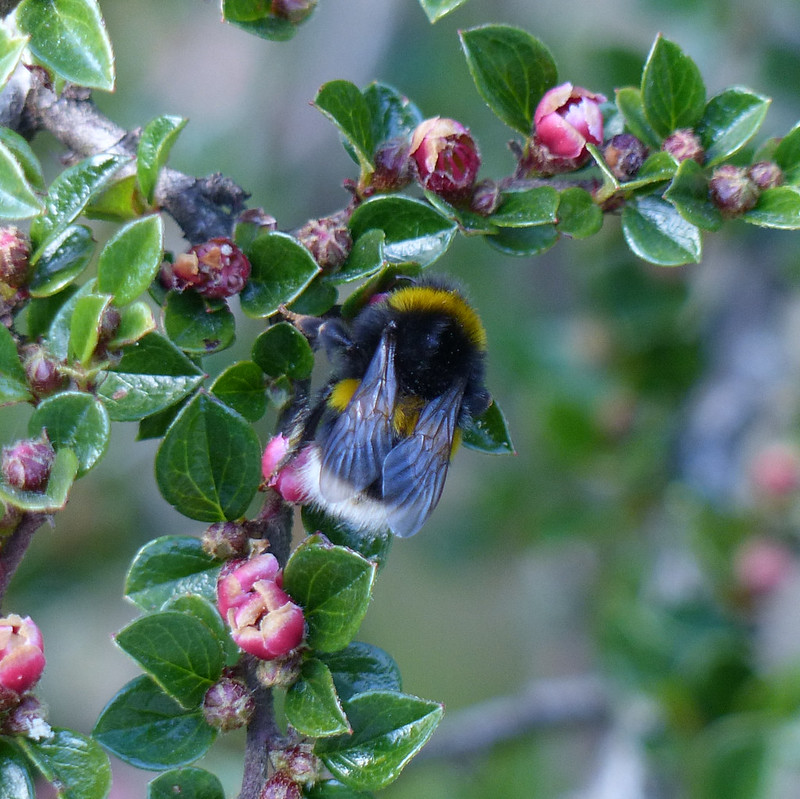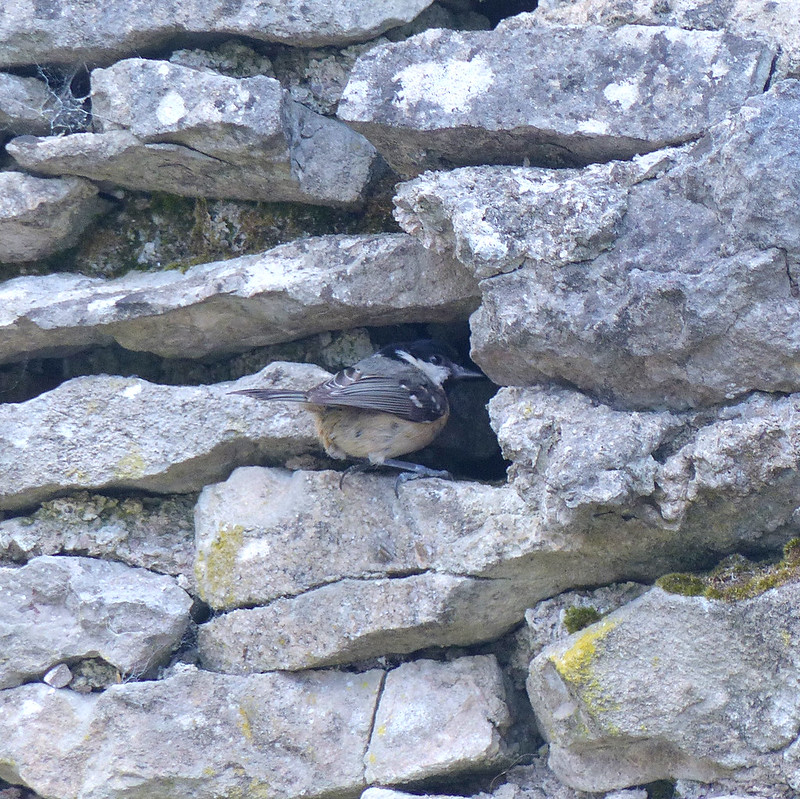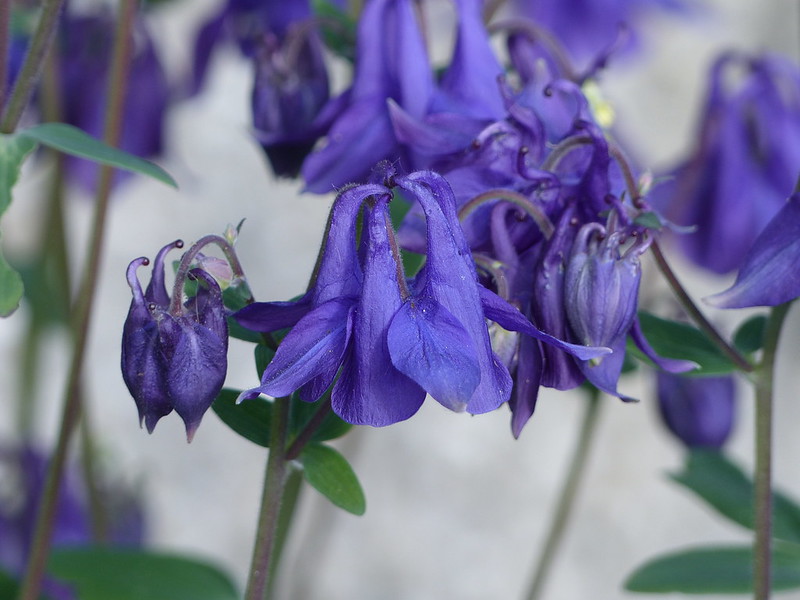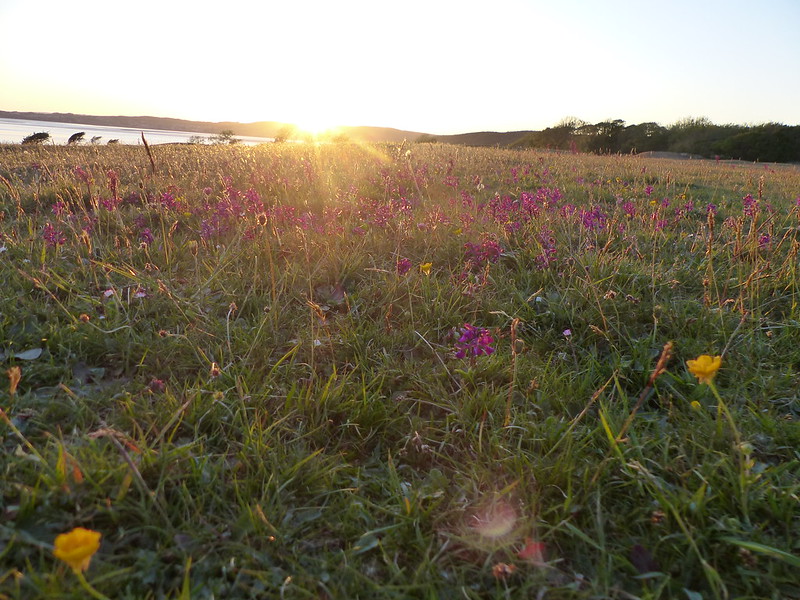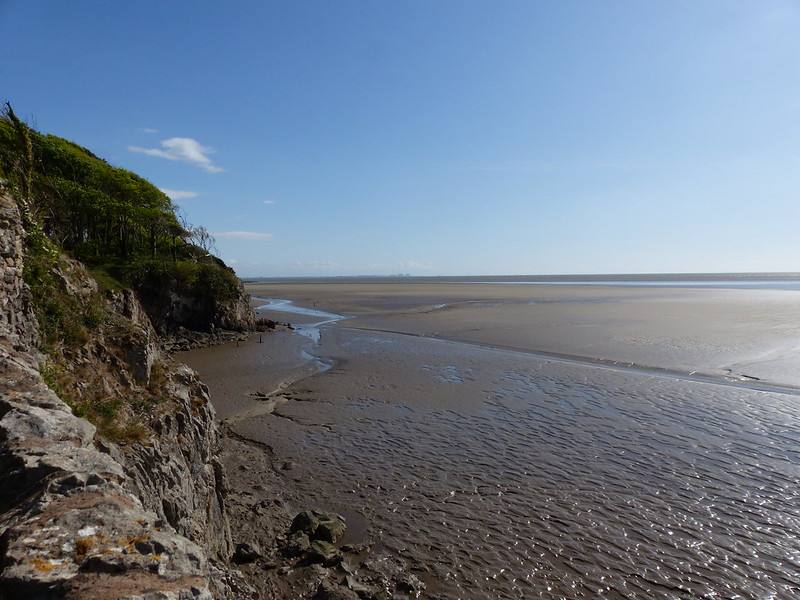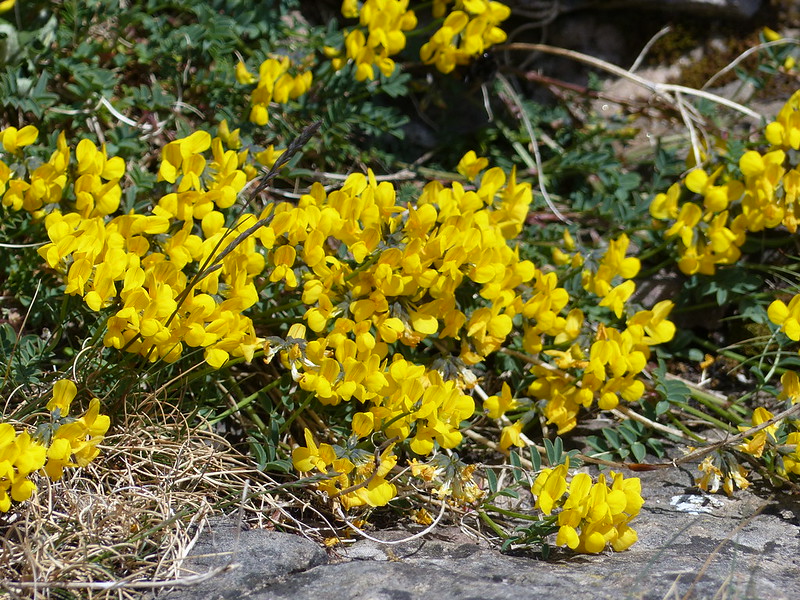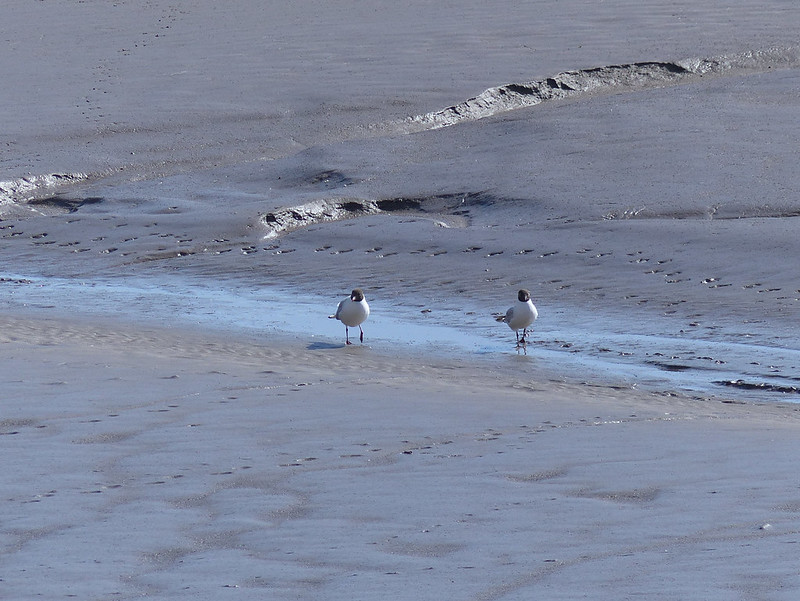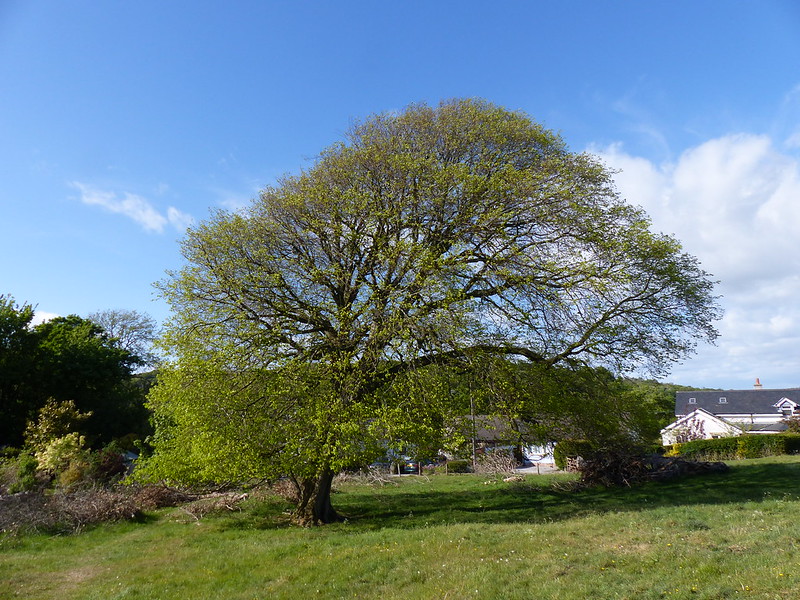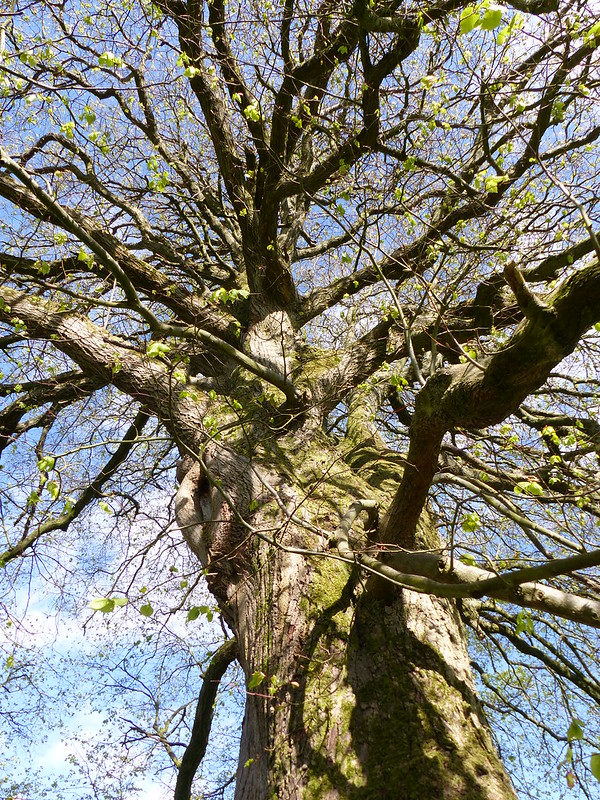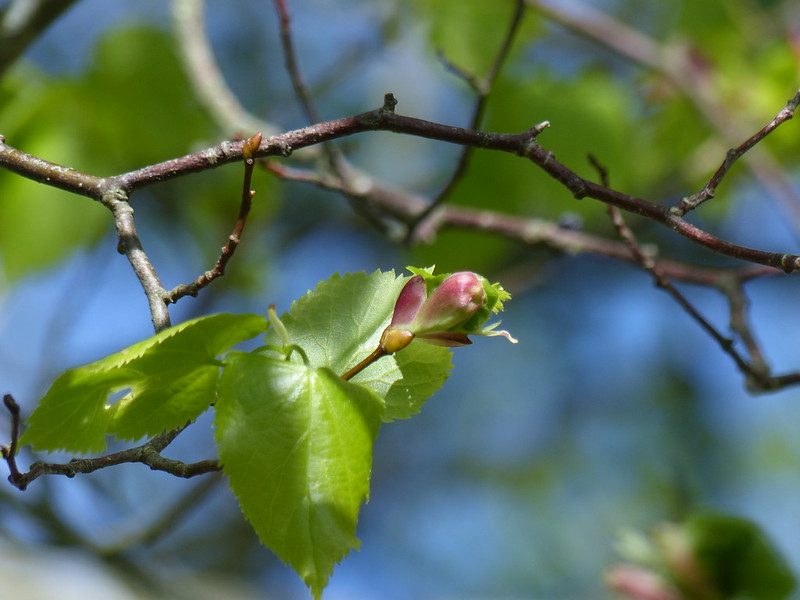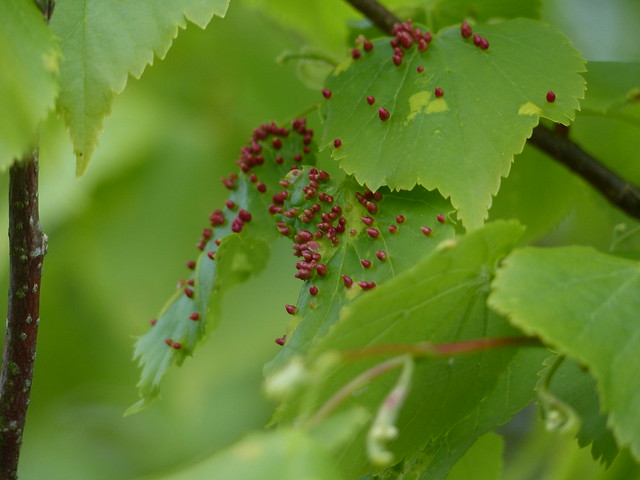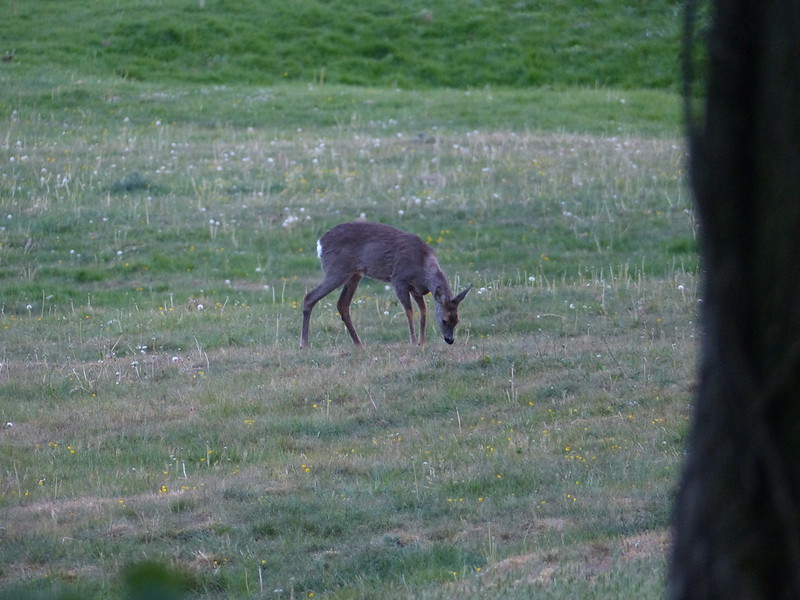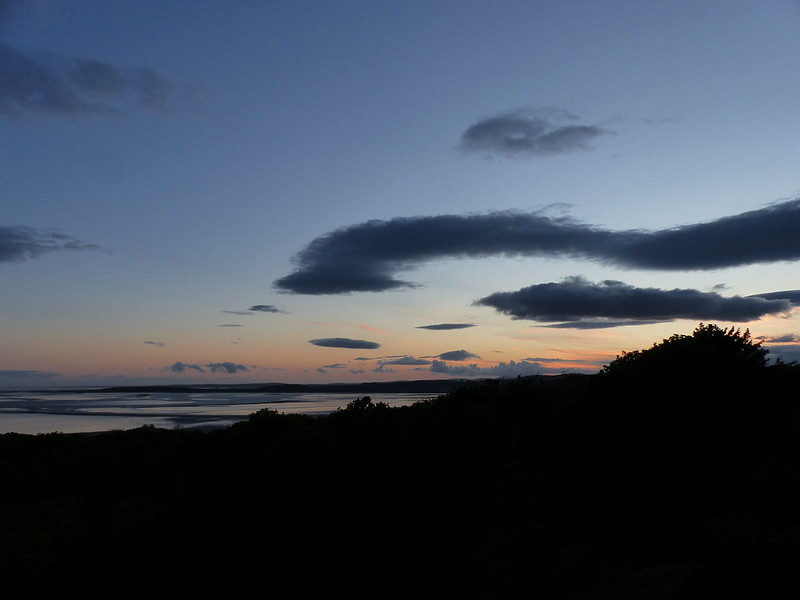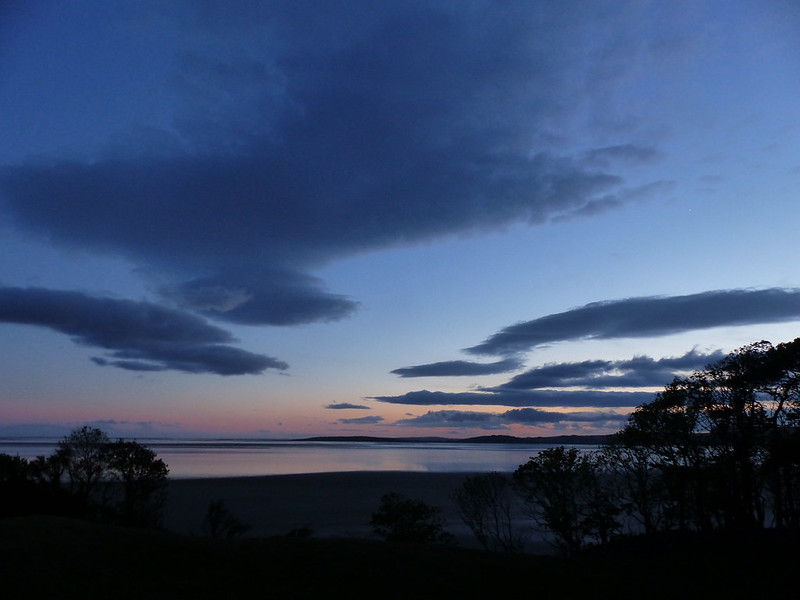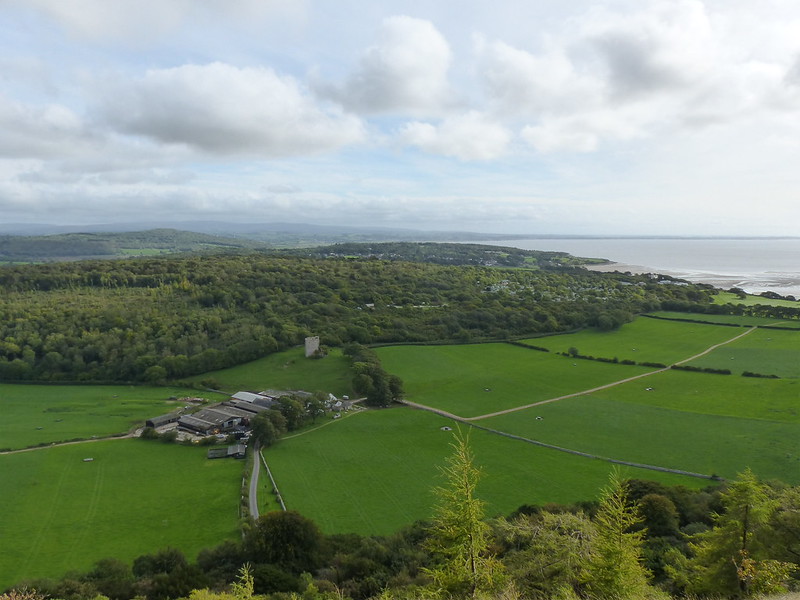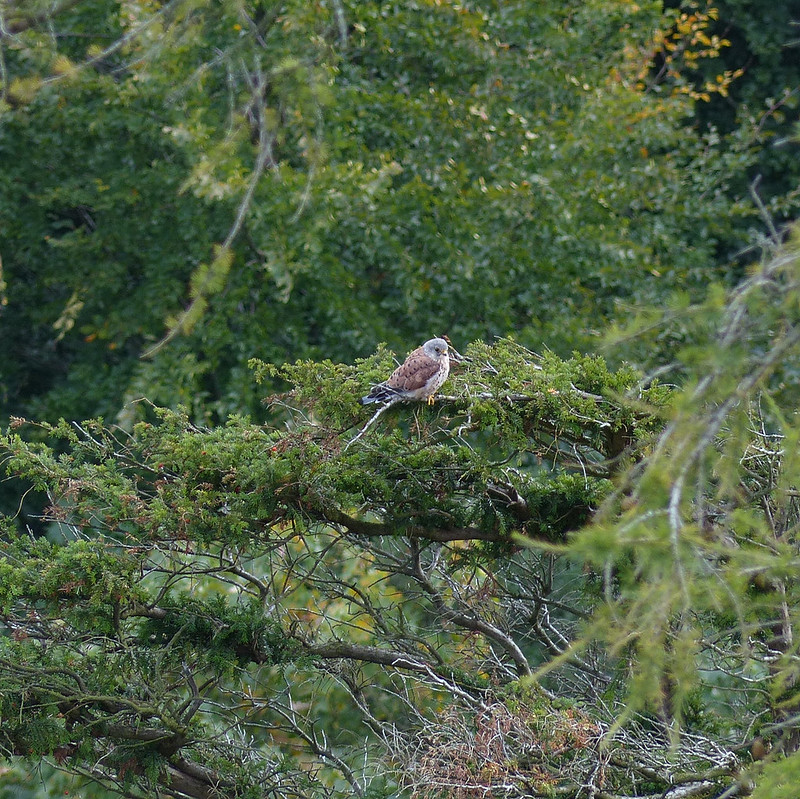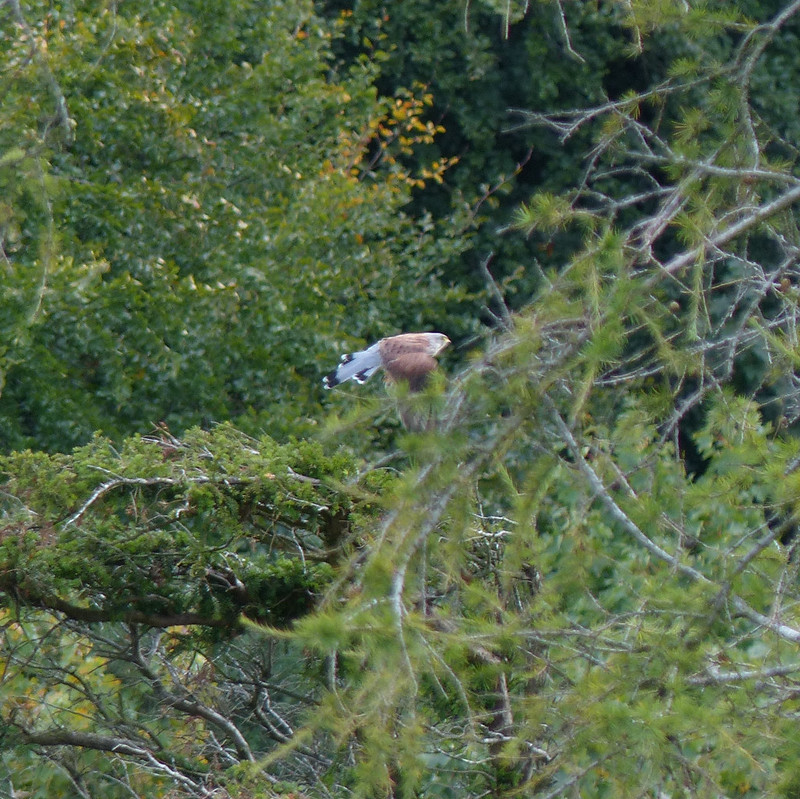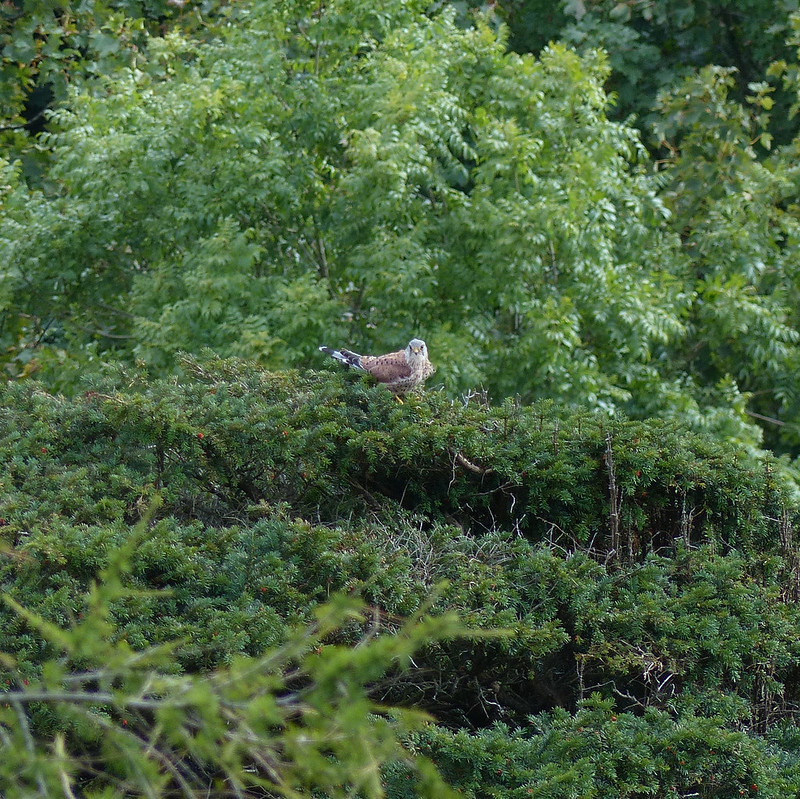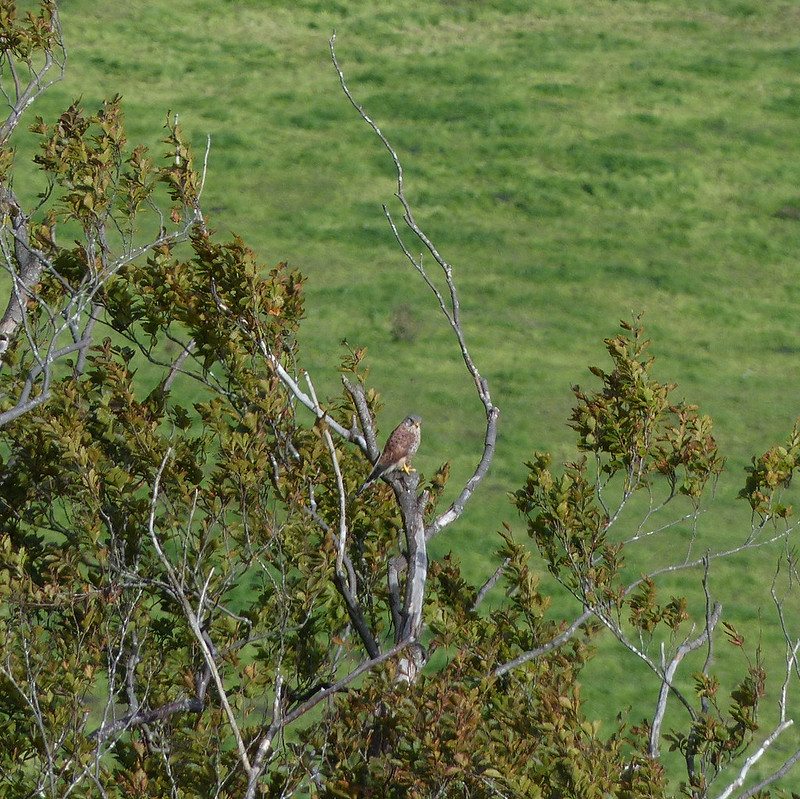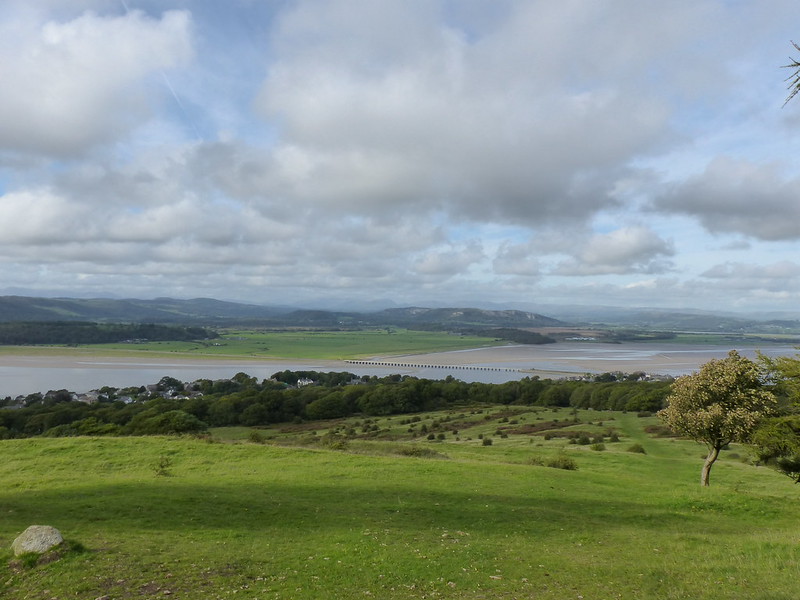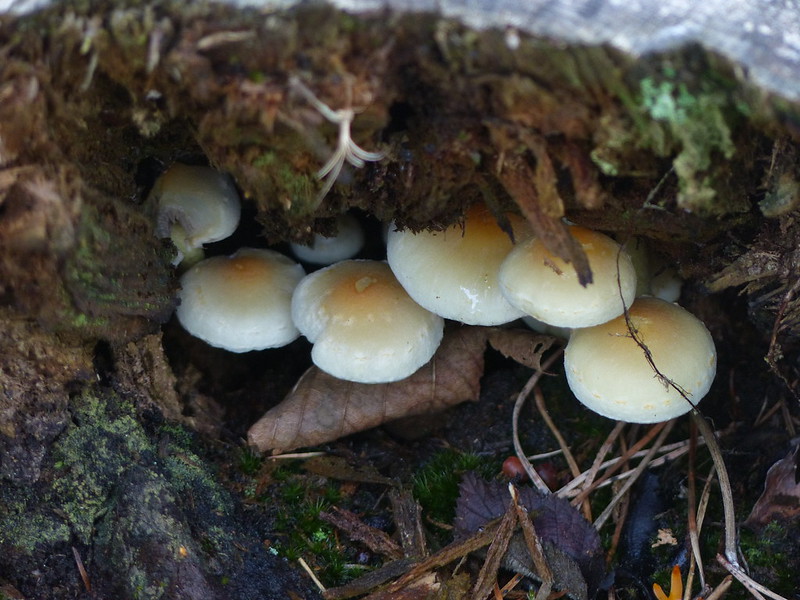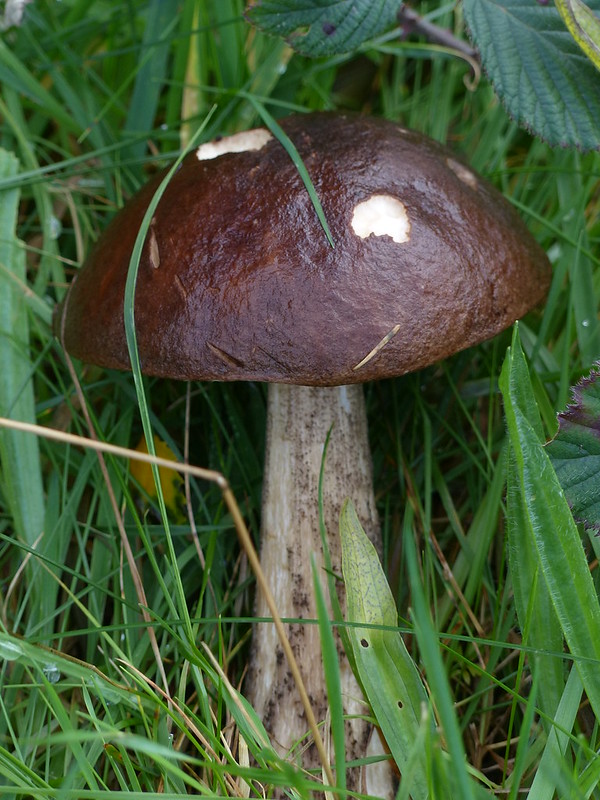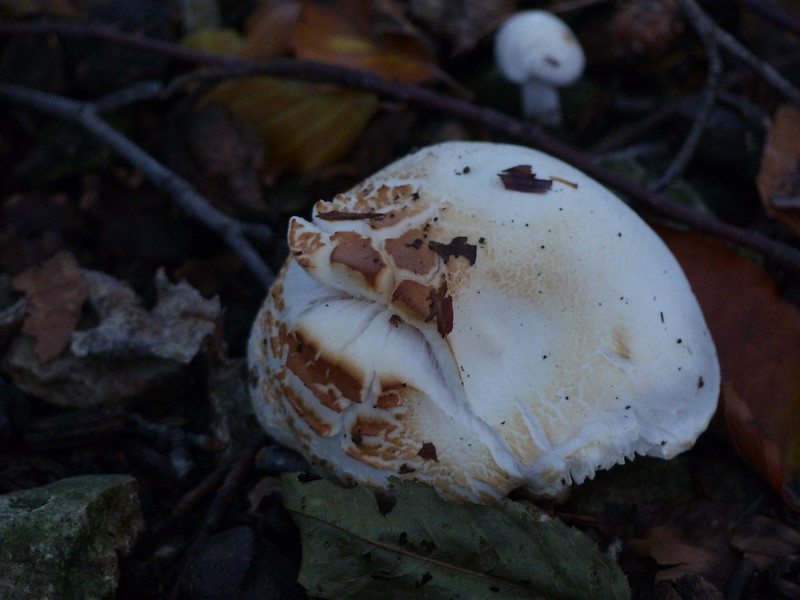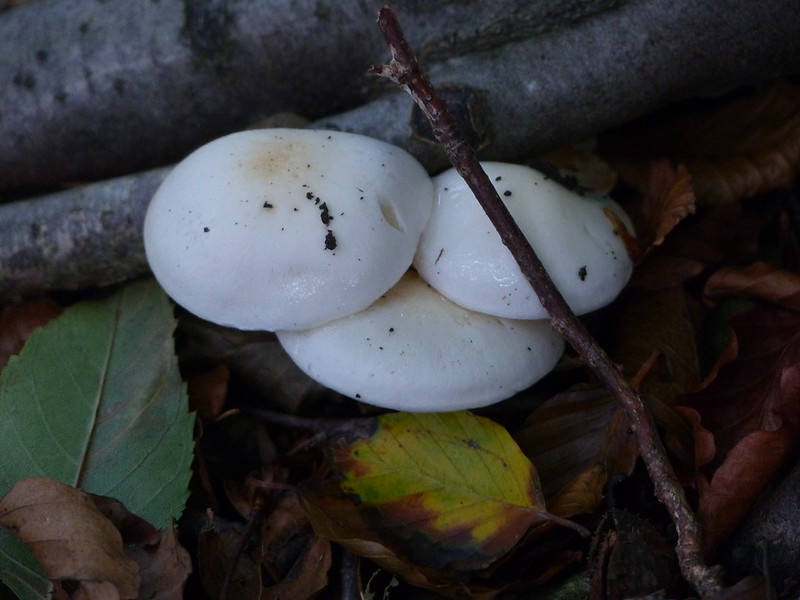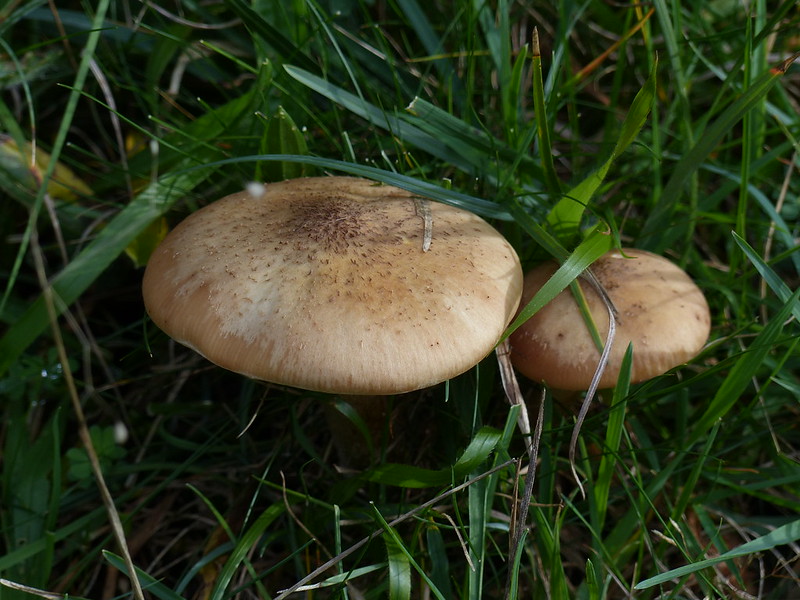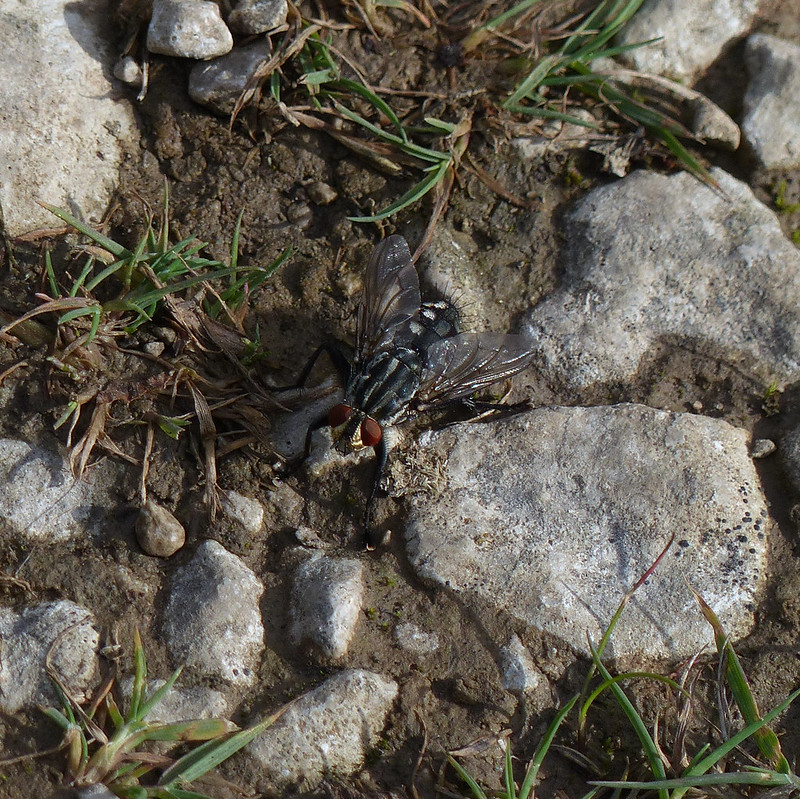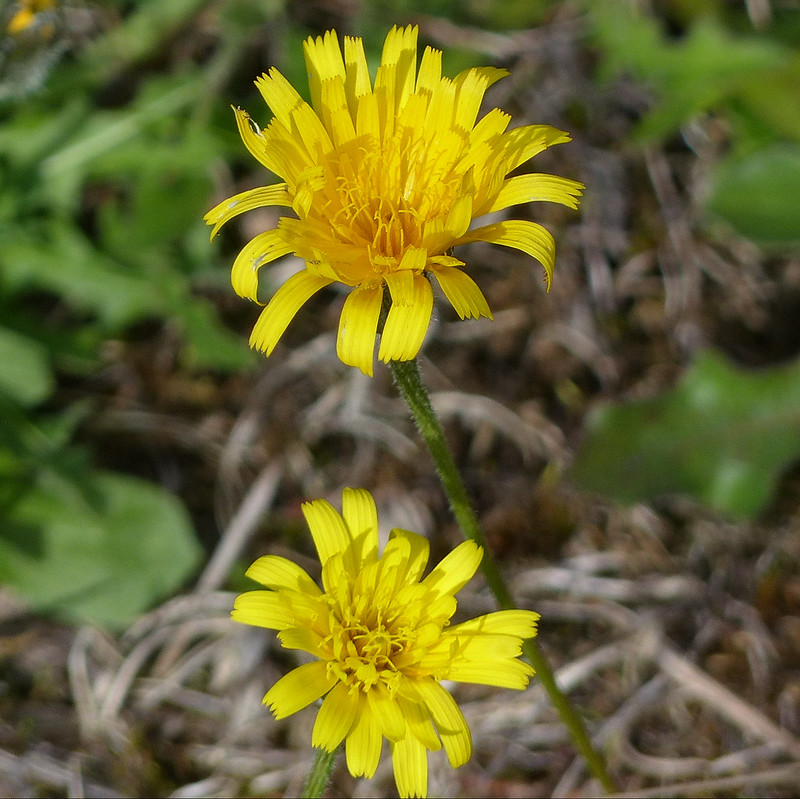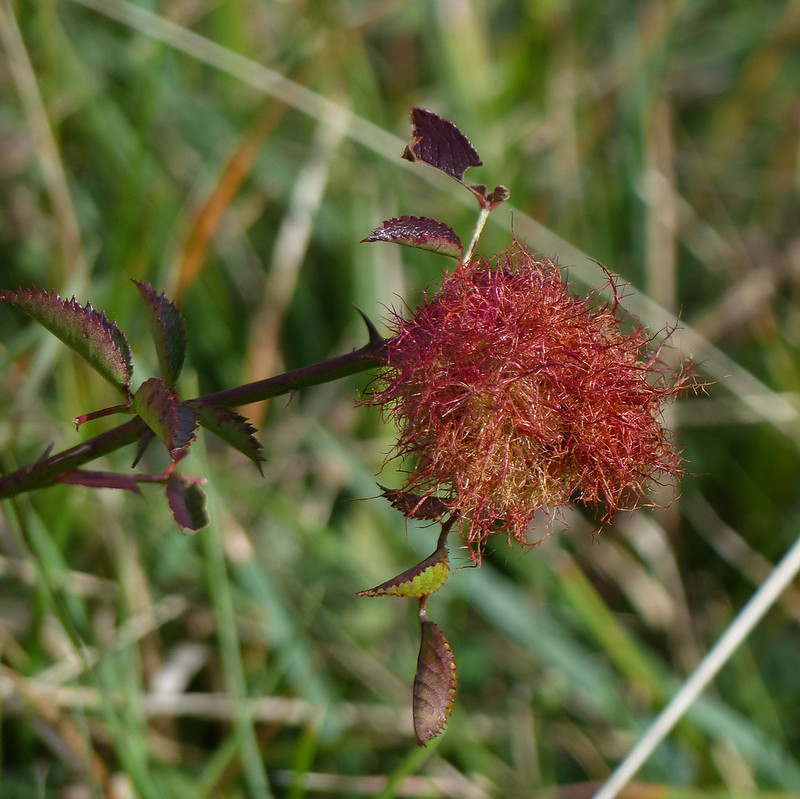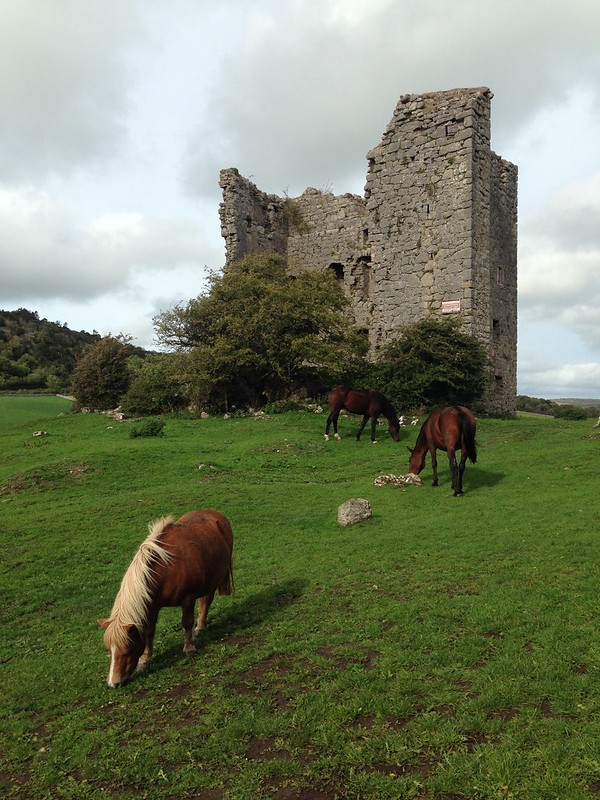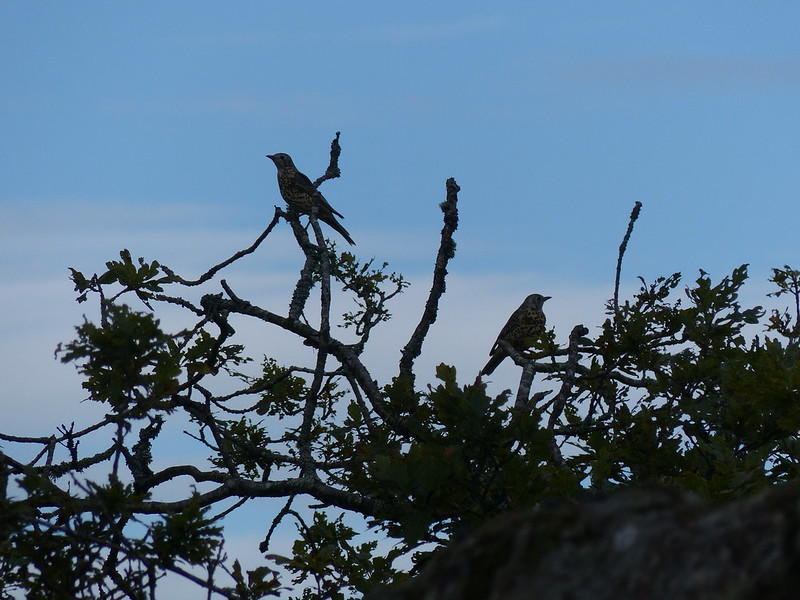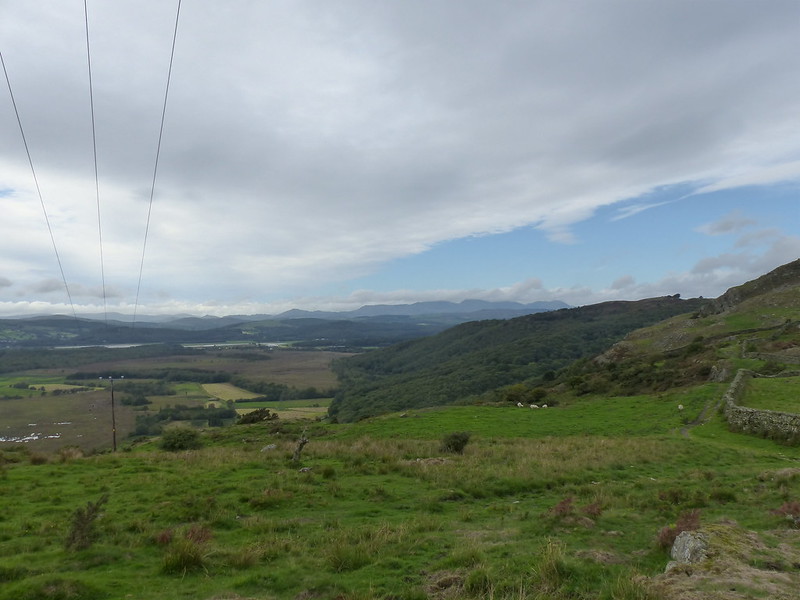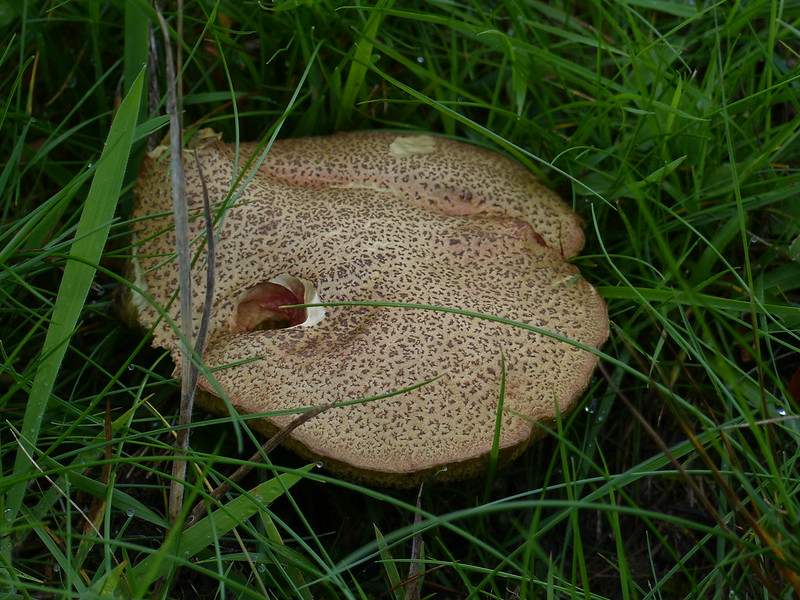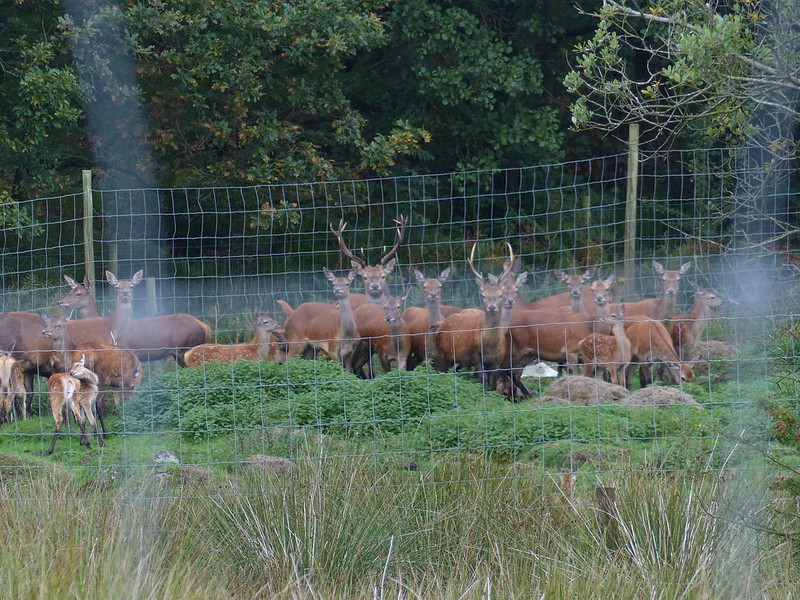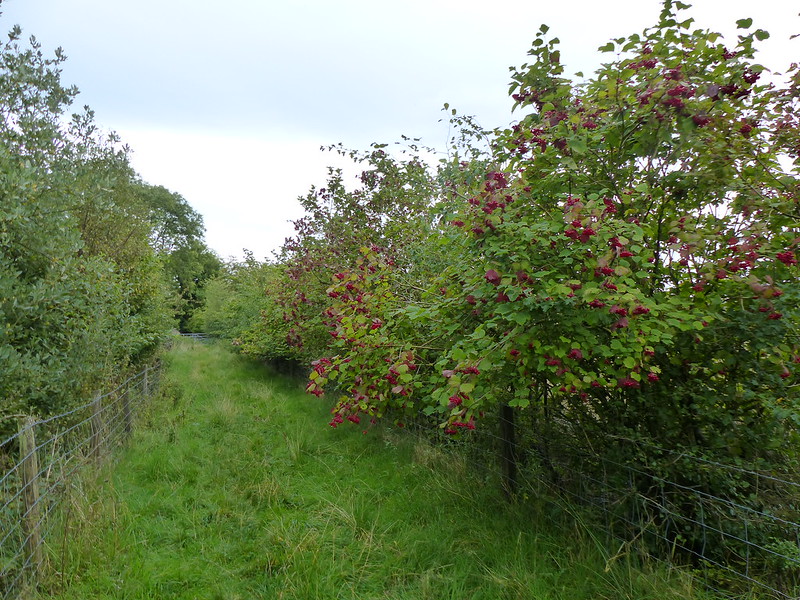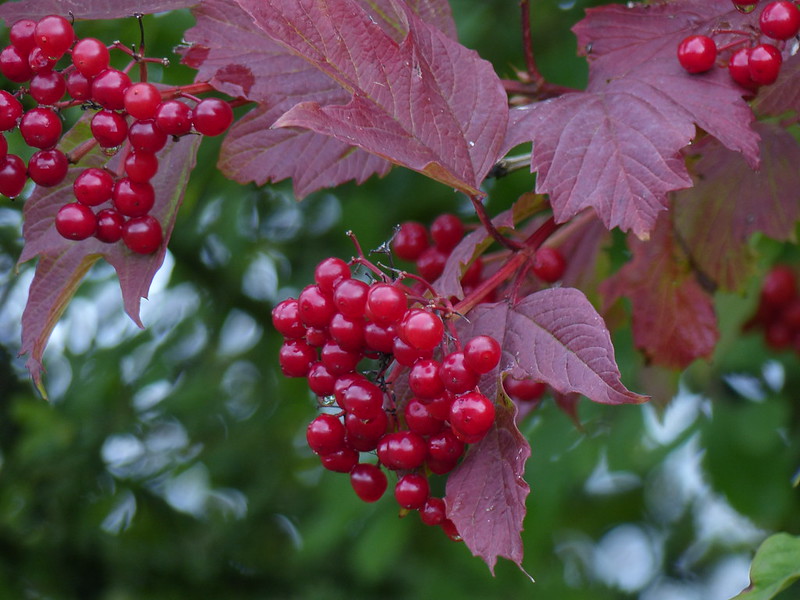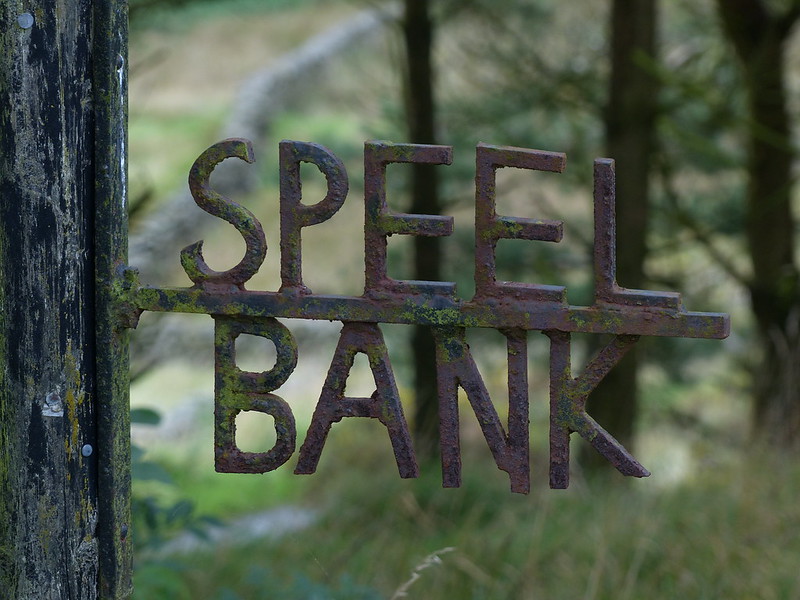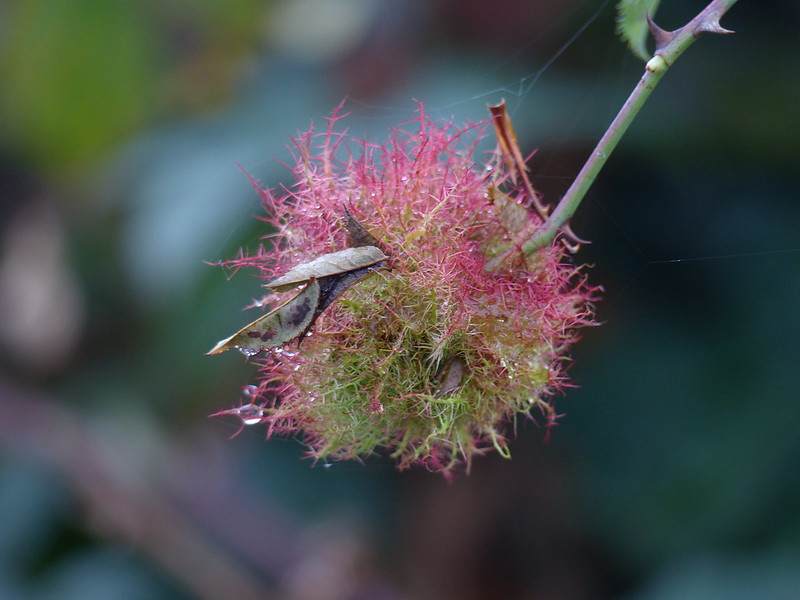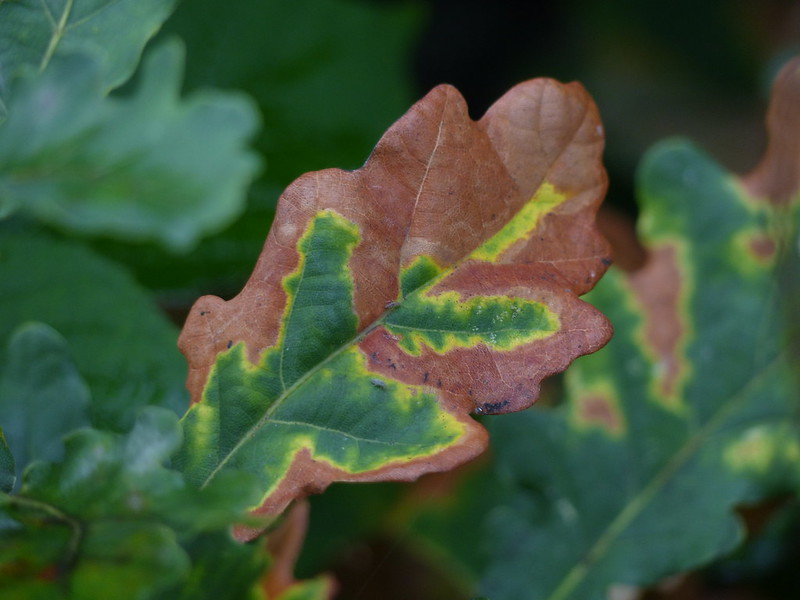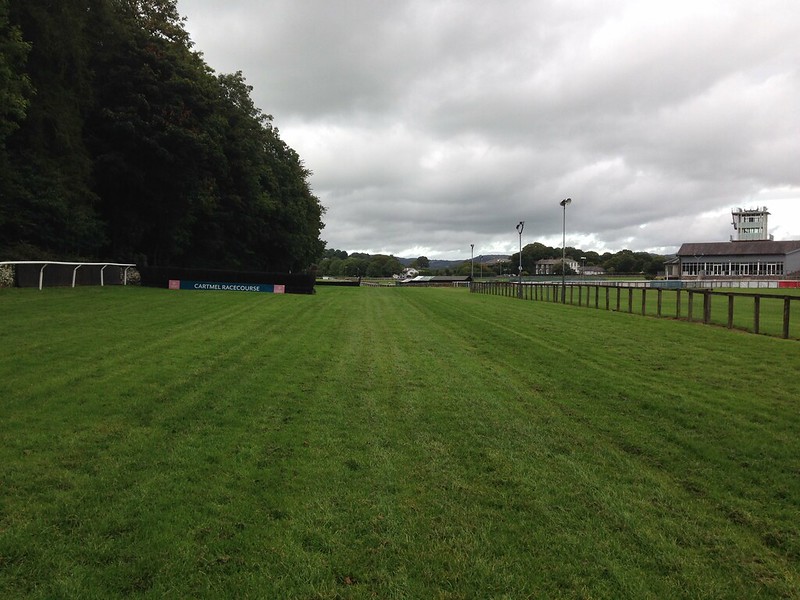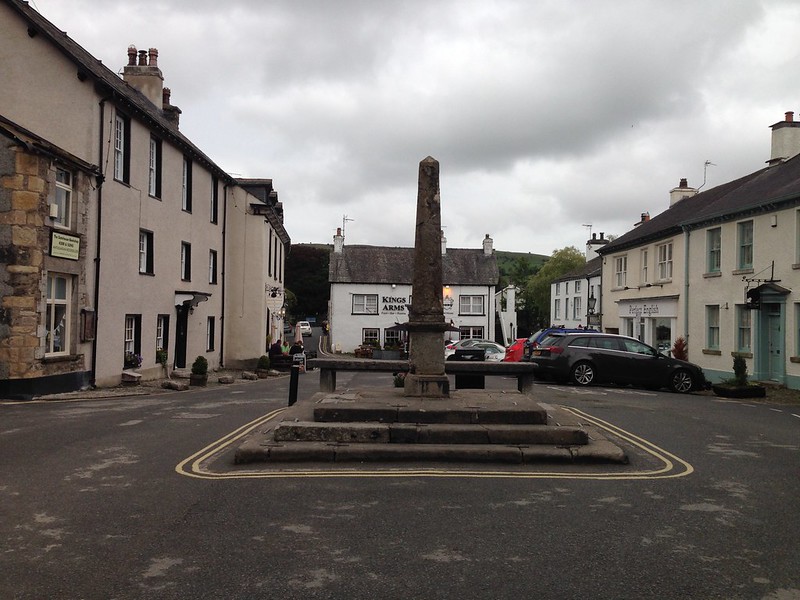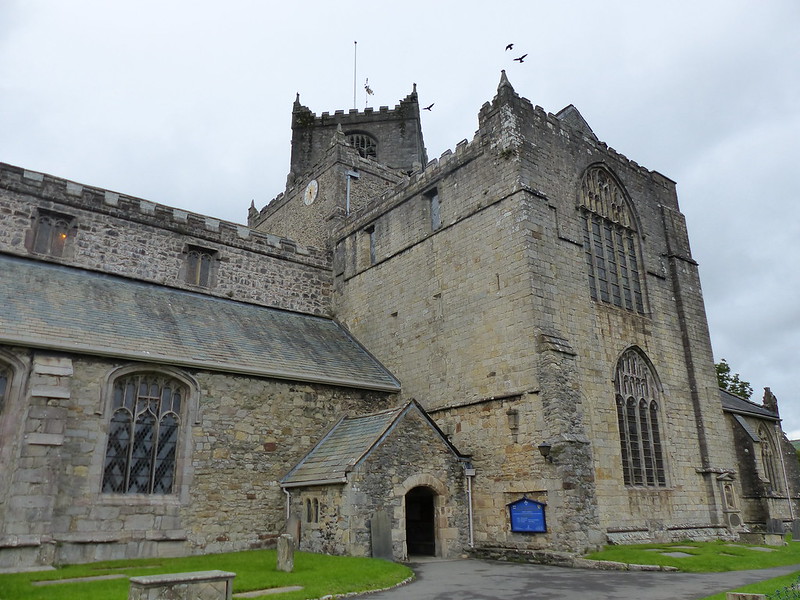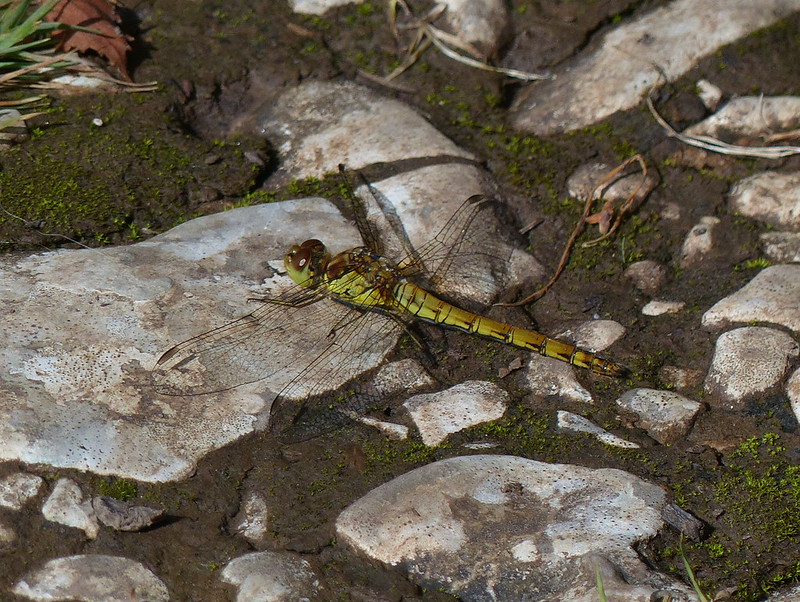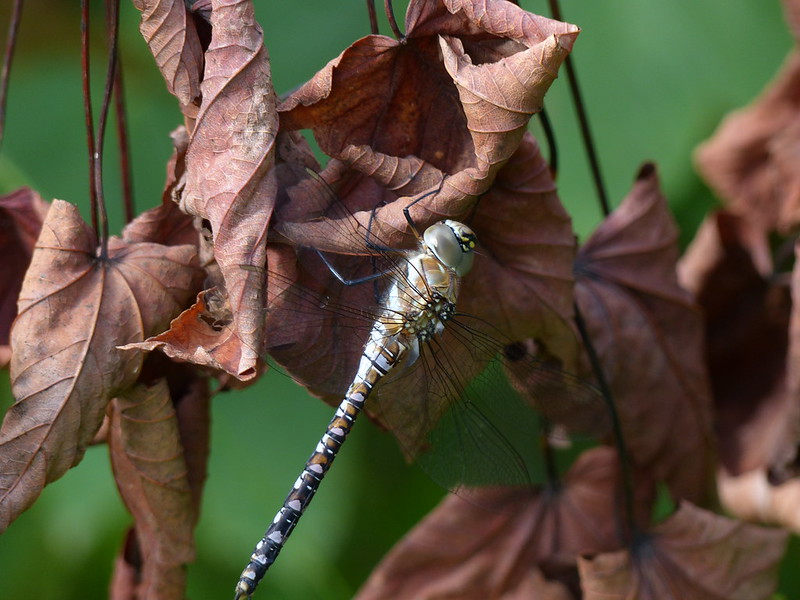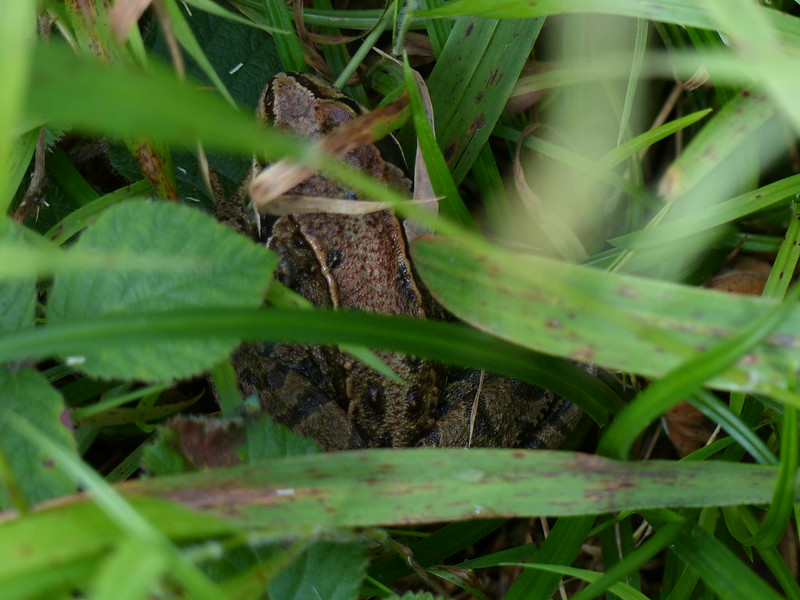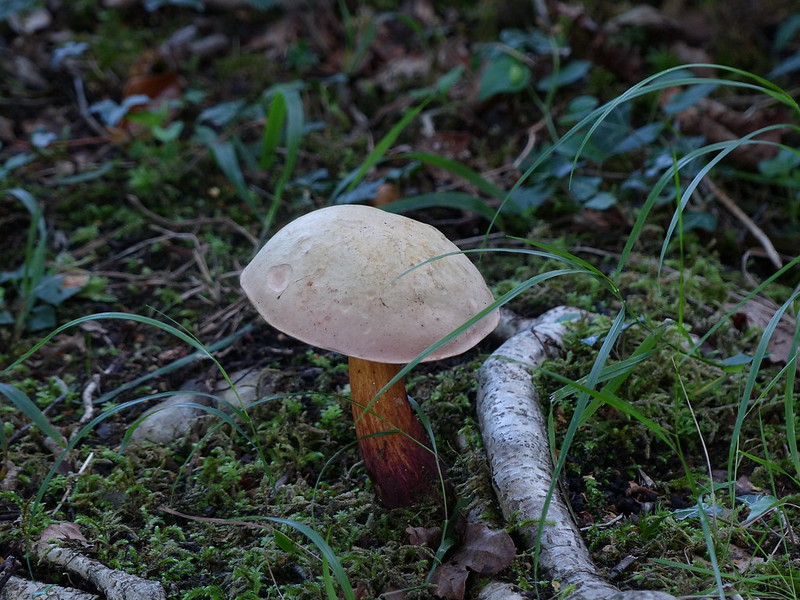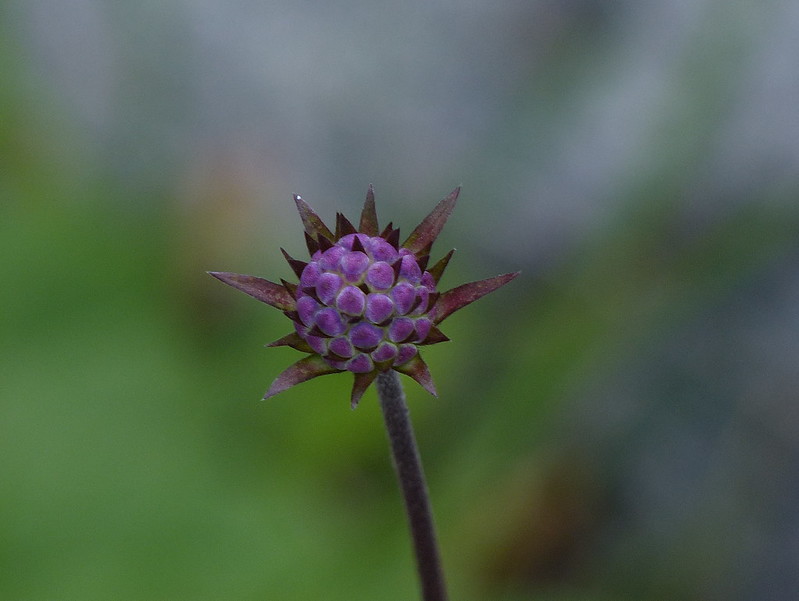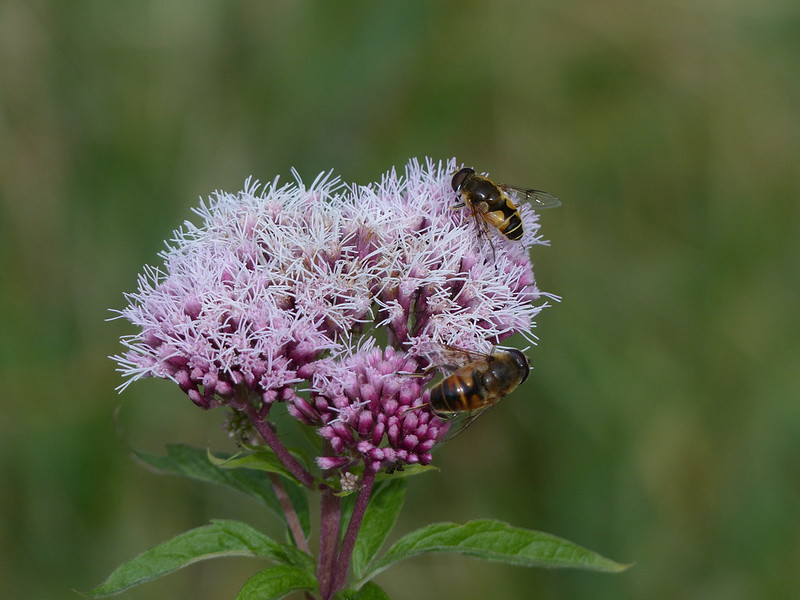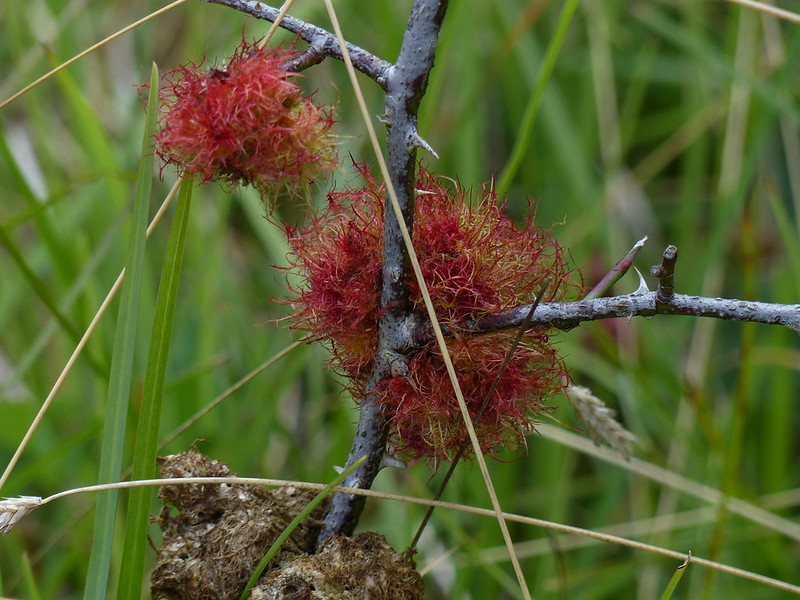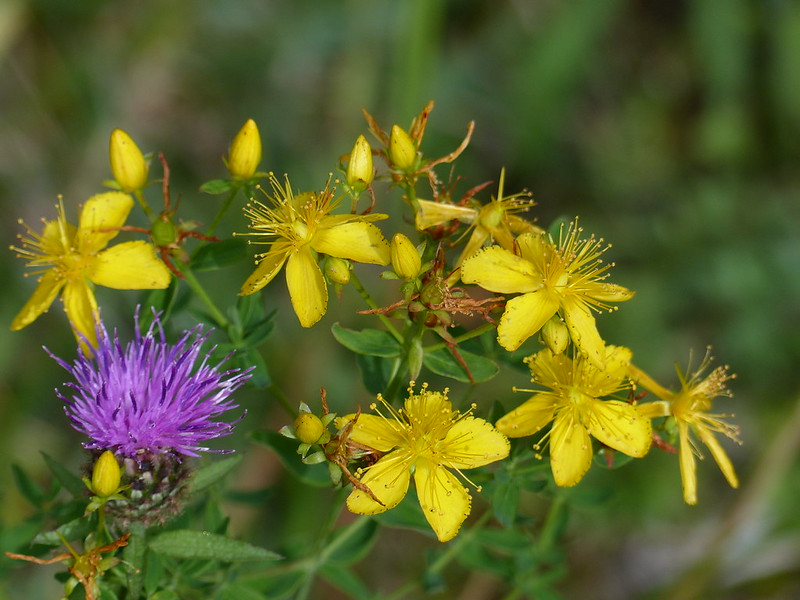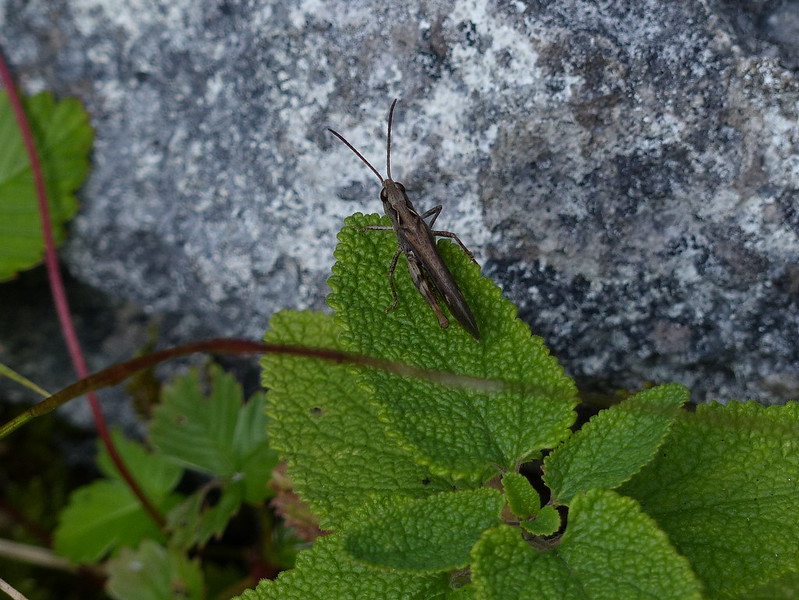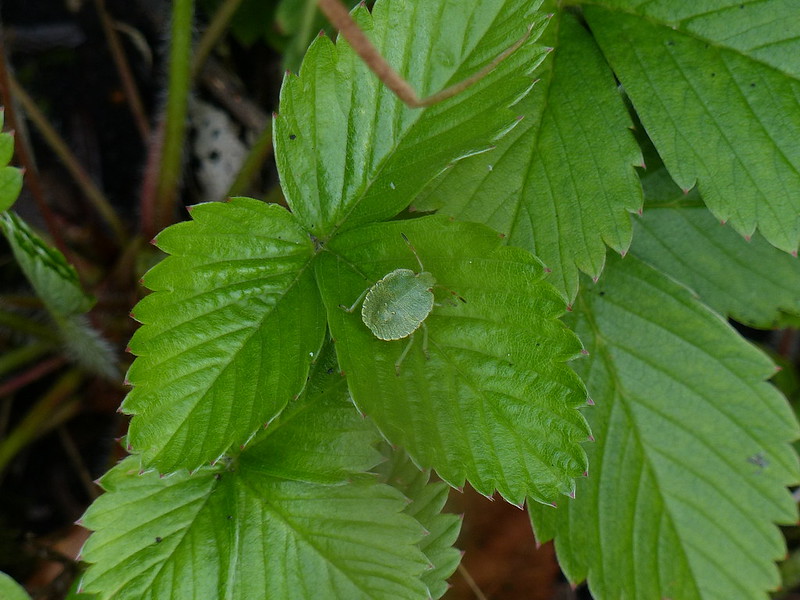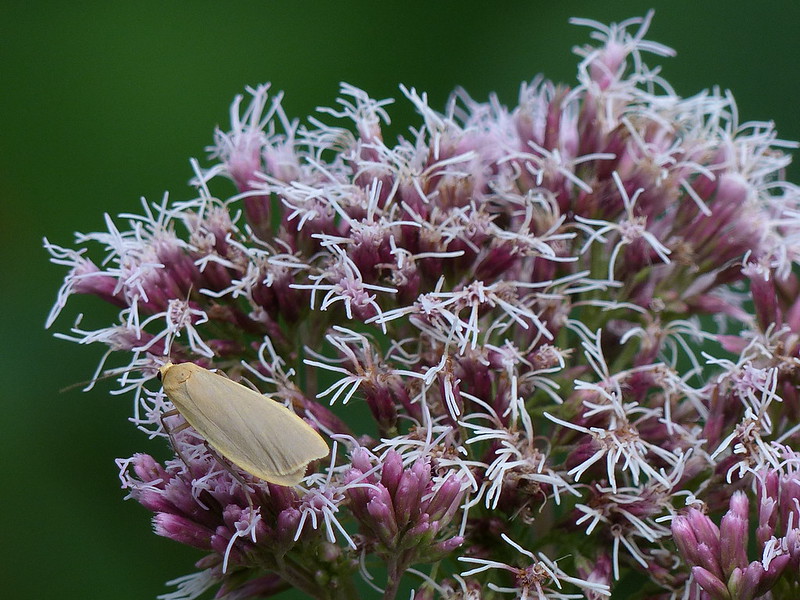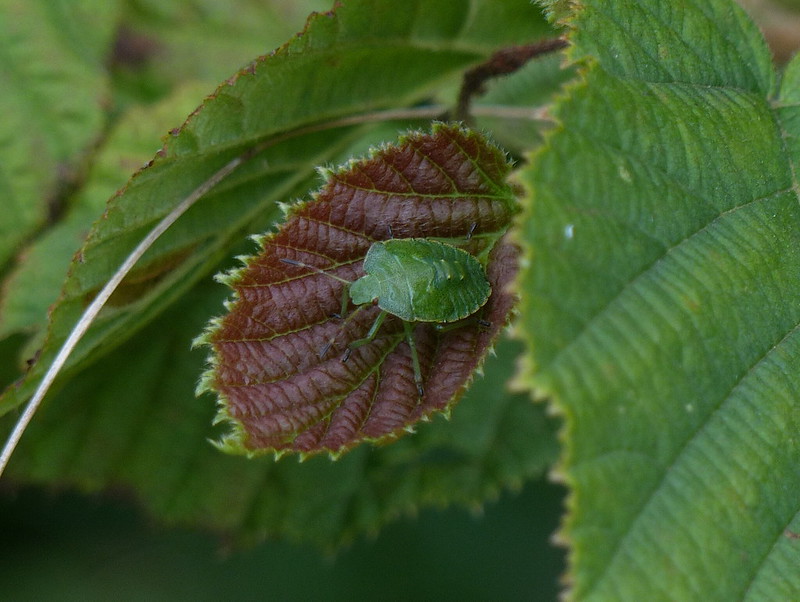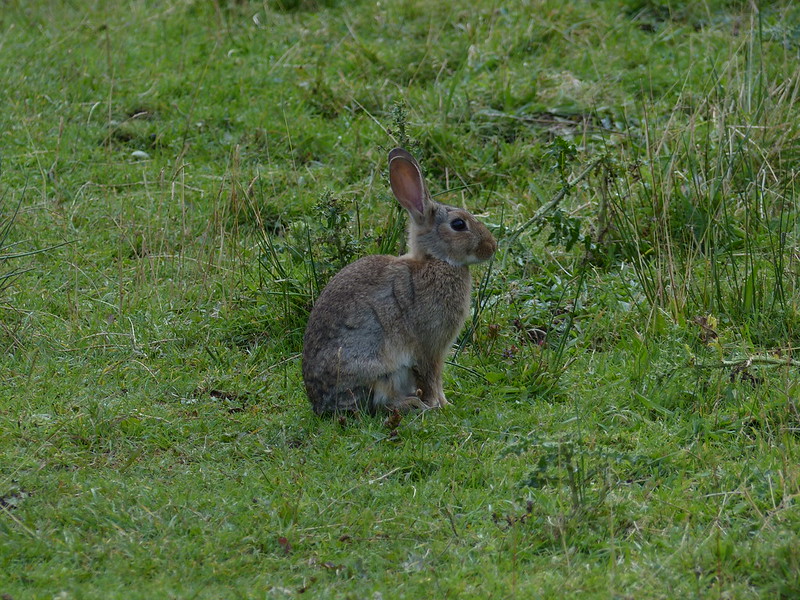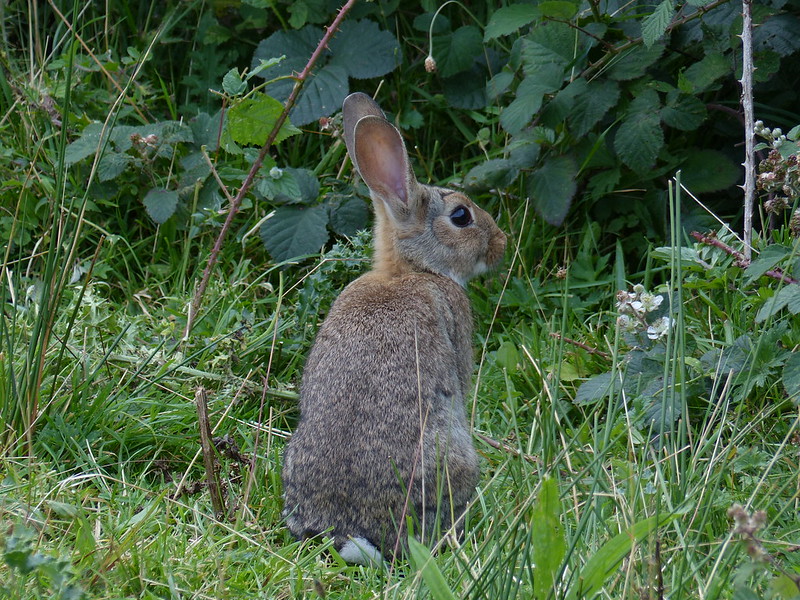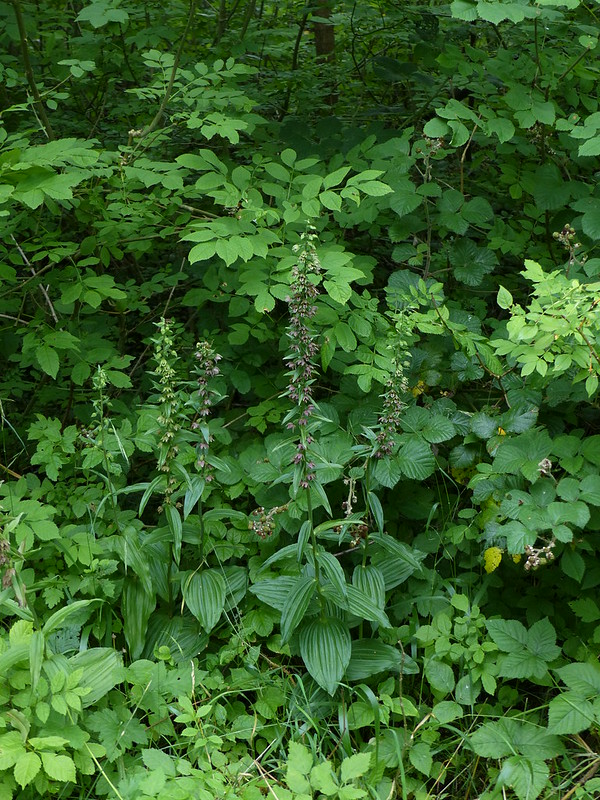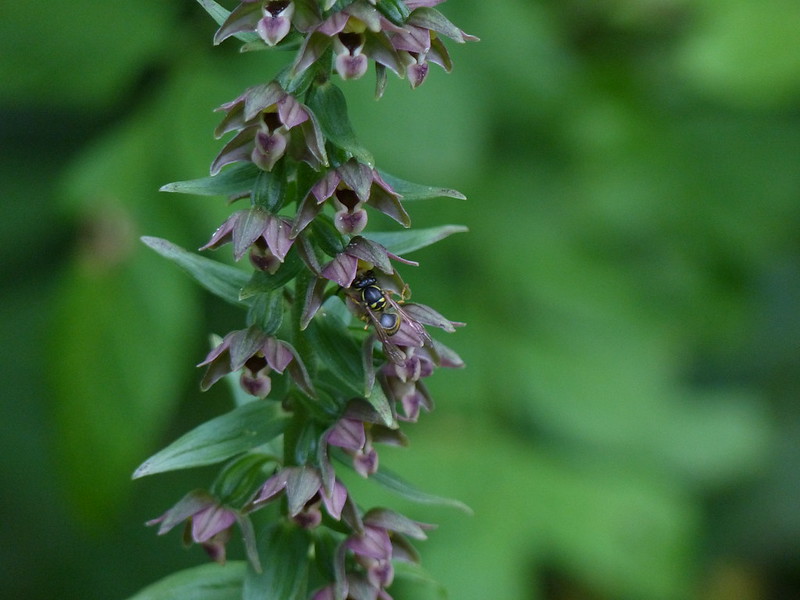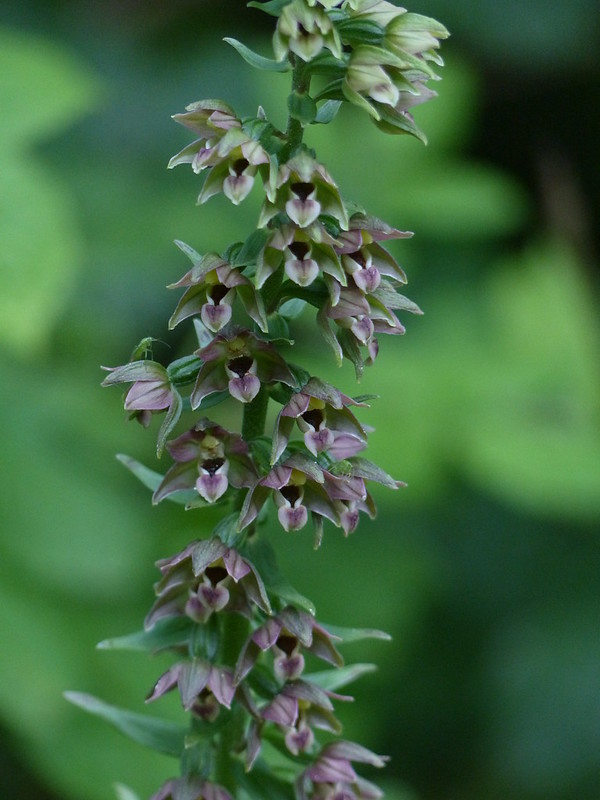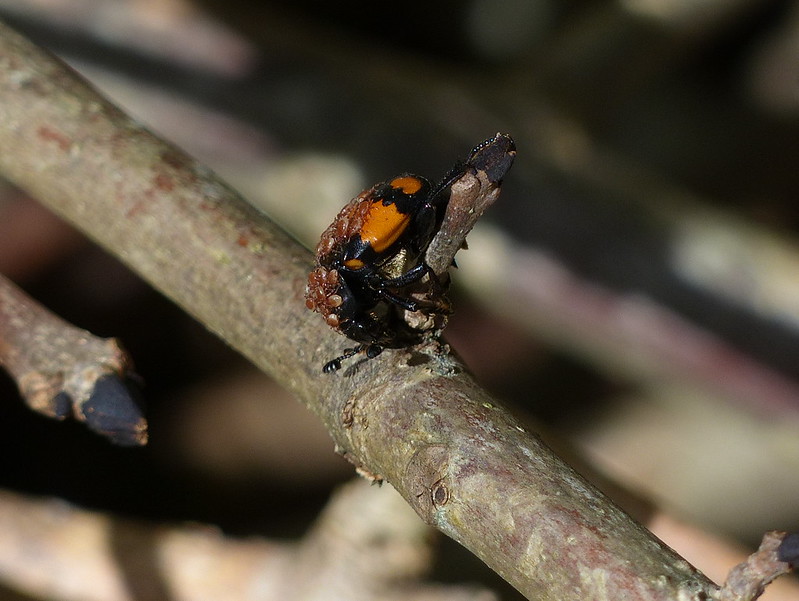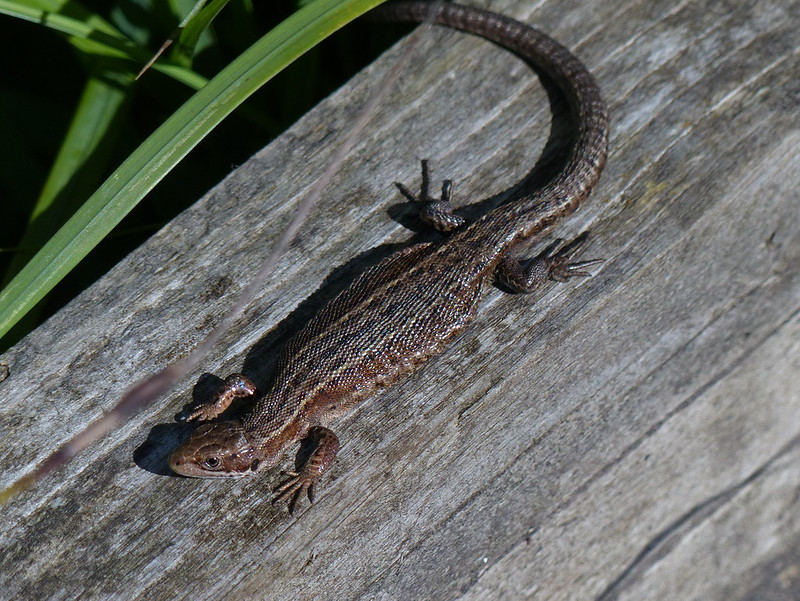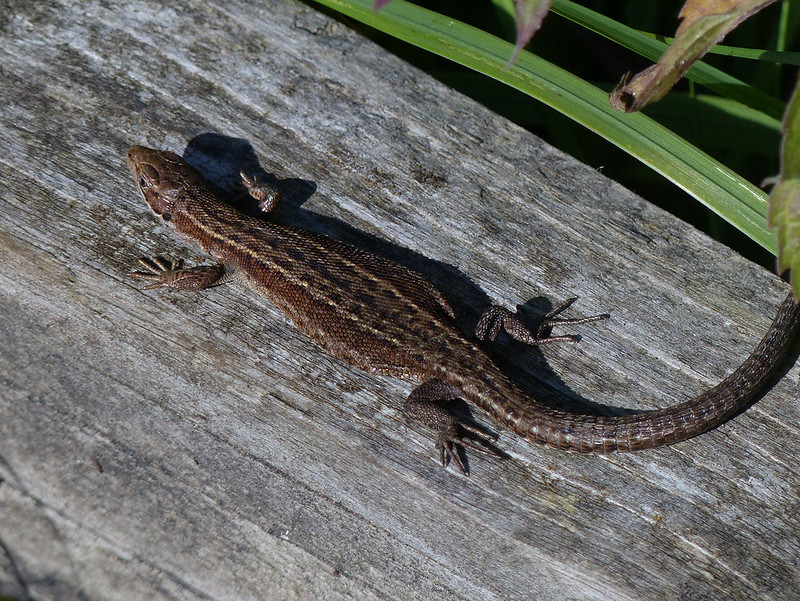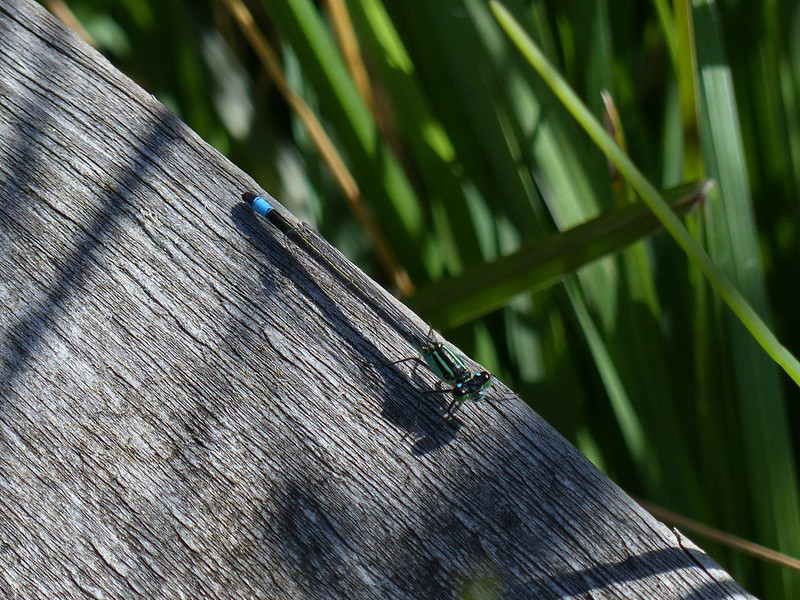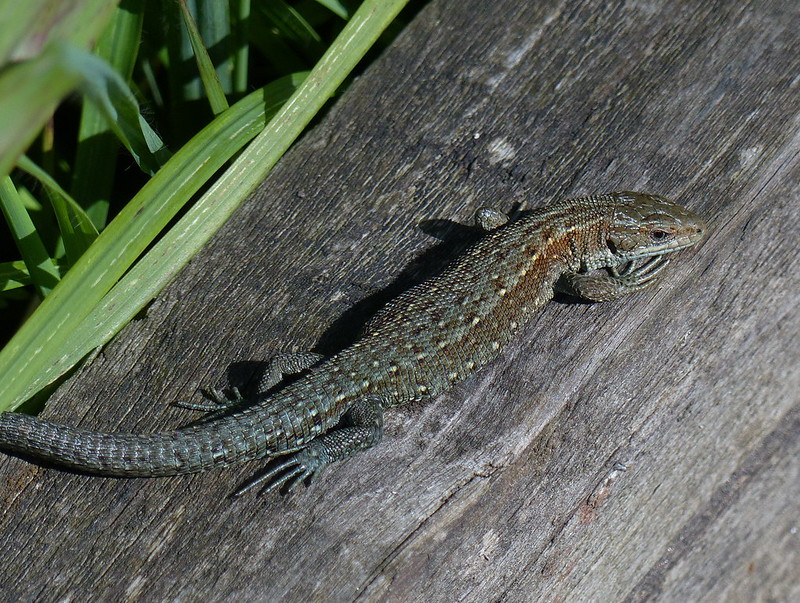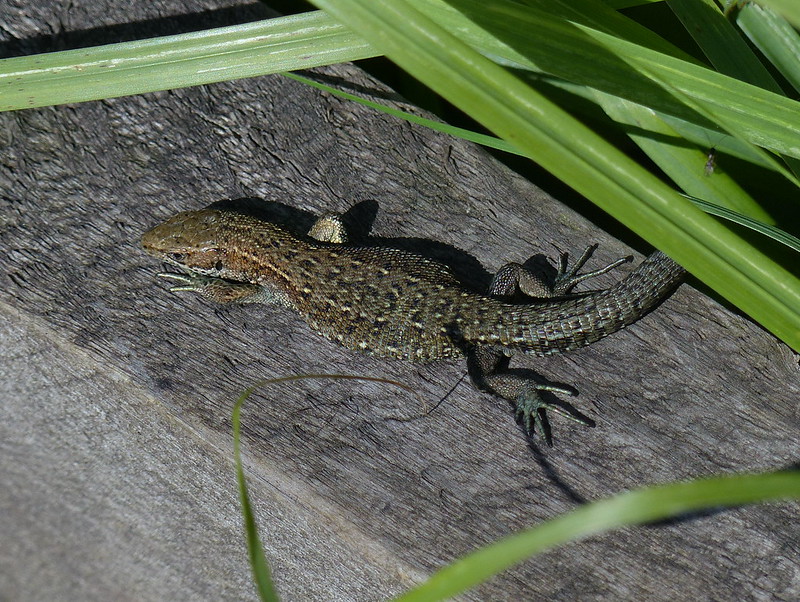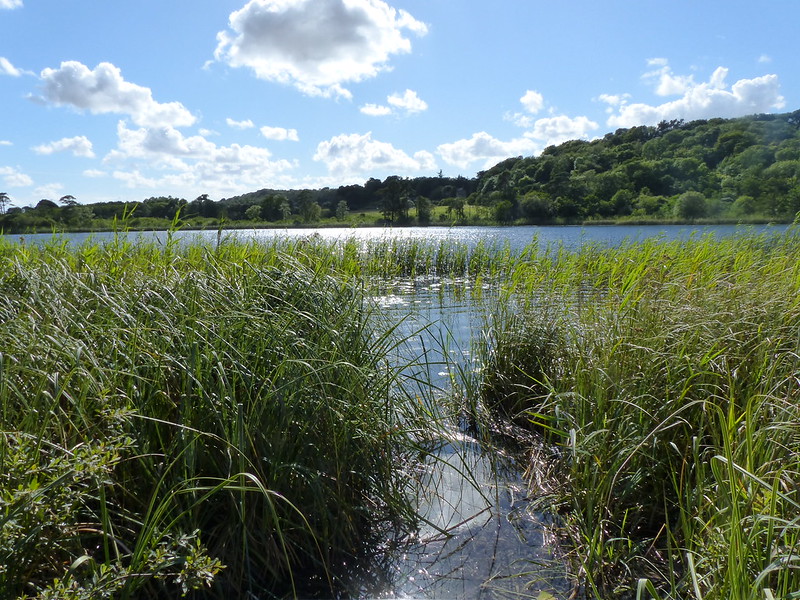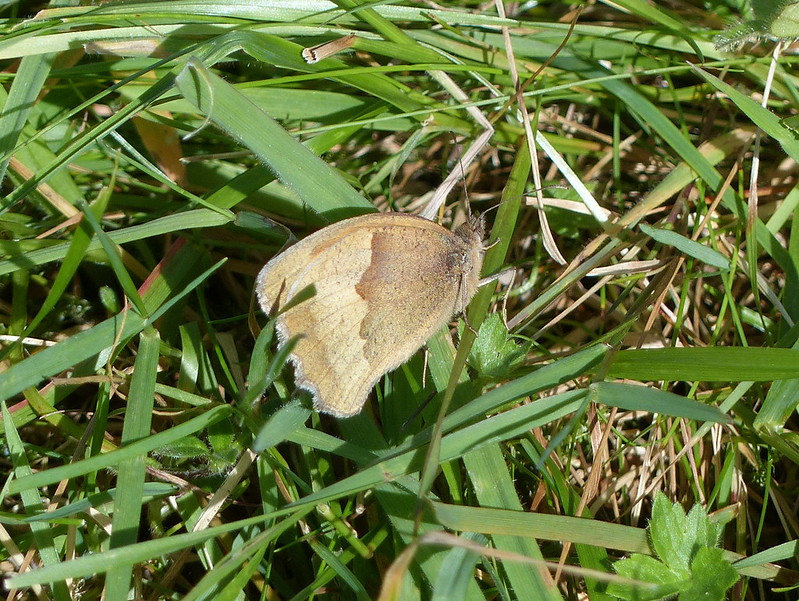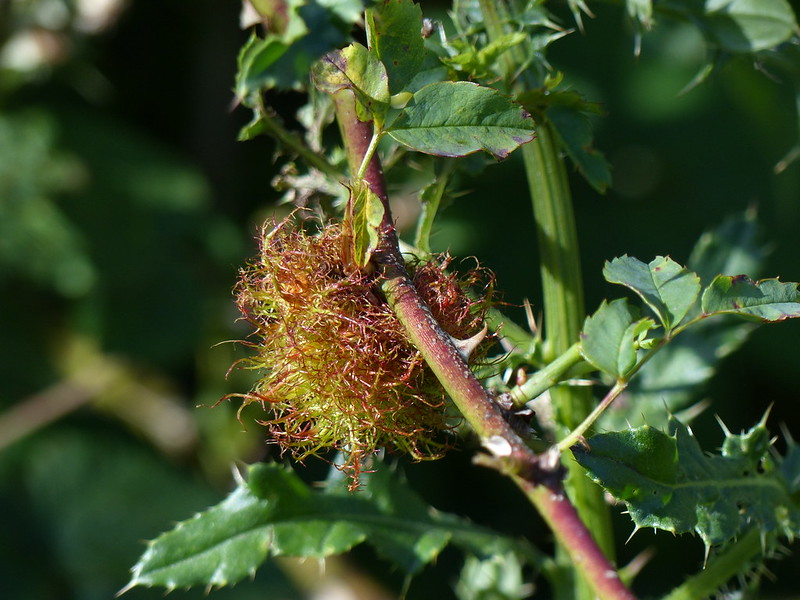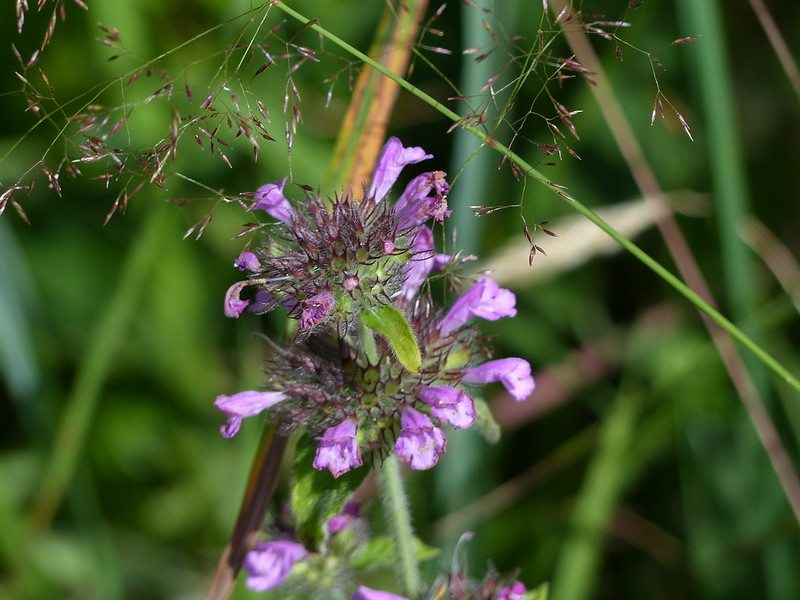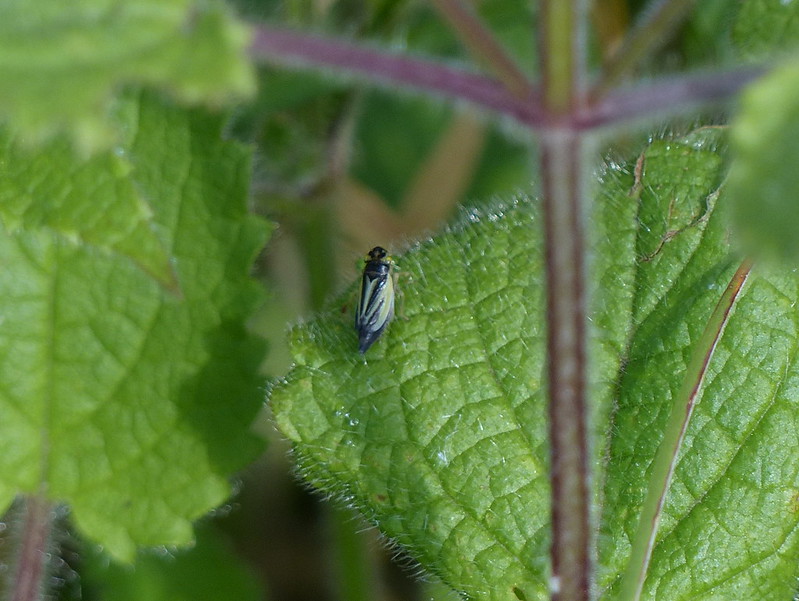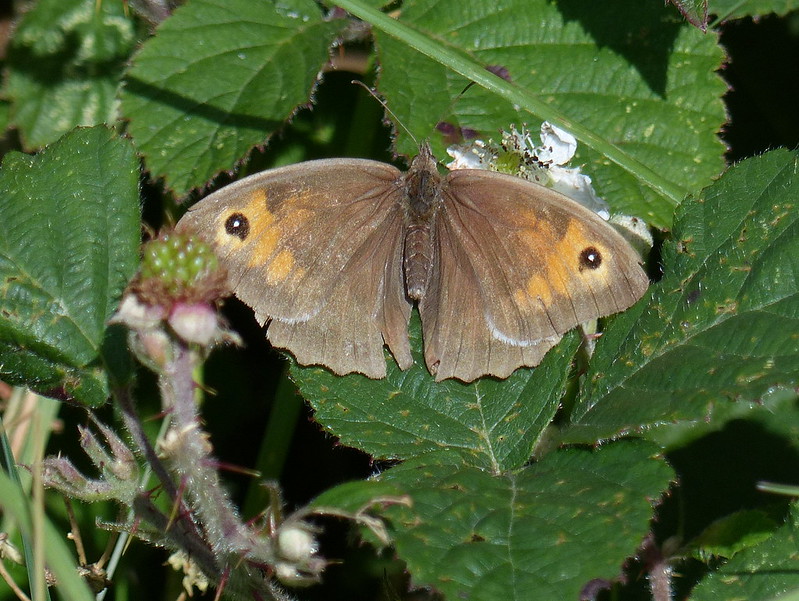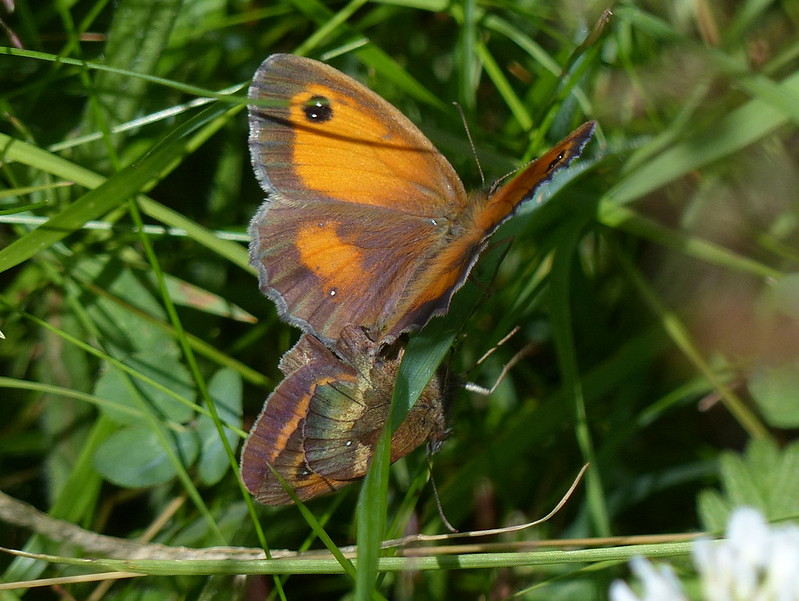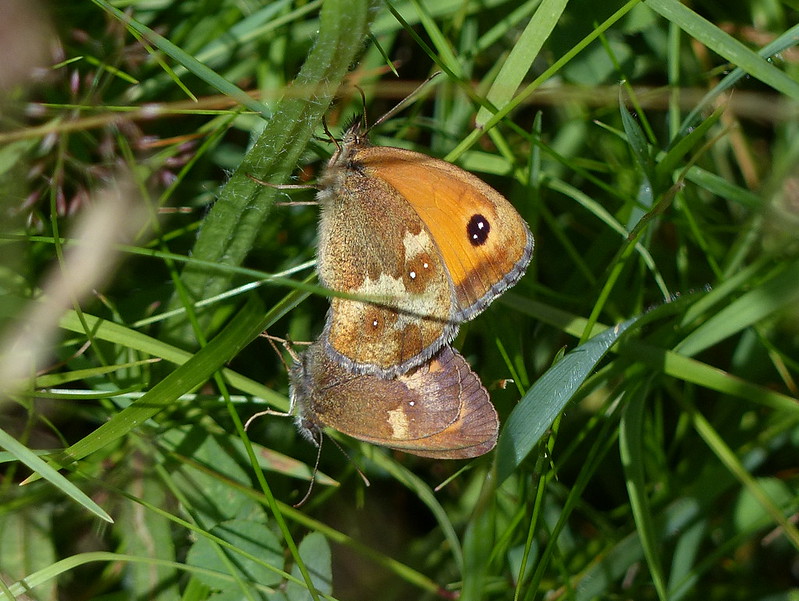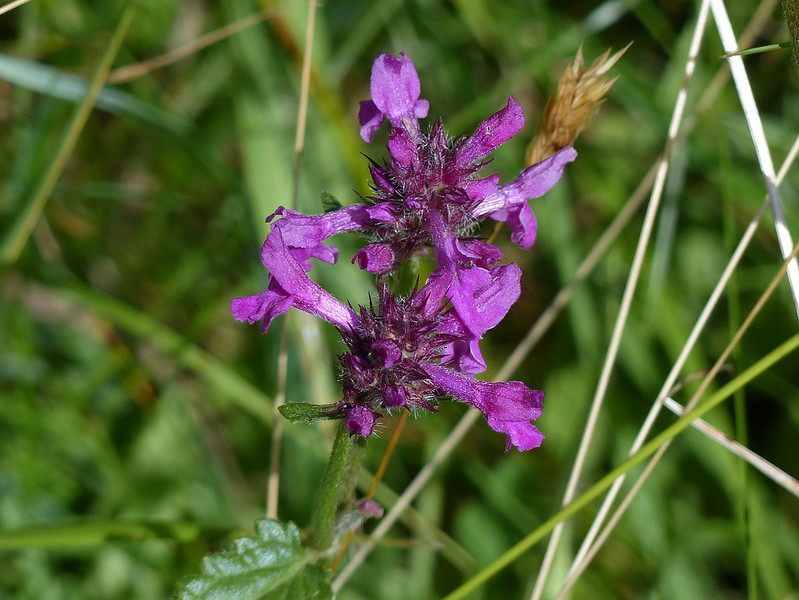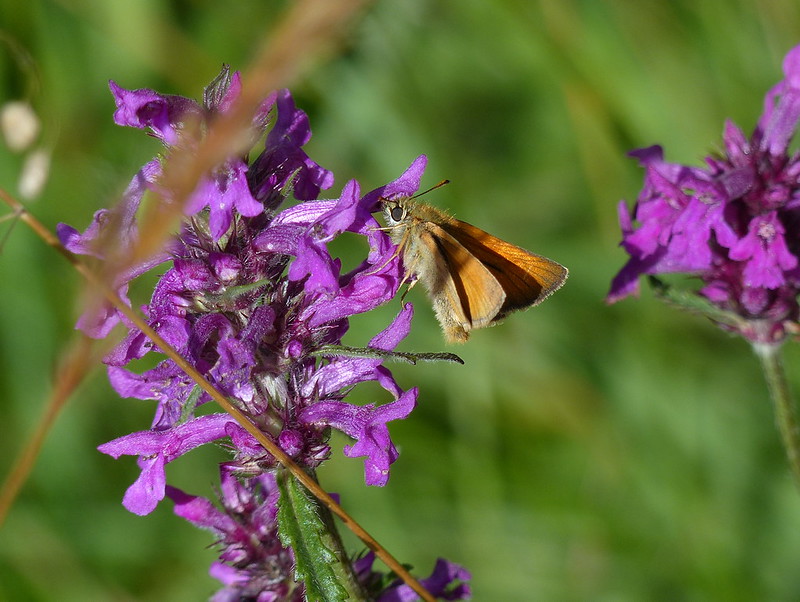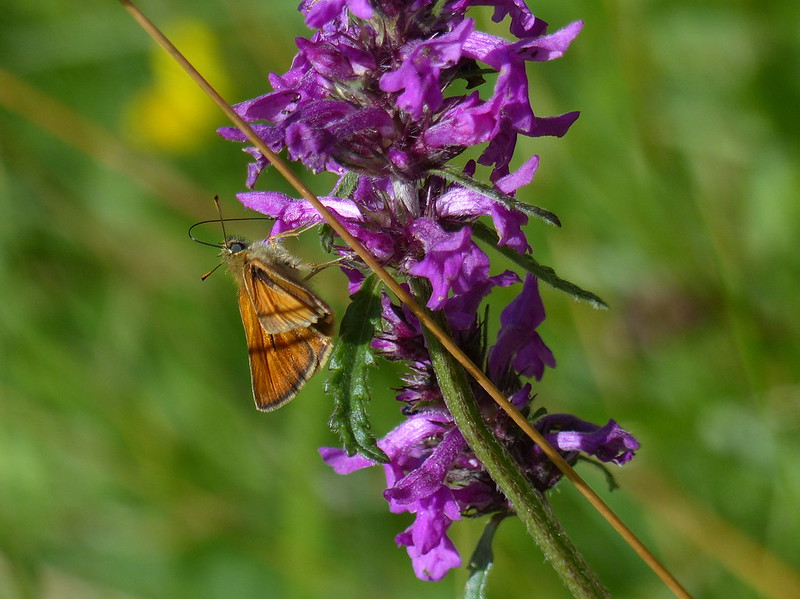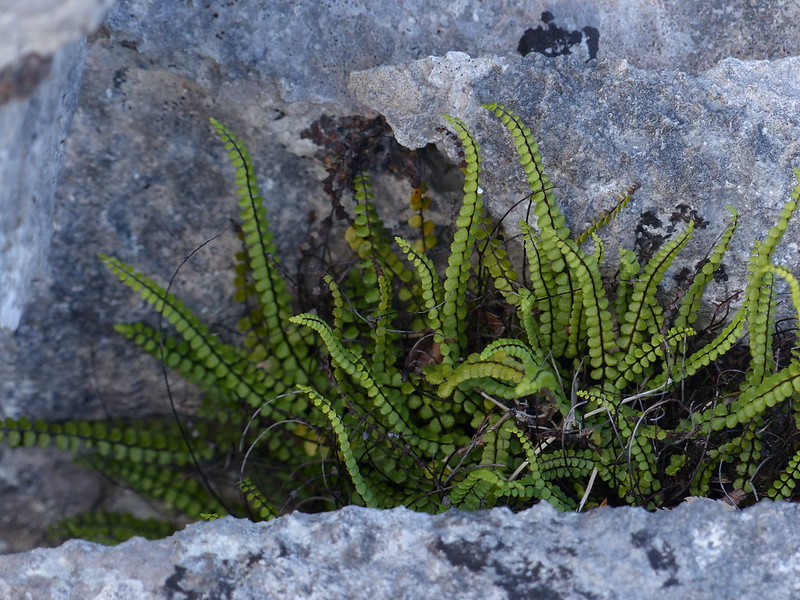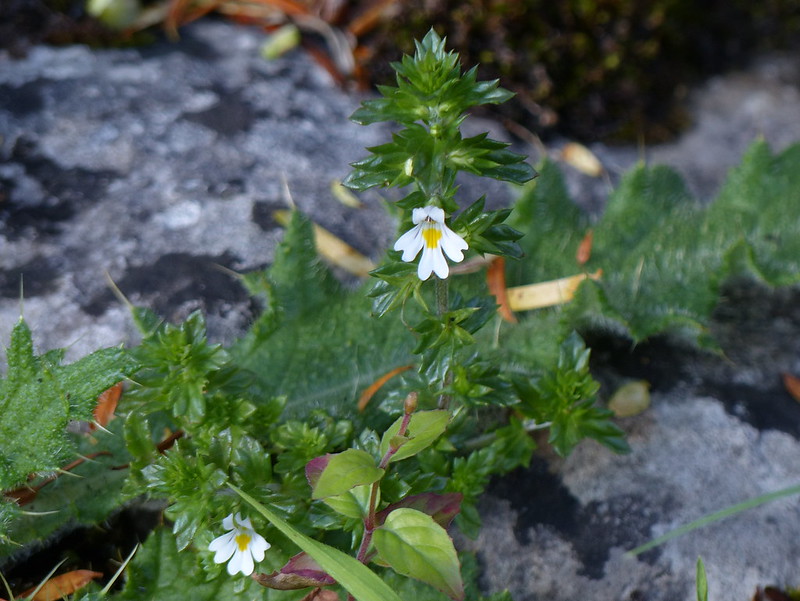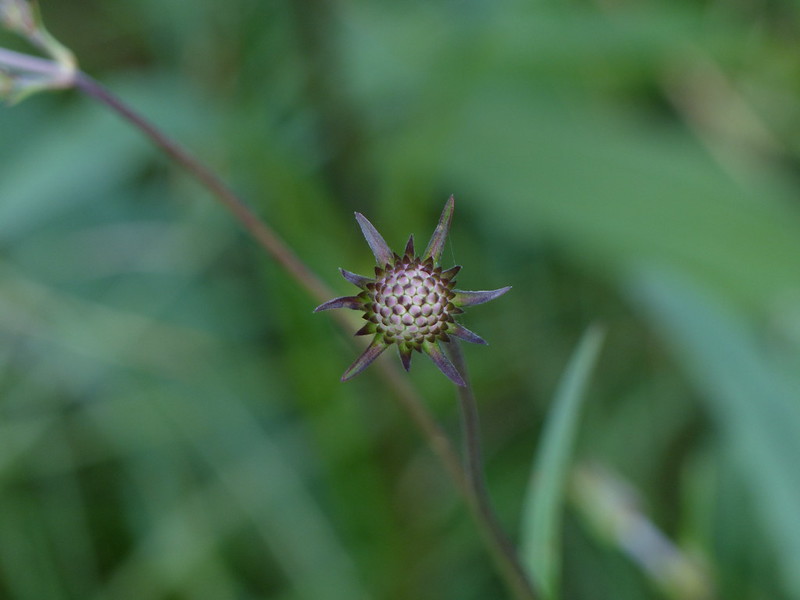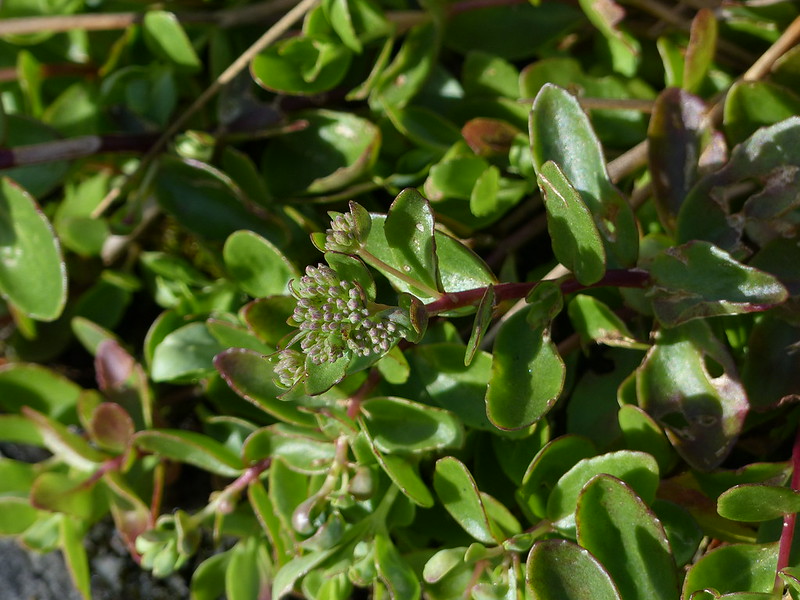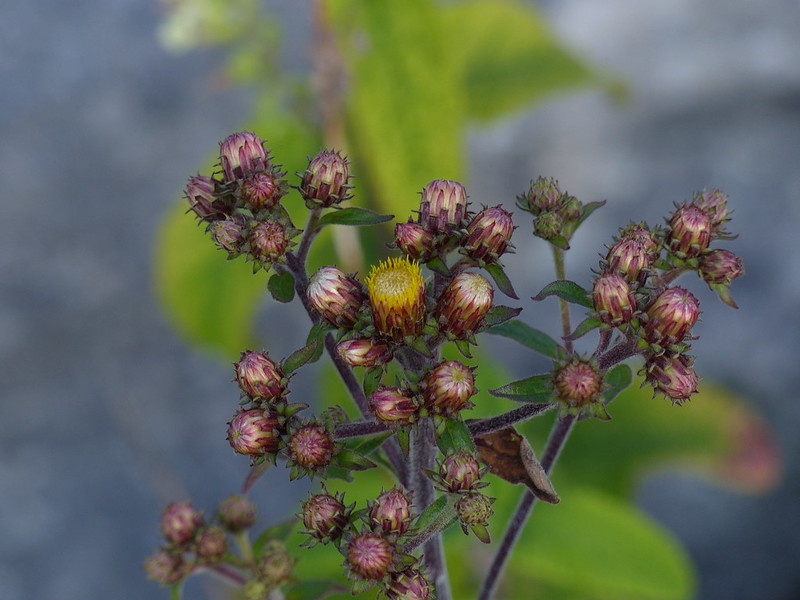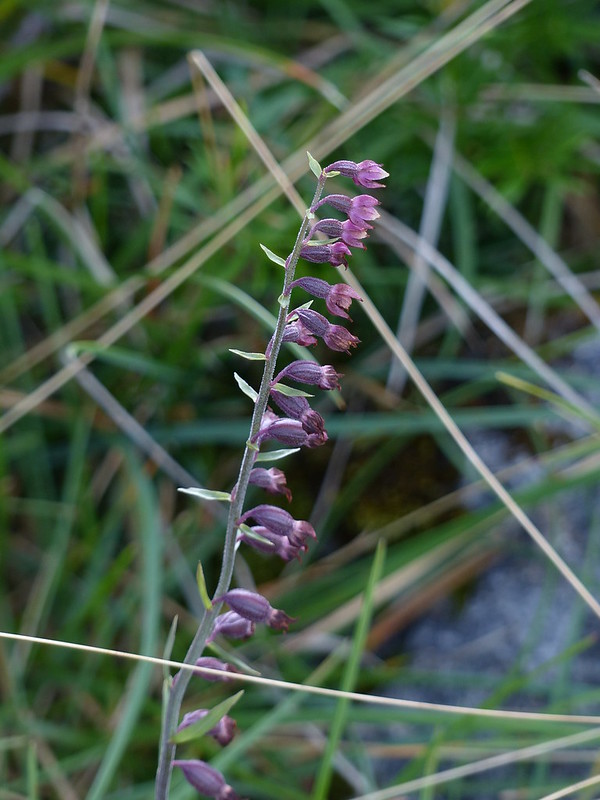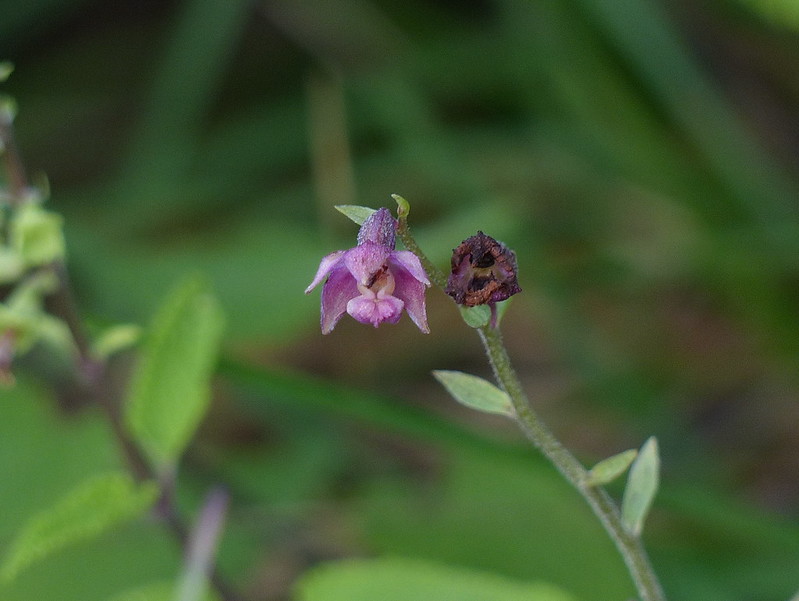
Peacock Butterfly on Hemp Agrimony.
When I finished my last post by musing about the origins of the name of the Scotch Argus butterfly and a possible link to the mythical giant Argus, I didn’t anticipate that the first photo in the subsequent post would be of a Peacock, whose Latin name recalls the same story. The Peacock was known at one time as the Peacock’s Tail. It’s Latin name is Inachus Io, recalling the Greek nymph Io and her father (variously a King, a Giant or a River God depending on which version you read). I’ve referred to this myth before, but here’s a slightly different version taken from Robert Graves ‘The Greek Myths, Volume One’:
“Io, daughter of the River-god Inachus, was a priestess of Argive Hera. Zeus, over whom Iynx, daughter of Pan and Echo, had cast a spell, fell in love with Io, and when Hera charged him with infidelity and turned Iynx into a wryneck as punishment, lied: ‘I have never touched Io.’ He then turned her into a white cow, which Hera claimed as hers and handed over for safe keeping to Argus Panoptes, ordering him: ‘Tether this beast secretly to an olive-tree at Nemea.’ But Zeus sent Hermes to fetch her back, and himself led the way to Nemea – or, some say, to Mycenae – dressed in woodpecker disguise. Hermes, though the cleverest of thieves, knew he could not steal Io without being detected by one of Argus’s hundred eyes; he therefore charmed him asleep by playing the flute, crushed him with a boulder, cut off his head and released Io. Hera, having placed Argus’s eyes in the tail of a peacock, as a constant reminder of his foul murder, set a gadfly to sting Io and chase her all over the world.”
Trickery, lust, infidelity, duplicity, jealousy, deceit, murder, revenge – the Greek Gods seem all too human in this tale, as in many others.

Here’s Hermes slaying Argus, from an Athenian vase now held in the Kunsthistorisches Museum, Vienna. Argus seems quite awake in this pictorial version of the story. In some tellings, Io is irresistible even after her metamorphosis into bovine form, which is hard to imagine; her portrayal on this ancient pot doesn’t really help in that regard.
Panoptes, incidentally, means ‘all-seeing’, an attribute to which I can definitely not lay claim…
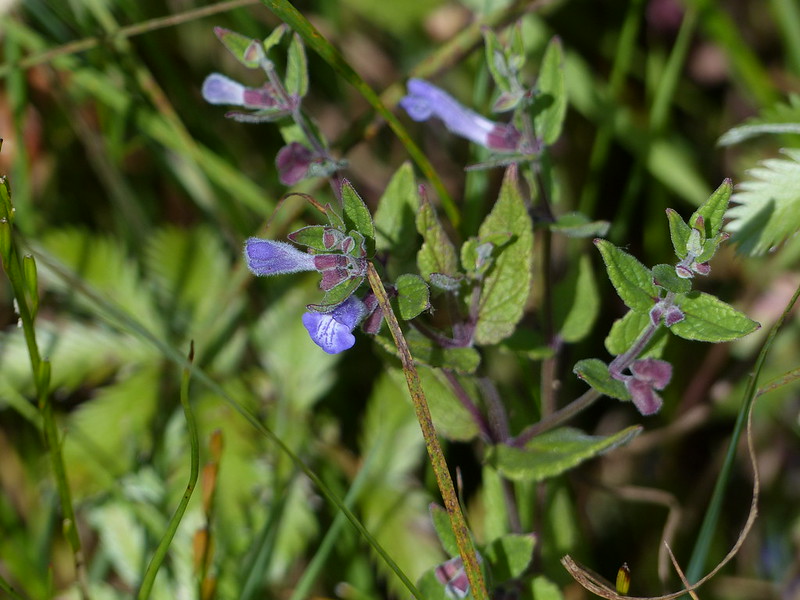
Skullcap.
Skullcap is apparently a very common plant, but this is the first time I can recall spying it in flower. I found it in the increasingly wet meadow at the end of Hawes Water.
“Skullcap, Scutelleria galericulata, is a delicate species of fens and banks of ponds, canals and slow rivers, locally common throughout much of Britain. The plant’s English and Latin names both derive from the shape of the blue flowers, which reminded early botanists of the leather helmet or galerum worn by Roman soldiers.”
from Flora Britannica by Richard Mabey.
“Sufferers from nervous disorders might be advised to take skullcap in tablet form, for the plant produces a volatile oil, called scutellarin, which is one of the best treatments for such afflictions ever discovered. The plant is dried, powdered and infused in boiling water to make a strong tonic, which calms spasms and hysteria, and relieves epilepsy and St Vitus’s dance. However, care must be taken: it is a powerful drug, and an overdose might induce the very symptoms which, at correct dosages, it alleviates.”
from Reader’s Digest Field Guide to the Wild Flowers of Britain.
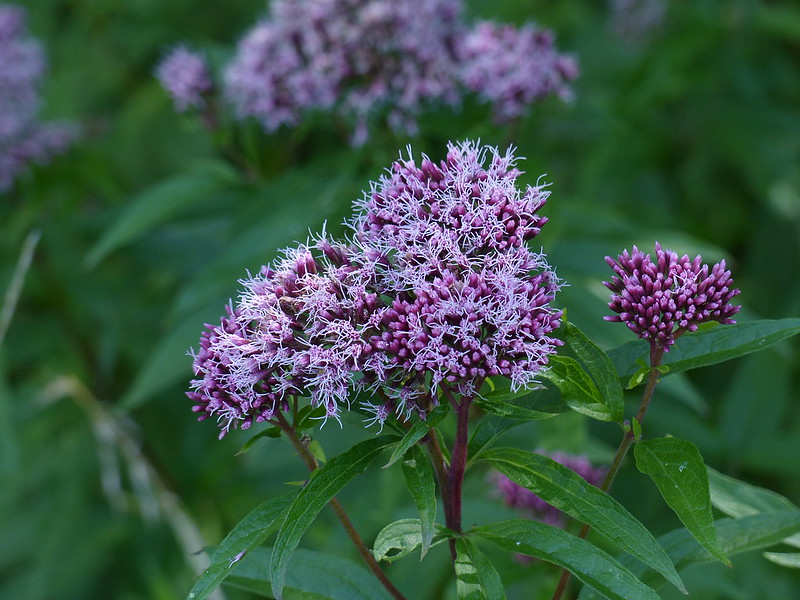
I wondered whether the colours of Hemp Agrimony, often somewhat washed out and insipid in my photos, might show to better effect in shade: I think it worked?
I’ve certainly had a bumper year for spotting Common Lizards. The two I met basking in their usual spot, on the edging along the boardwalk by Hawes Water, were, once again, quite different from each other in their markings and colour…
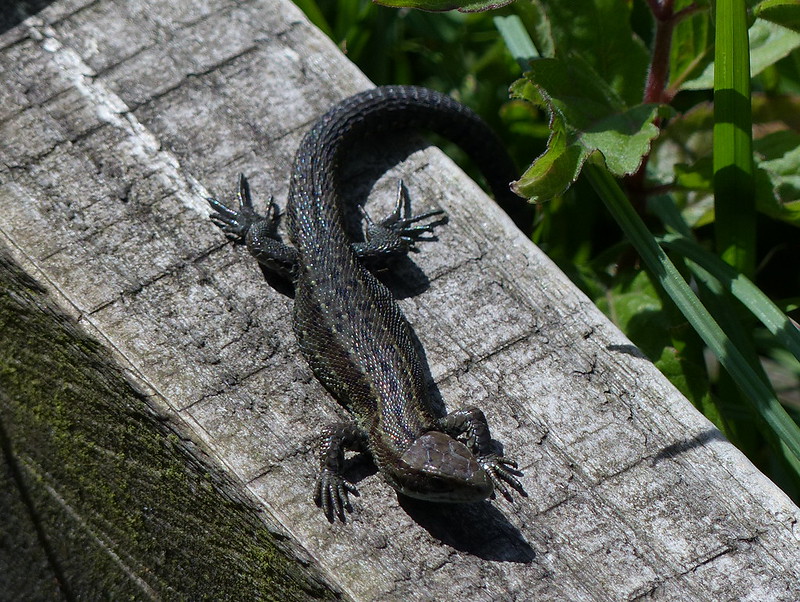
I particularly admired the go faster stripes on this specimen…

I wondered whether the variation in colouring might reflect the gender of the lizards and have since discovered that you can sex lizards this way, but need to see their undersides in order to do so. I suspect that I’m never going to be quick enough to get my mitts on them to find out. Never mind, I’m happy just to see them.
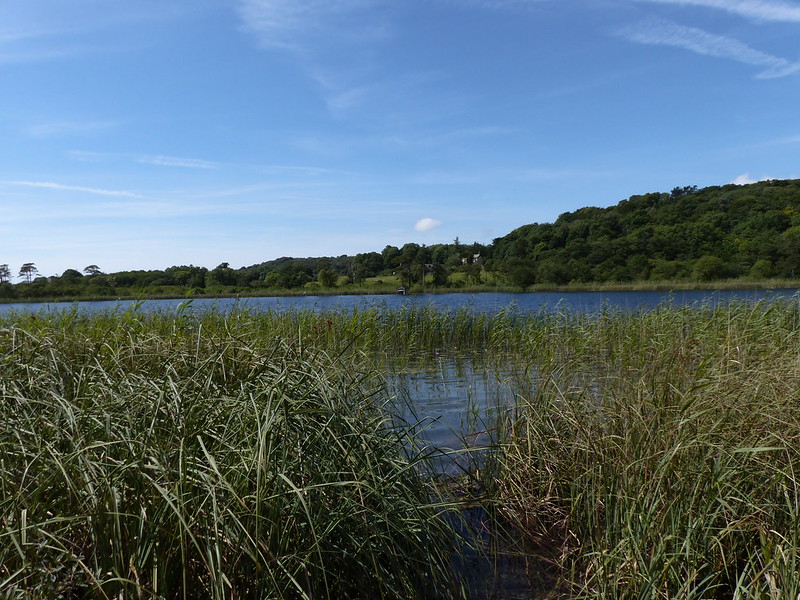
Hawes Water.
I presume that these alien monstrosities…
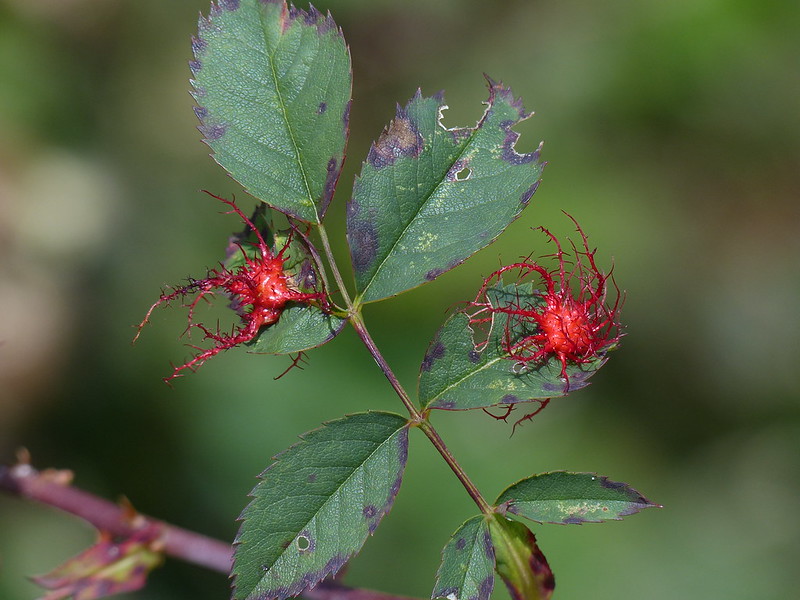
…are the early stages, or small examples, of Robin’s Pincushion Gall, or are something similar. They’re nothing like as hairy as Pincushion Galls usually are though, and those generally develop on the stems. You can perhaps tell from the picture that each outlandish, starfish-like protuberance is mirrored on the reverse of the leaf. Quite astonishing, even before you know about the asexual lifestyle of the wasps which develop within.

A male Small White, I think.
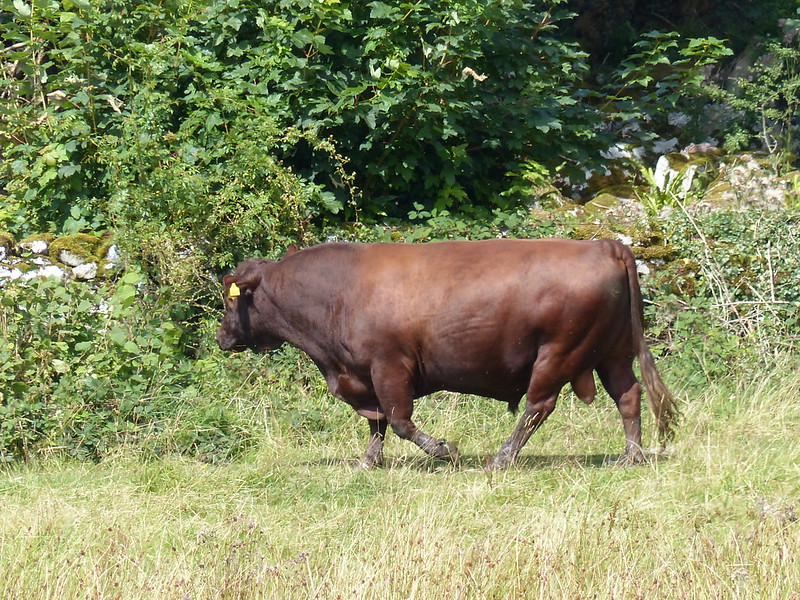
Another Bull in a field with a footpath, in fact he was walking along the path, but I was turning off in another direction and, anyway, he didn’t seem remotely interested in me.
This walk was memorable for quite an abundance and variety of butterflies. Later on, I met a number of Lepidopterists, one of whom asked me if I’d seen any Brown Hairstreaks, which is what they were on the look-out for. I hadn’t. Not that I would have recognised one if I had. I did see lots of Brimstones though…
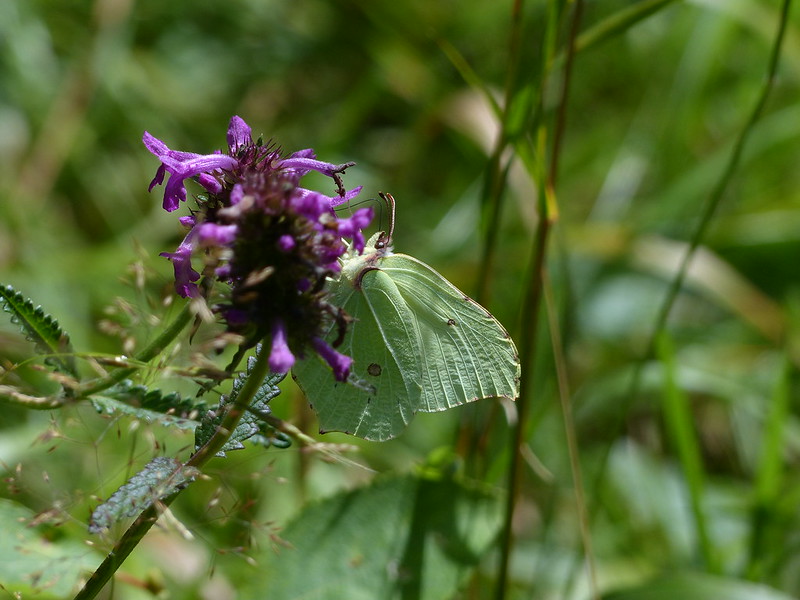
Brimstone on Betony.
They seemed to be patronising the purple flowers by preference, which shows off their yellow to good effect. Is it vanity, do you think?
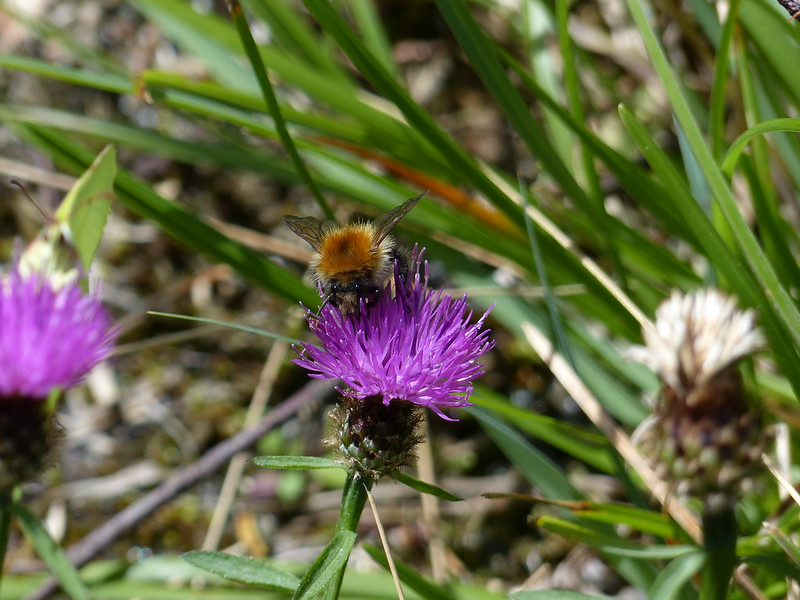
Bumblebee on Knapweed.
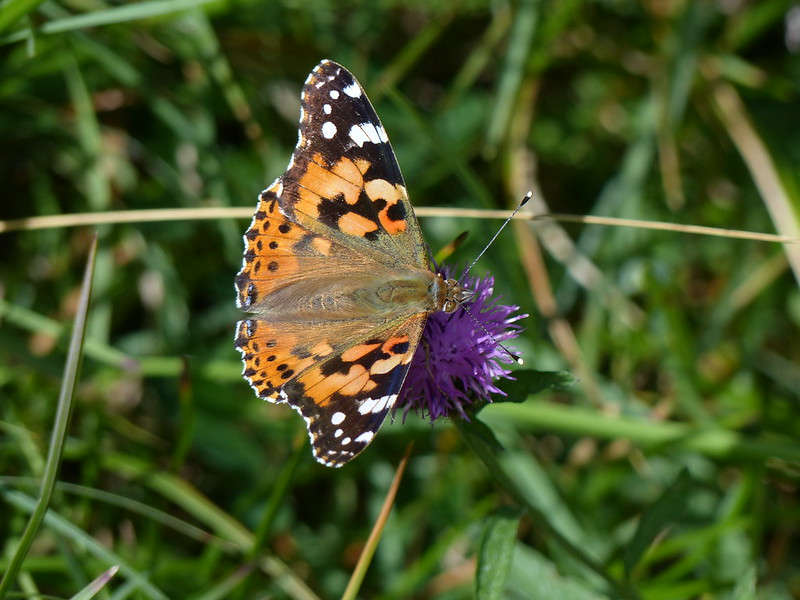
Painted Lady.
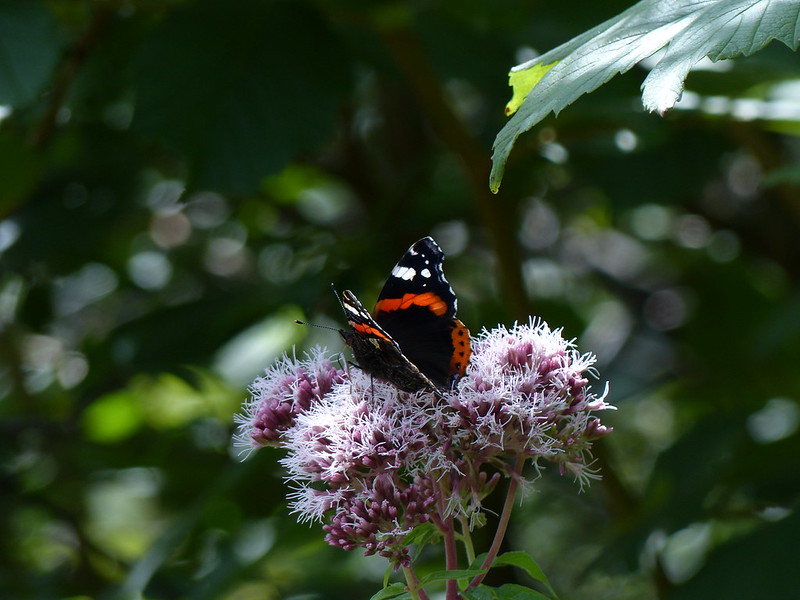
Red Admiral.
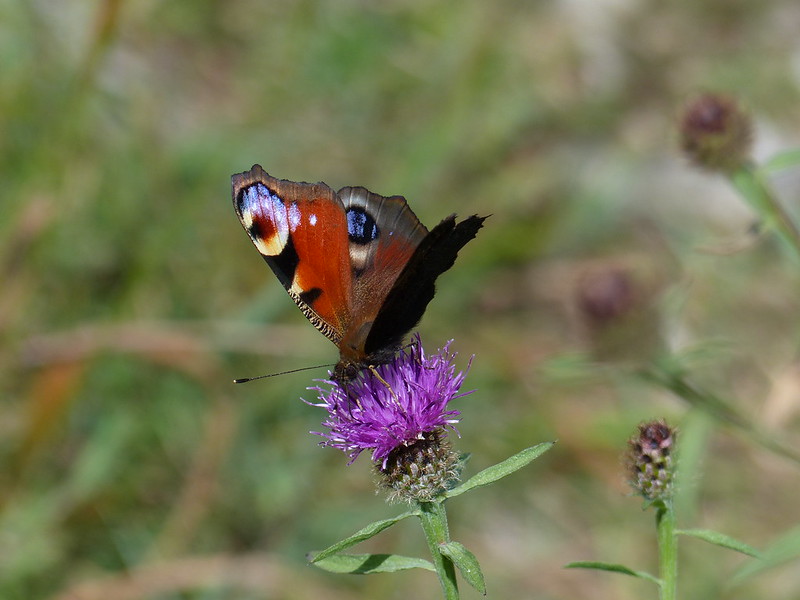
Another Peacock’s-tail.
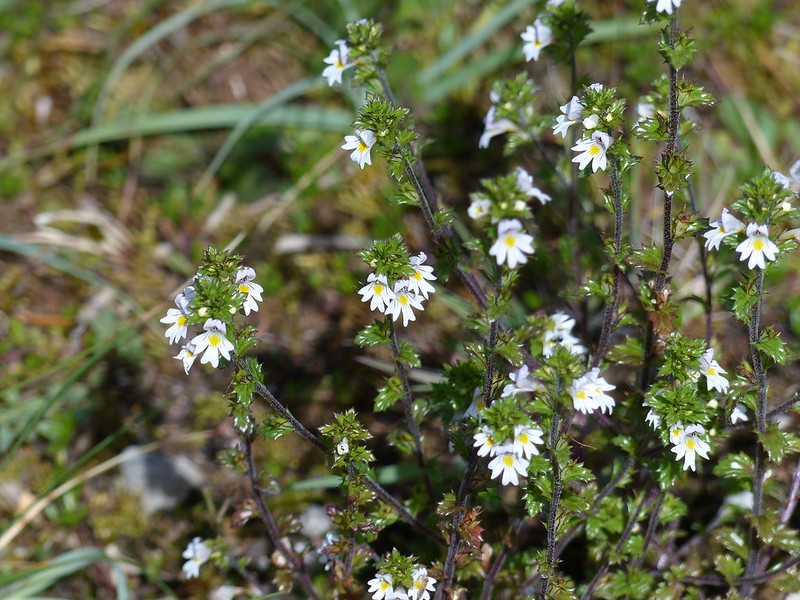
Eyebright.
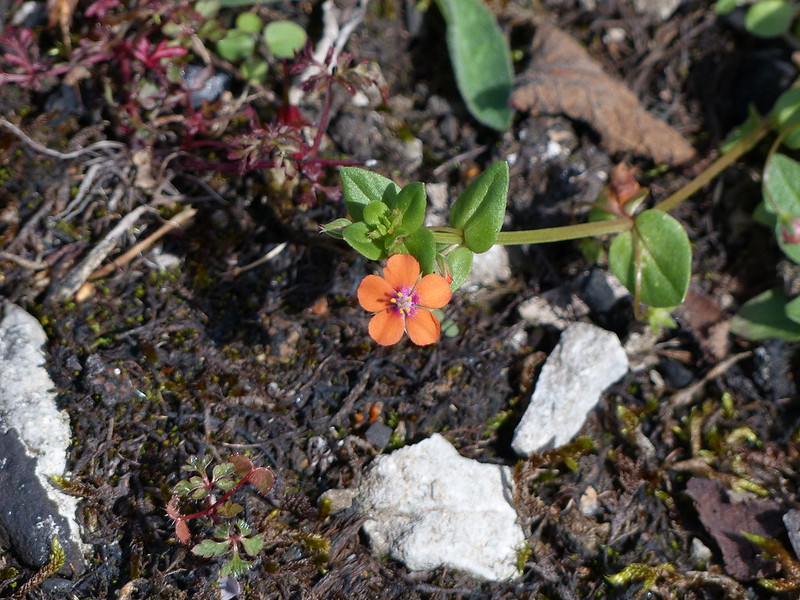
Scarlet Pimpernel.
Scarlet Pimpernel is tiny, but not really elusive at all, unlike the character named after the flower, scourge of the French Revolutionaries. Local names for the flower included ‘change-of-the-weather’, ‘poor man’s weatherglass’ and ‘shepherd’s sundial’, due to its habit of closing whenever the skies are dull and for large parts of the day, a property, it must be said, which it shares with many other flowers.
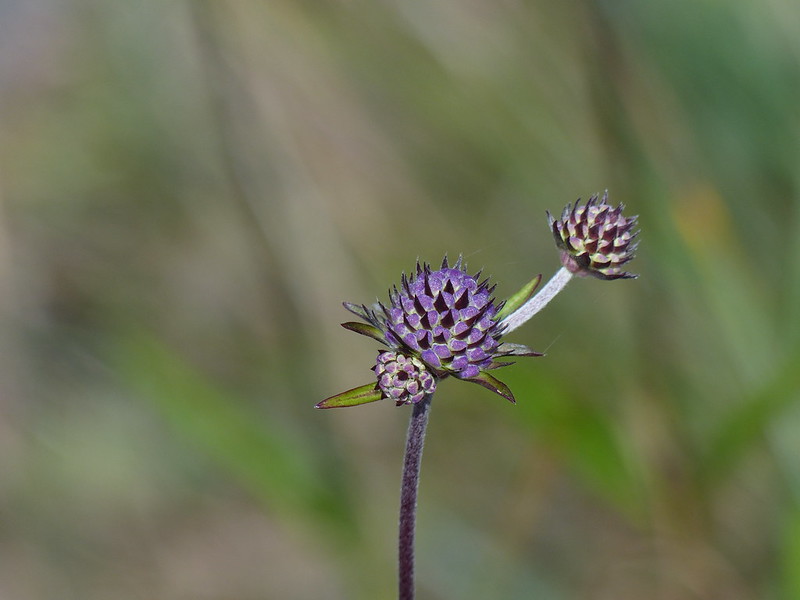
The mystery plant – looking increasingly like some sort of Scabious, as Simon suggested.

Grasshopper.
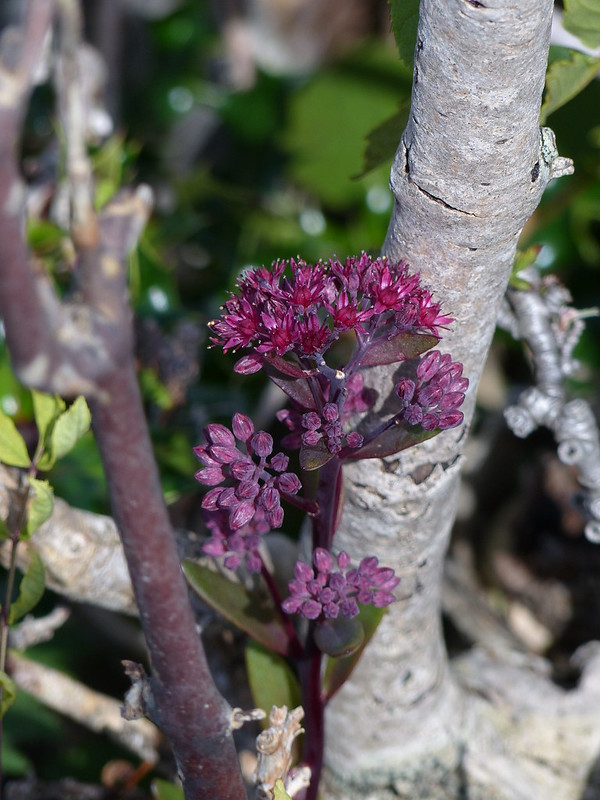
I think this might be Orpine, or Sedum telephium, the same Sedum, or Ice Plant which we grow in our gardens.
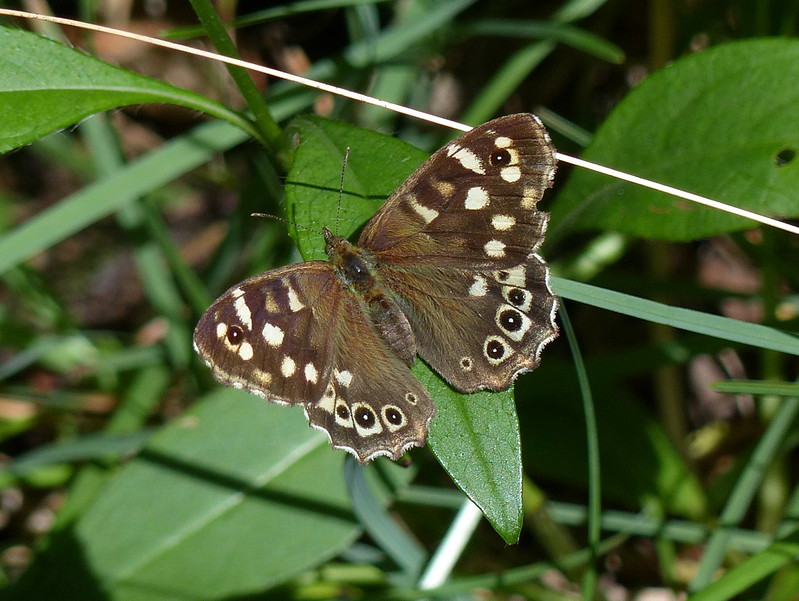
Speckled Wood.
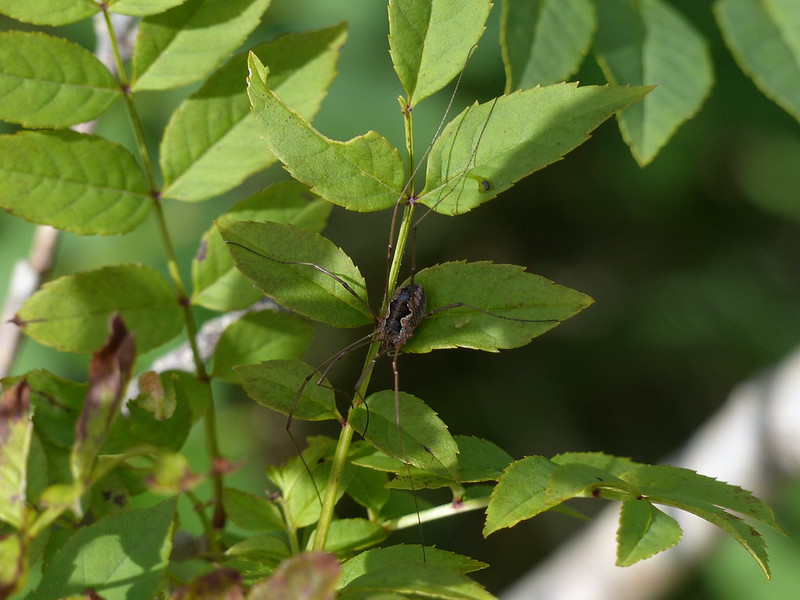
A Harvestman. Definitely not a spider or a daddy-longlegs.
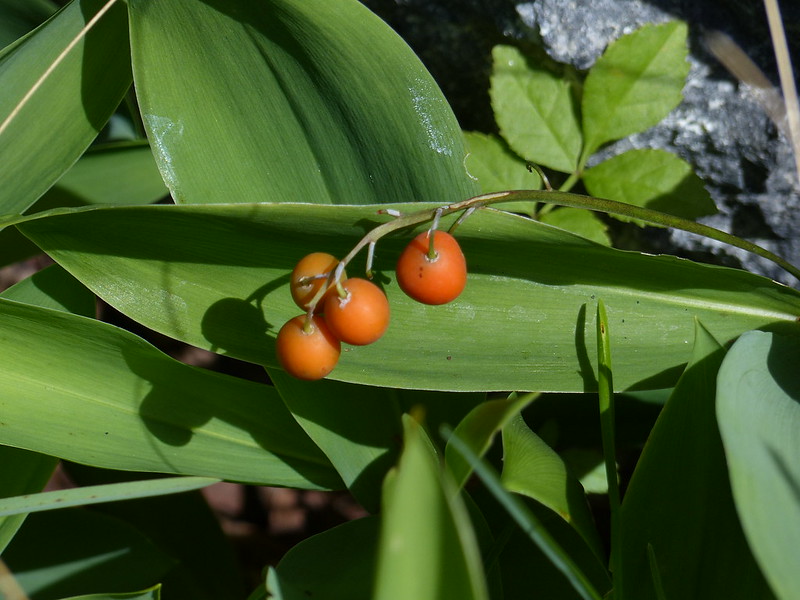
I was a bit surprised to see the orange berries on the Lily-of-the-valley; I’ve never seen them before. Apparently, they rarely develop, with the plant usually spreading by sending up new shoots.
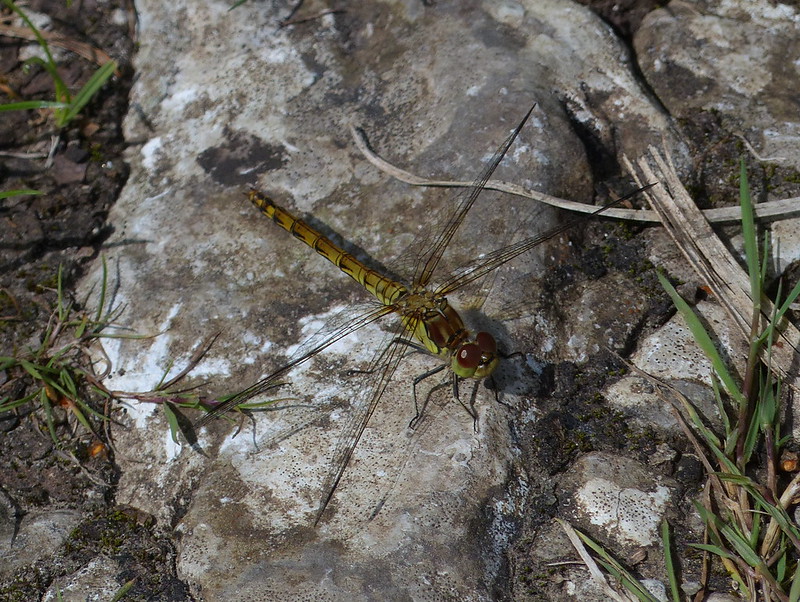
Female Common Darter.
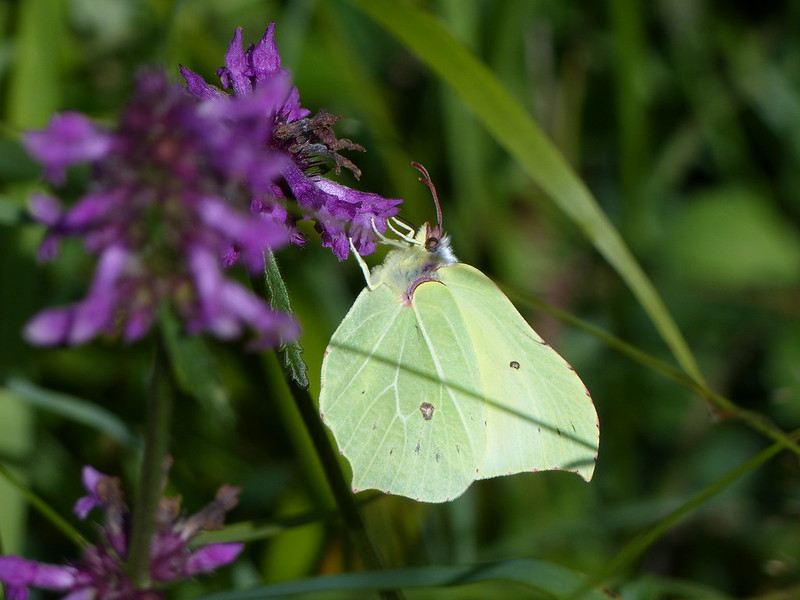
Another Brimstone.
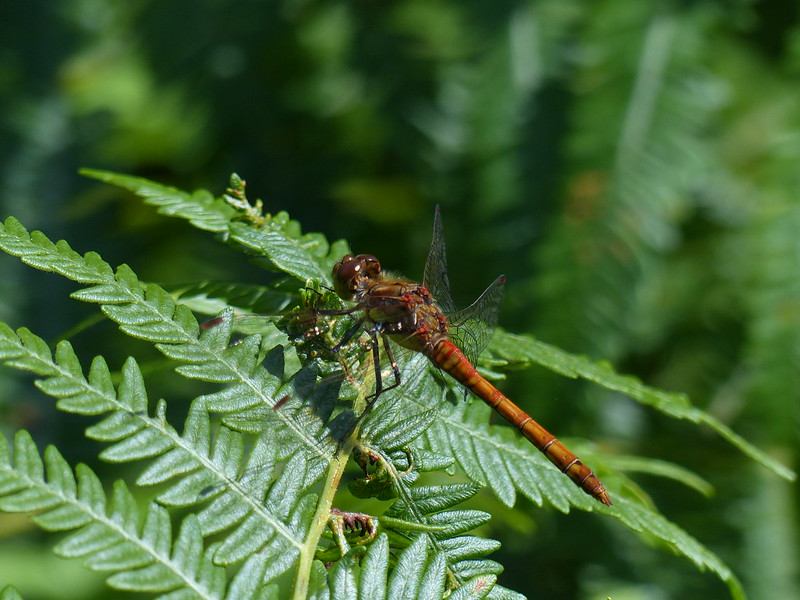
Male Common Darter.

